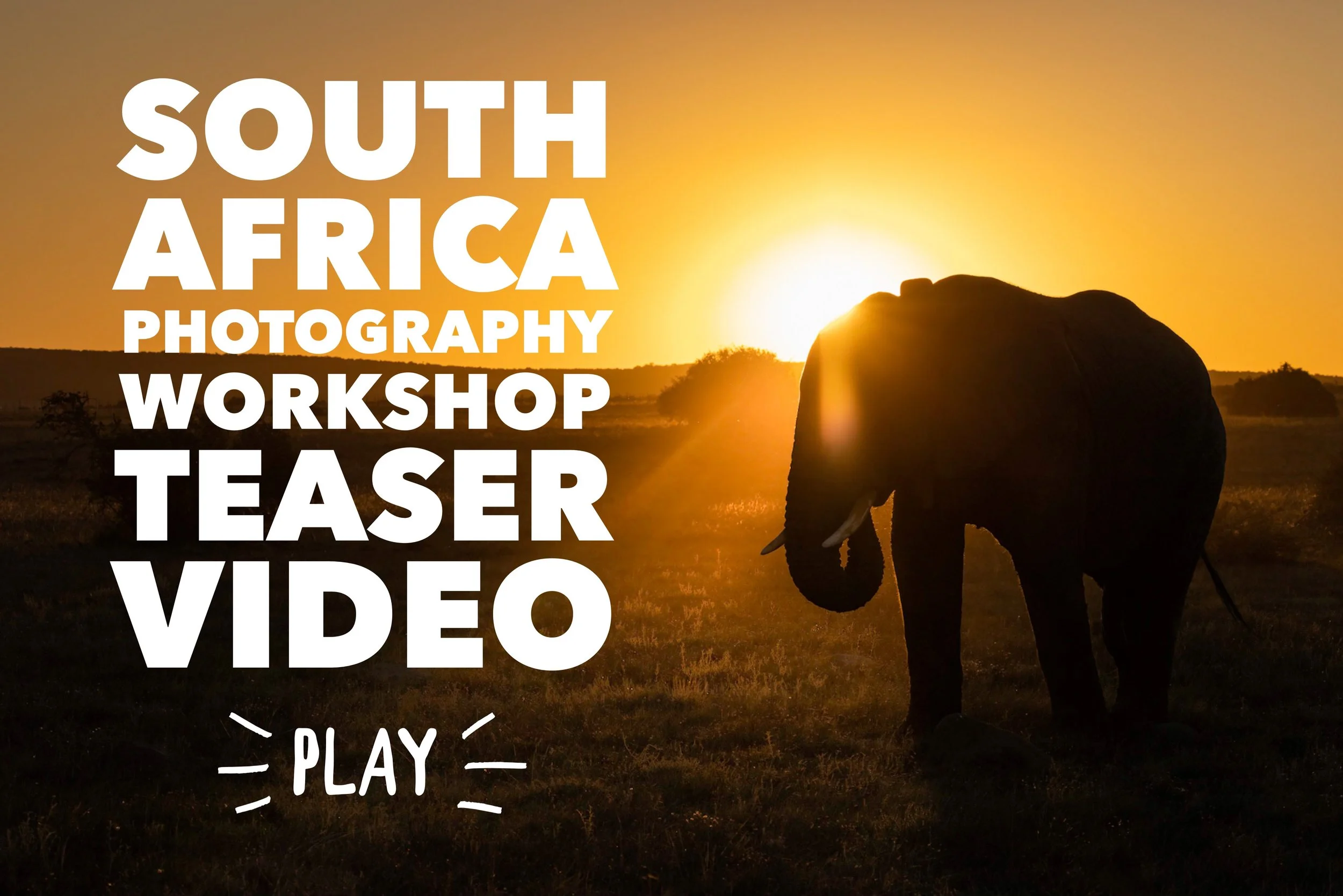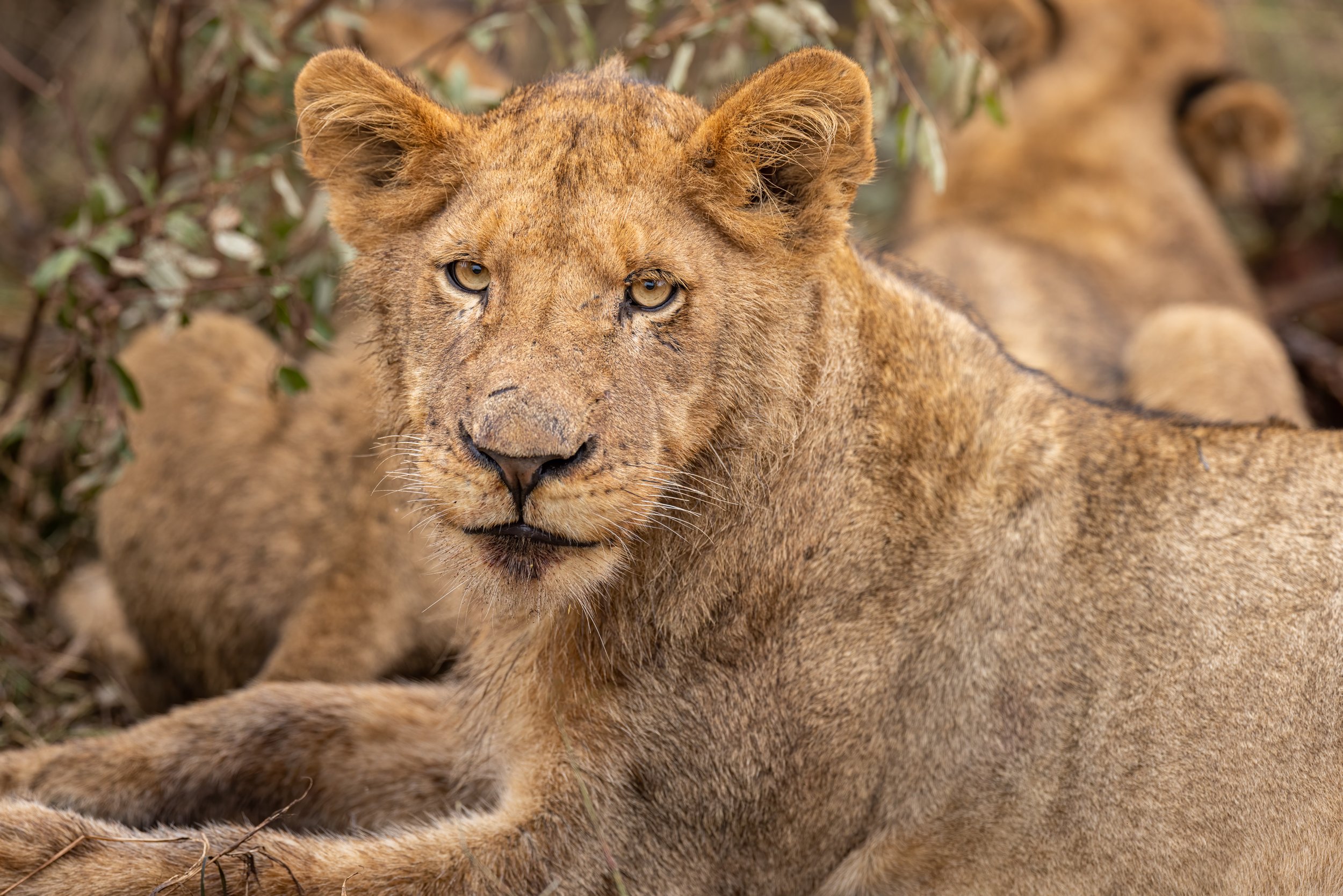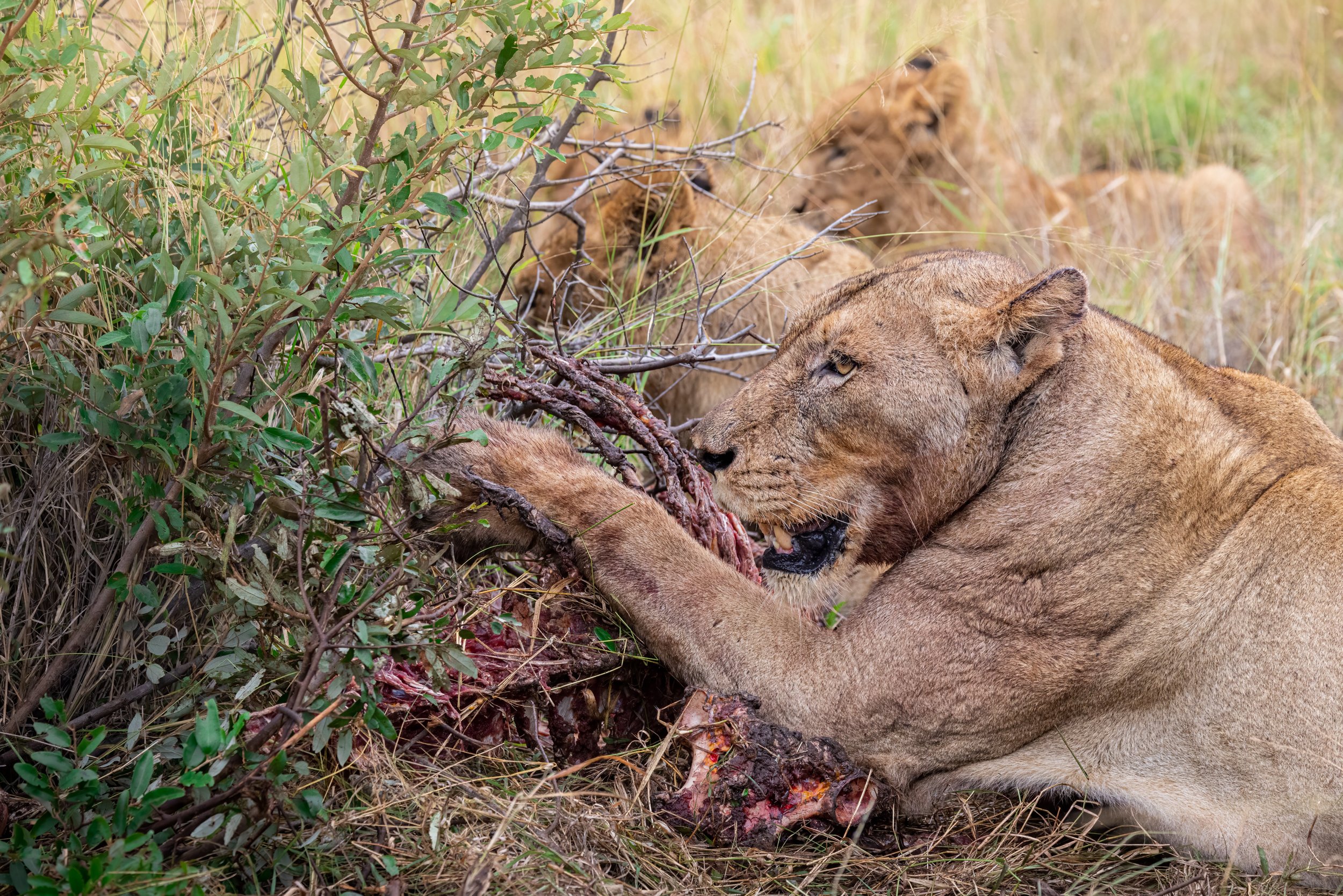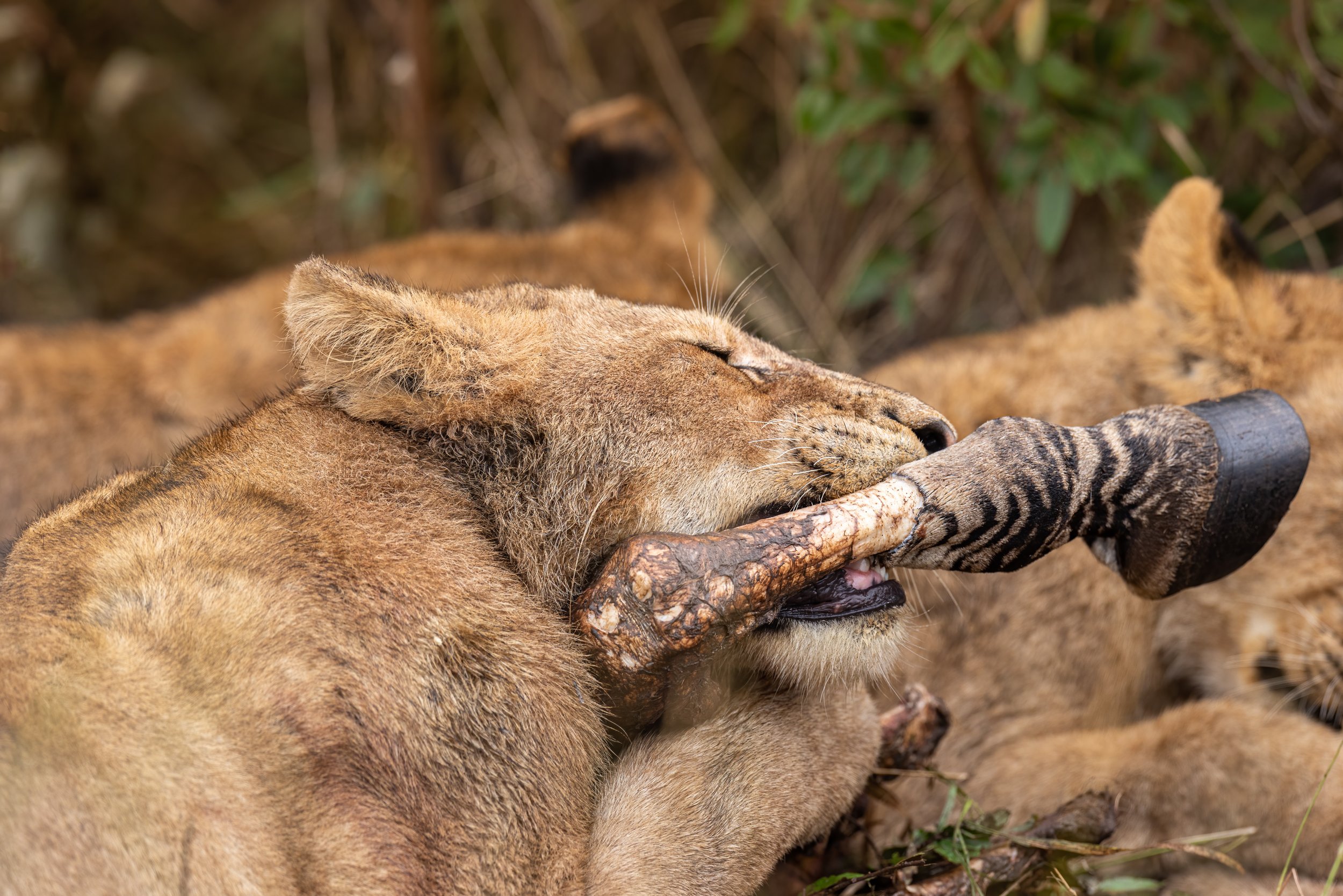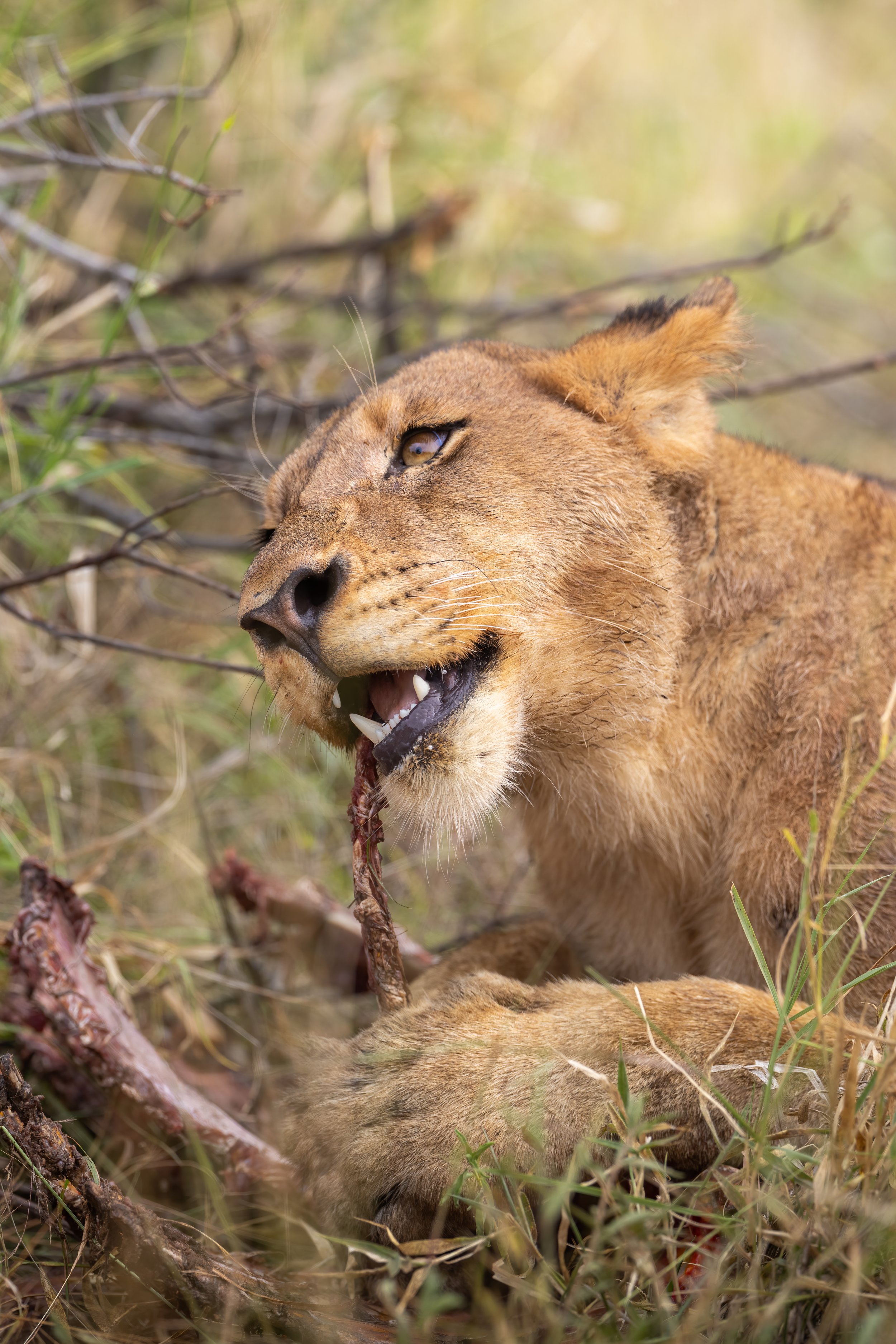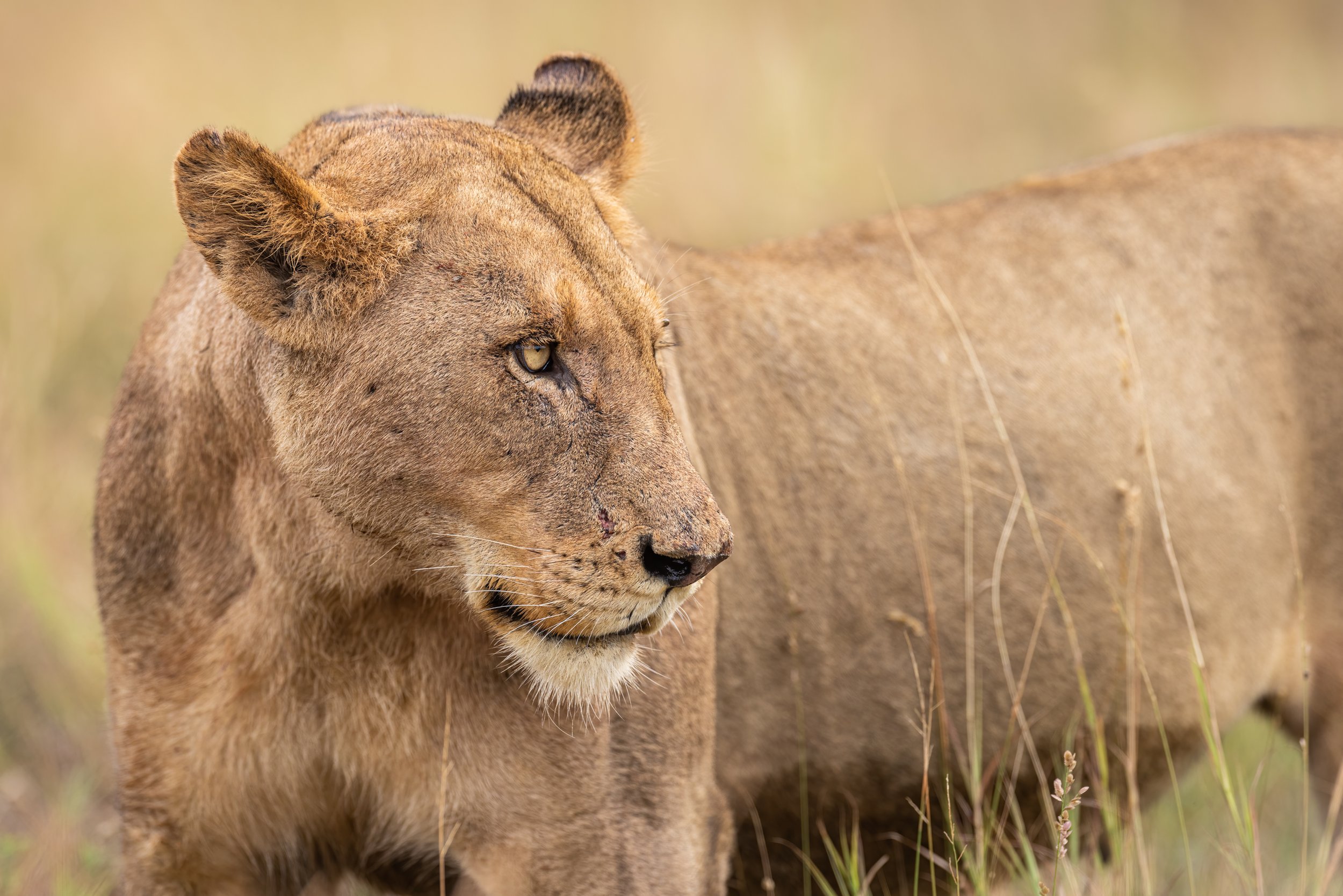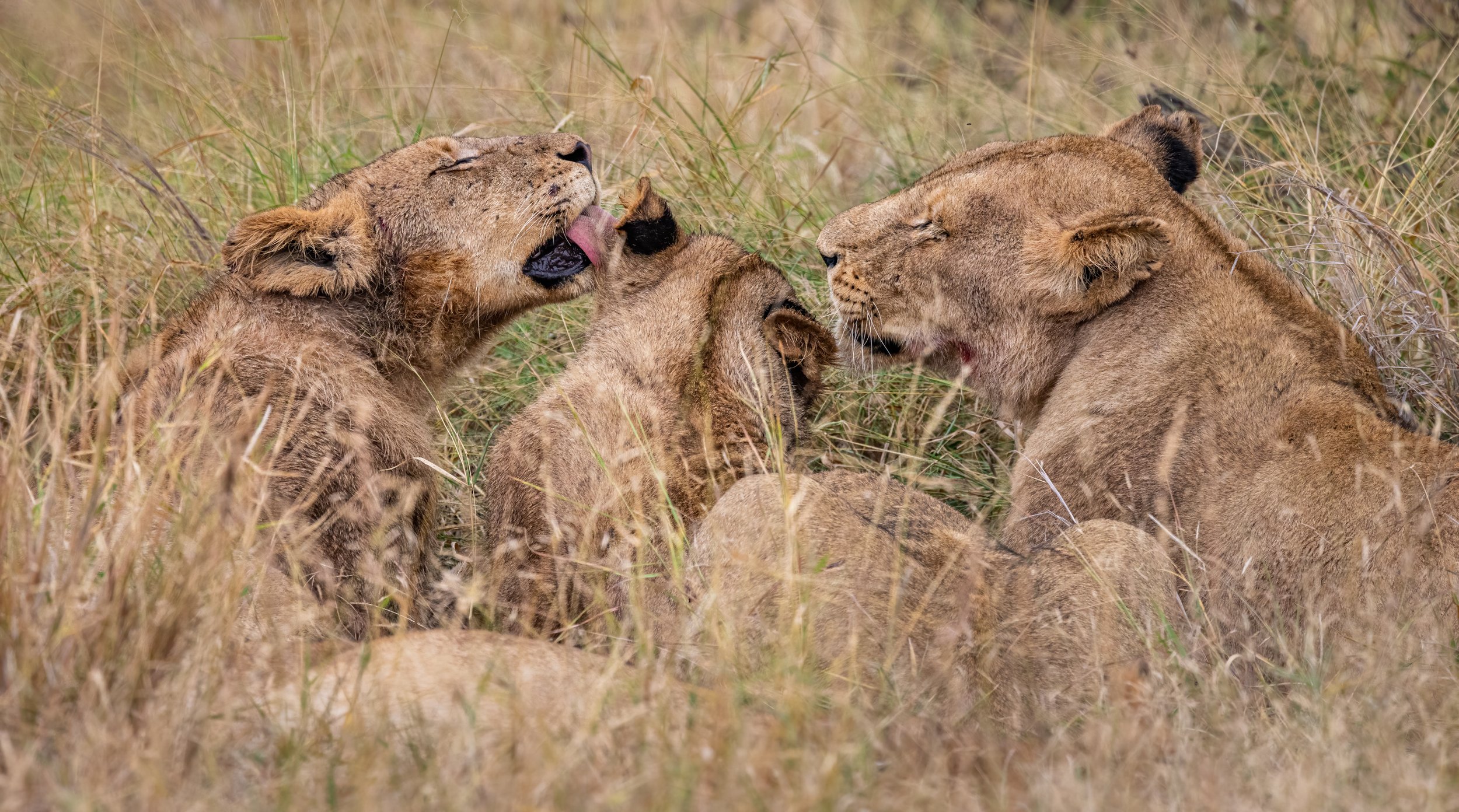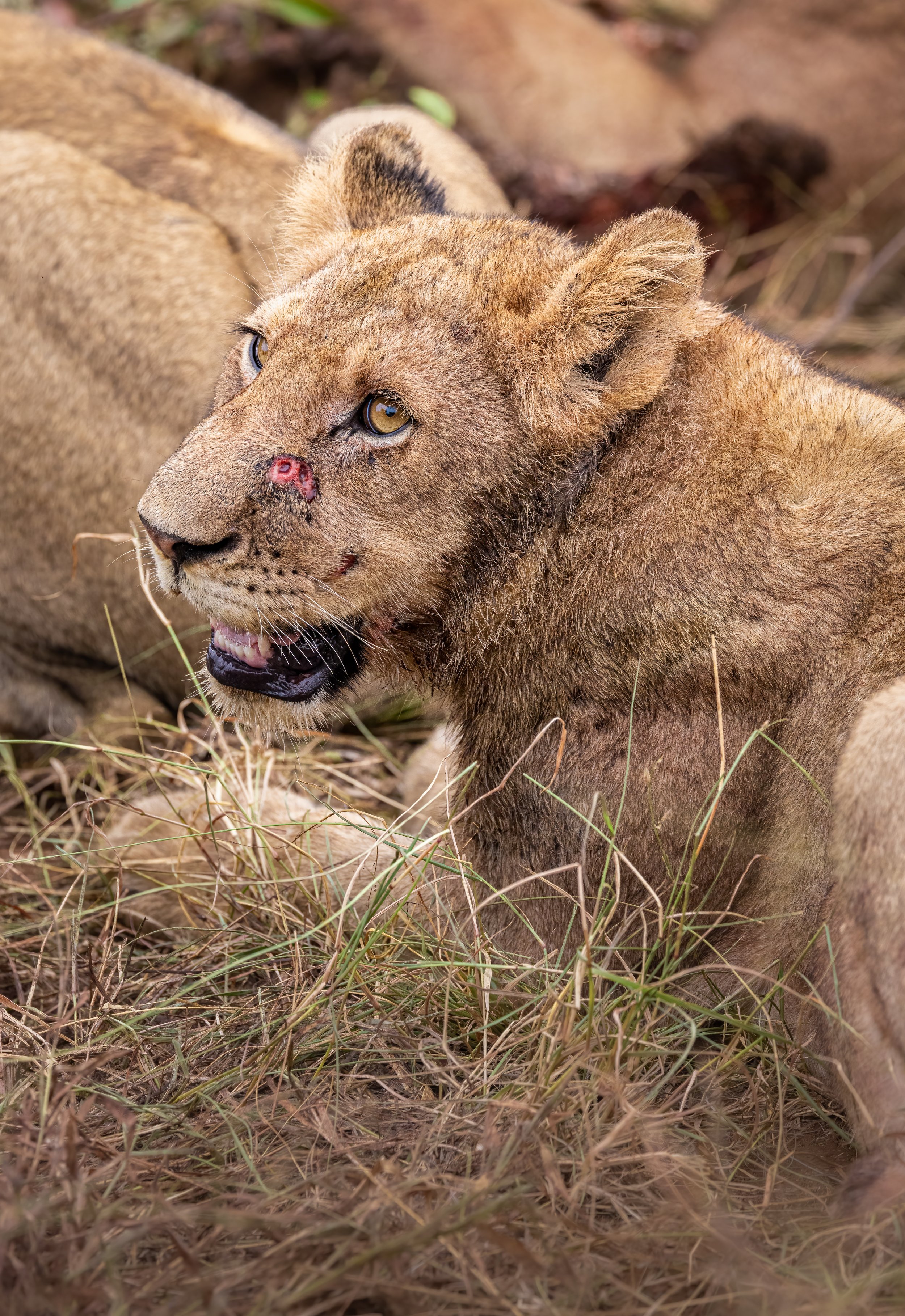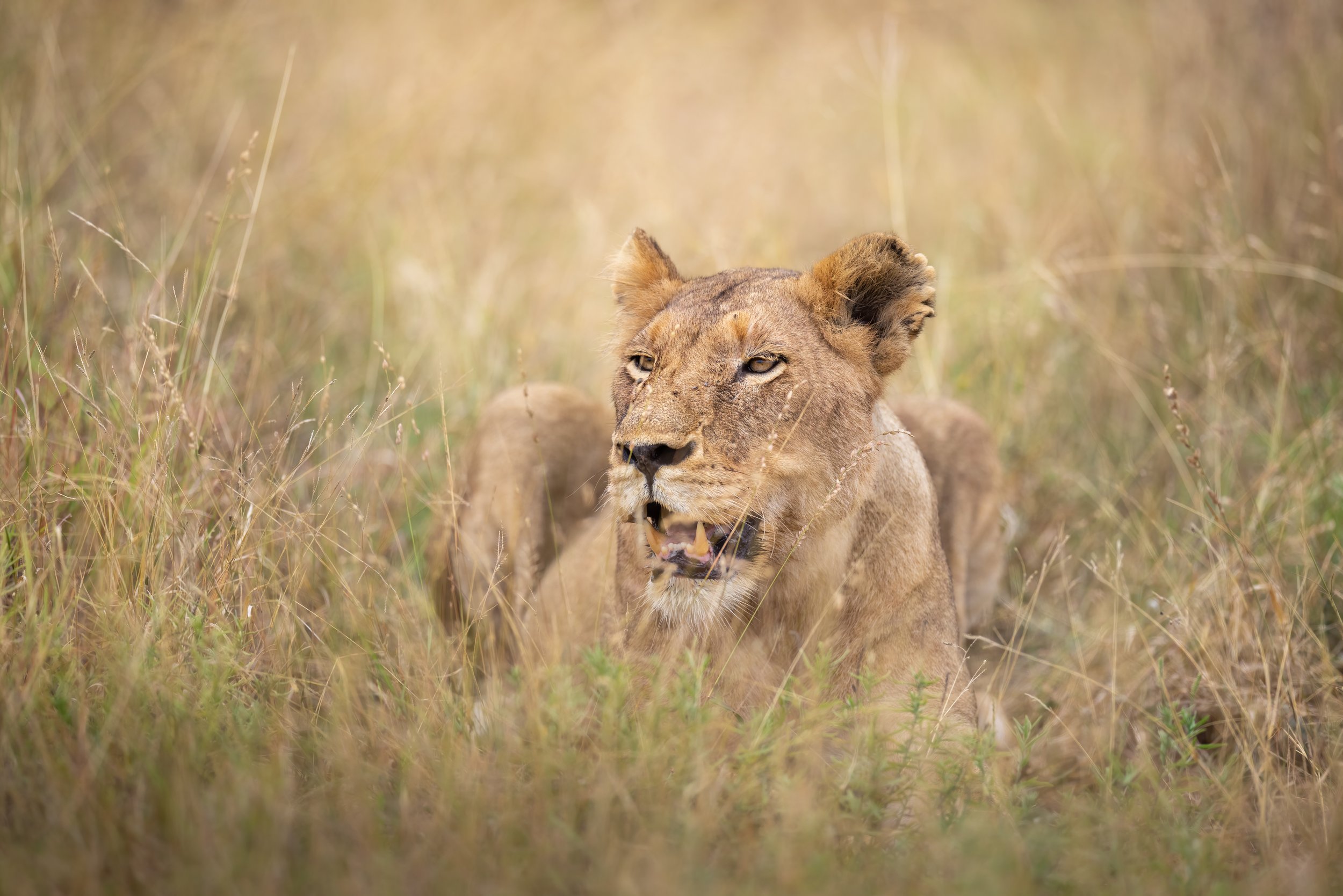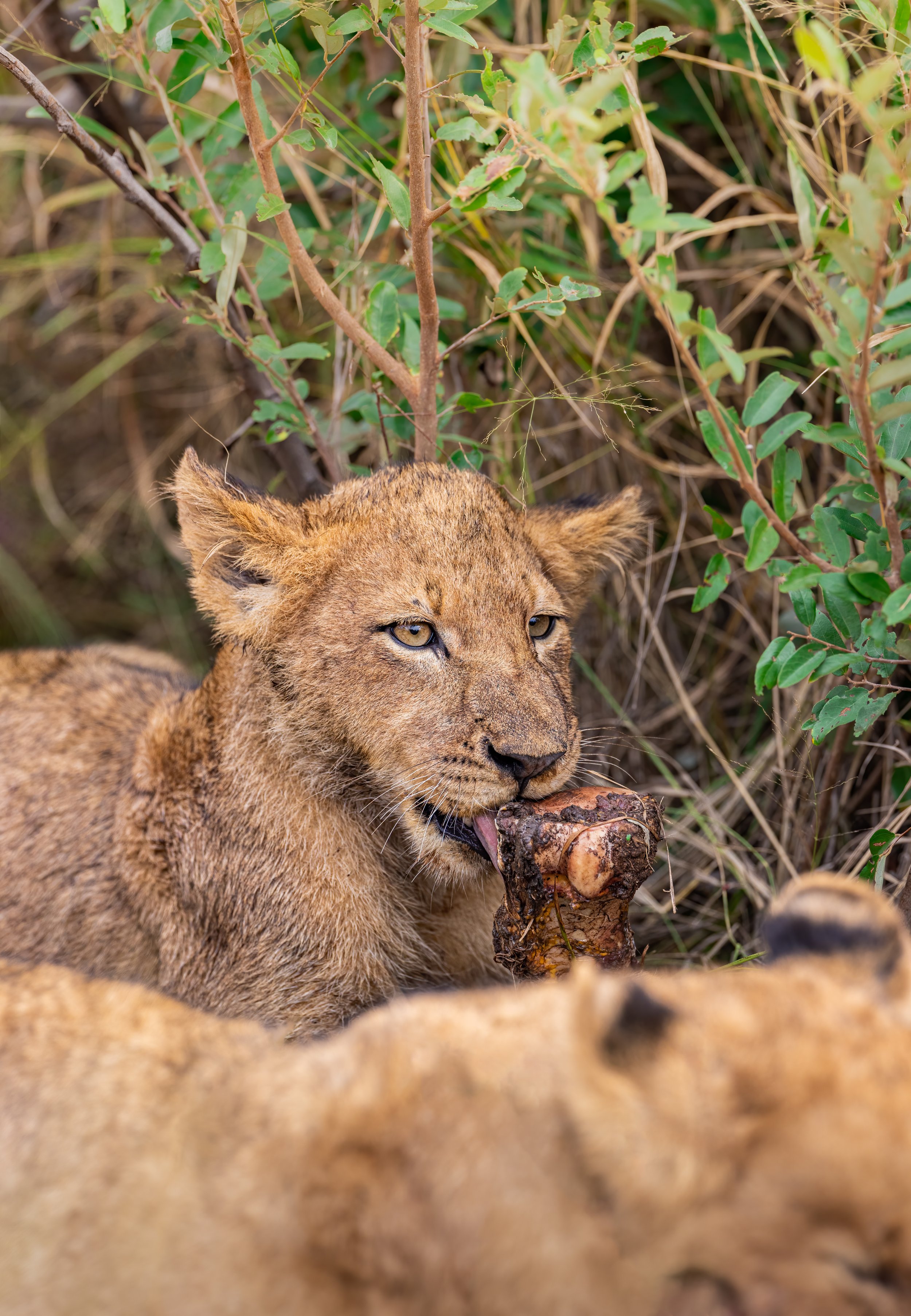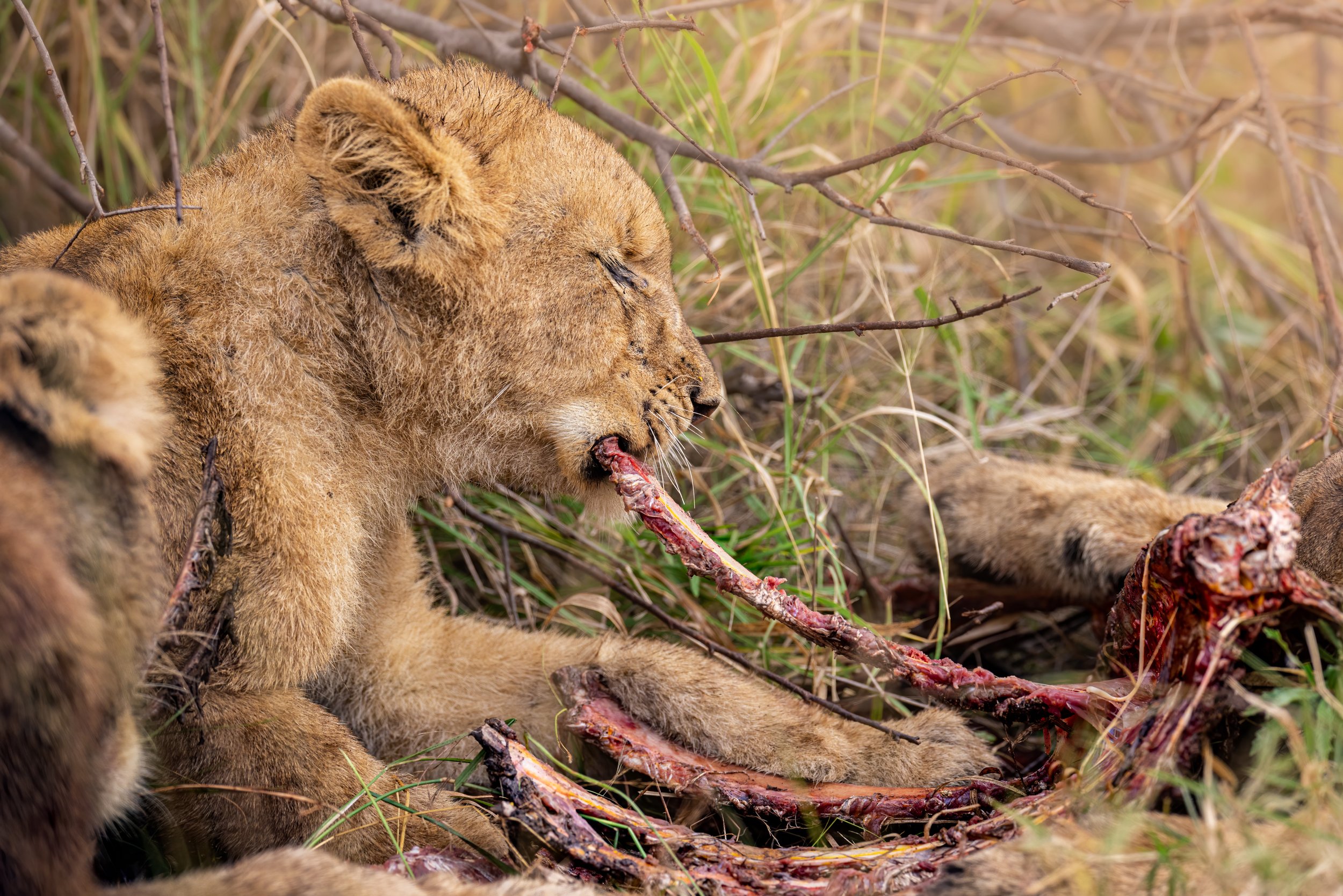Why South Africa Should Be Your Next Photography Destination
We had the opportunity to host a bucket list photography workshop in South Africa, a photogenic country whose wildlife density make it a photographer’s paradise. From snow-capped mountains to subtropical rainforests and wildlife-rich savannahs, South Africa is a destination like no other.
With the help of our travel partners, Nicola and Keri of Finisterra Travel, we set out to curate the ultimate ten day wildlife photography workshop for hobbyist and professional photographers alike. To keep wildlife encounters intimate, we decided to bring only six photographers with us.
We chose April to explore South Africa for a few reasons. This is the beginning of the dry season, where guests experience more manageable daytime temperatures; little to no bugs, and wildlife is easier to spot given the savannahs browning vegetation and are more likely to be on the move to find their next watering hole. April is also one of the quietest months for tourism, which is perfect for photographers looking to enjoy undisturbed moments with wildlife as they scavenge, hunt and play.
For our maiden voyage, we chose to spend three luxurious nights at a beachfront hotel in Port Elizabeth. After the long haul of musical chairs in the airport, we and our guests were grateful to have a few rest days before our safari officially kicked off. Between siesta’s, we explored Port Elizabeth’s vibrant food scene, expansive beaches and even visited the SANCCOB Gqeberha African penguin sanctuary.
Our driver’s, Ekna and Hilary, arrived bright and early on day four to whisk us away to our first safari stop, Amakhala Private Game Reserve, in the unspoiled, malaria-free Eastern Cape Province.
Amakhala didn’t disappoint. The next six nights were a blur of personalized, three-course meals, unforgettable (and rare) wildlife encounters, impassioned knowledge sharing and deep belly laughs.
Constructed of stone, thatch and canvas, the lodge’s open design allowed for indoor and outdoor dining. Rooms were spacious, modern and homey, with just the right amount of traditional ‘safari’ charm.
The expansive wraparound deck to our suite offered the perfect afternoon pitstop. Whether we were editing images or enjoying our morning coffee, the deck provided a gorgeous view of passing elephants and giraffes.
Our guides, Dex and Tim, were enthusiastic, charming and customized our game drives to focus on species we were most interested in. They prioritized our photography needs and worked tirelessly to ensure we were in the right position to capture the wildlife’s “good side.”
On multiple occasions a herd of elephants came to drink from our communal pool at the main lodge, as we sipped cocktails and watched them blow bubbles, hose off and trumpet for their turn. Lizards, birds, vervet monkeys and baboons were also common visitors.
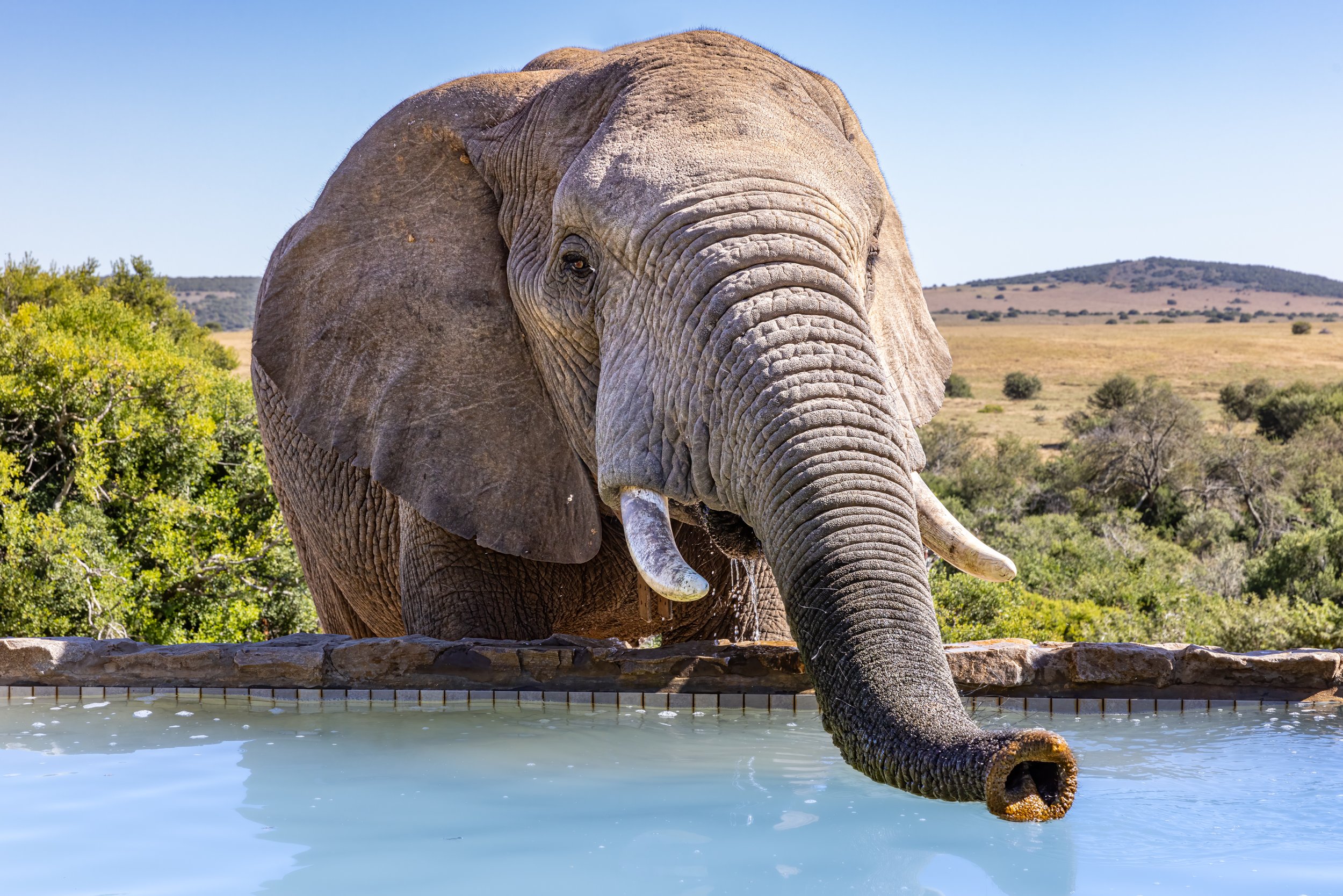
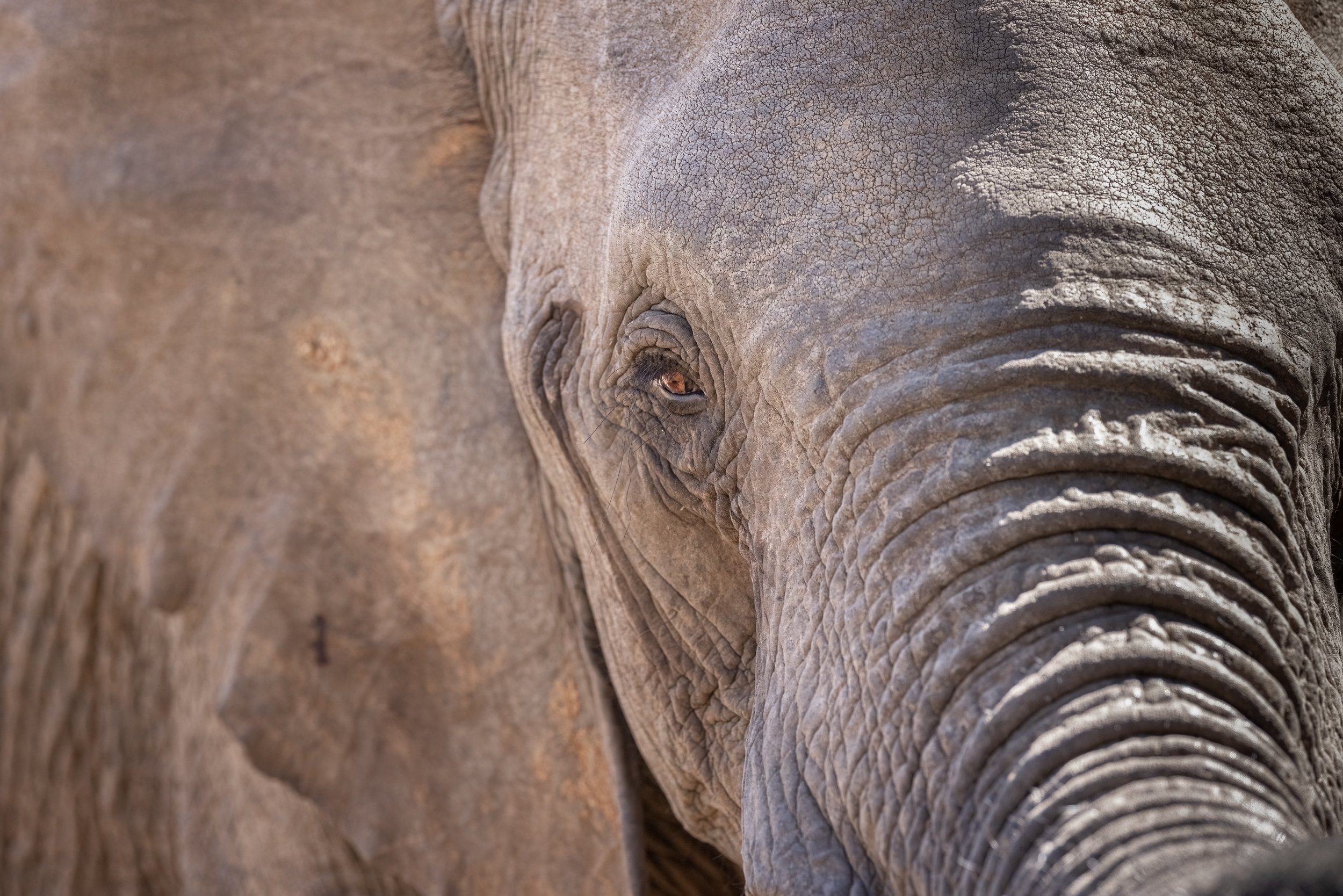
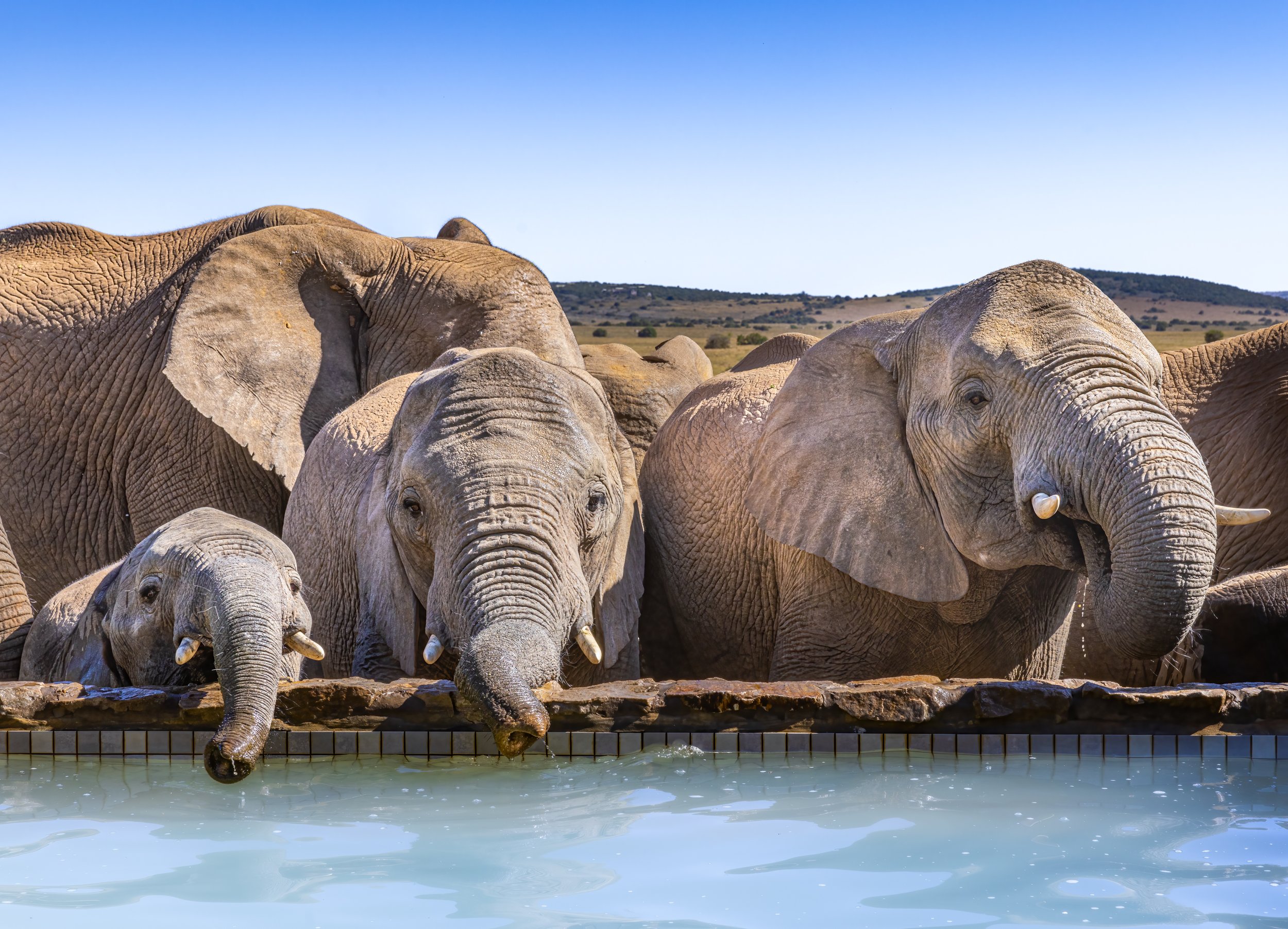
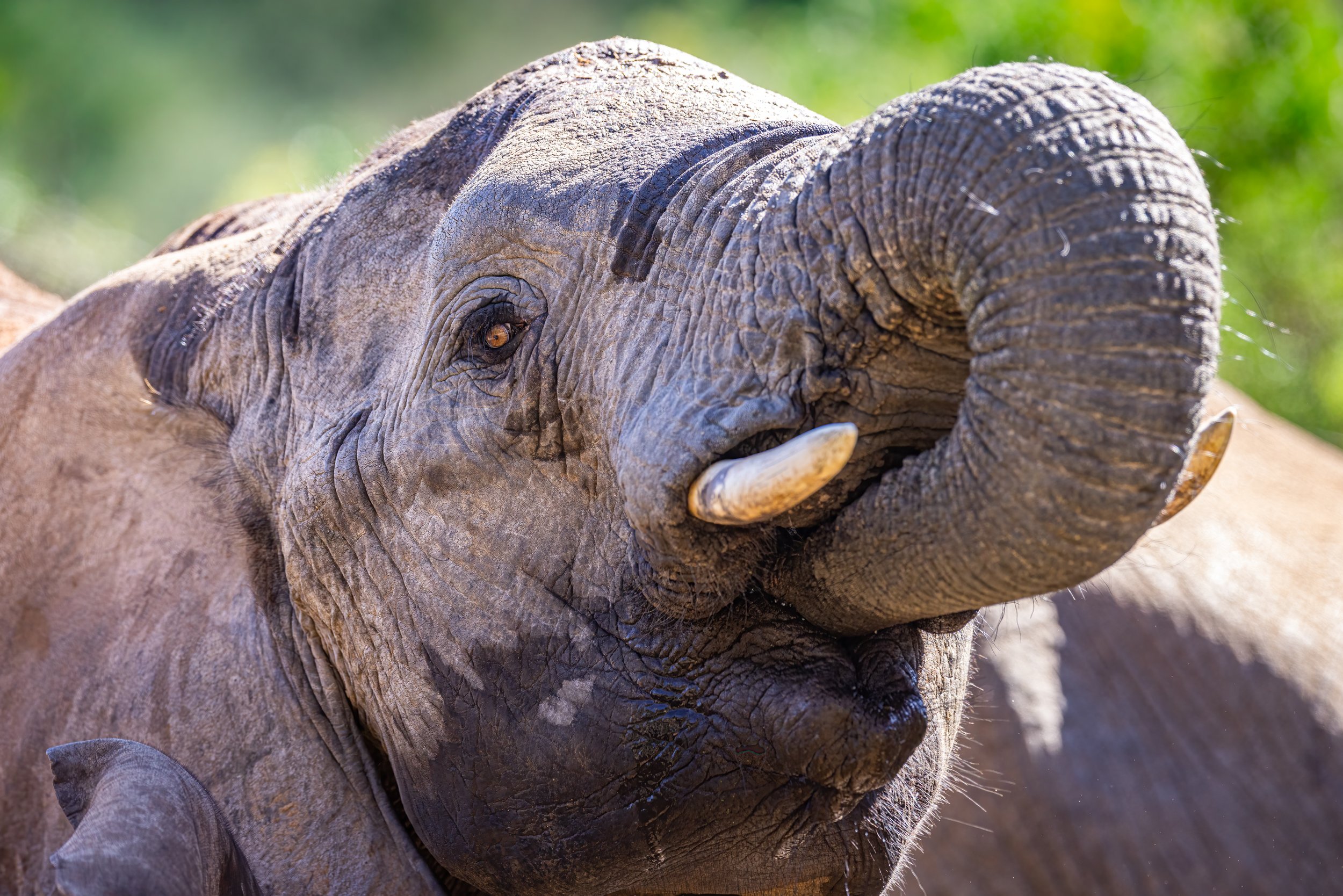
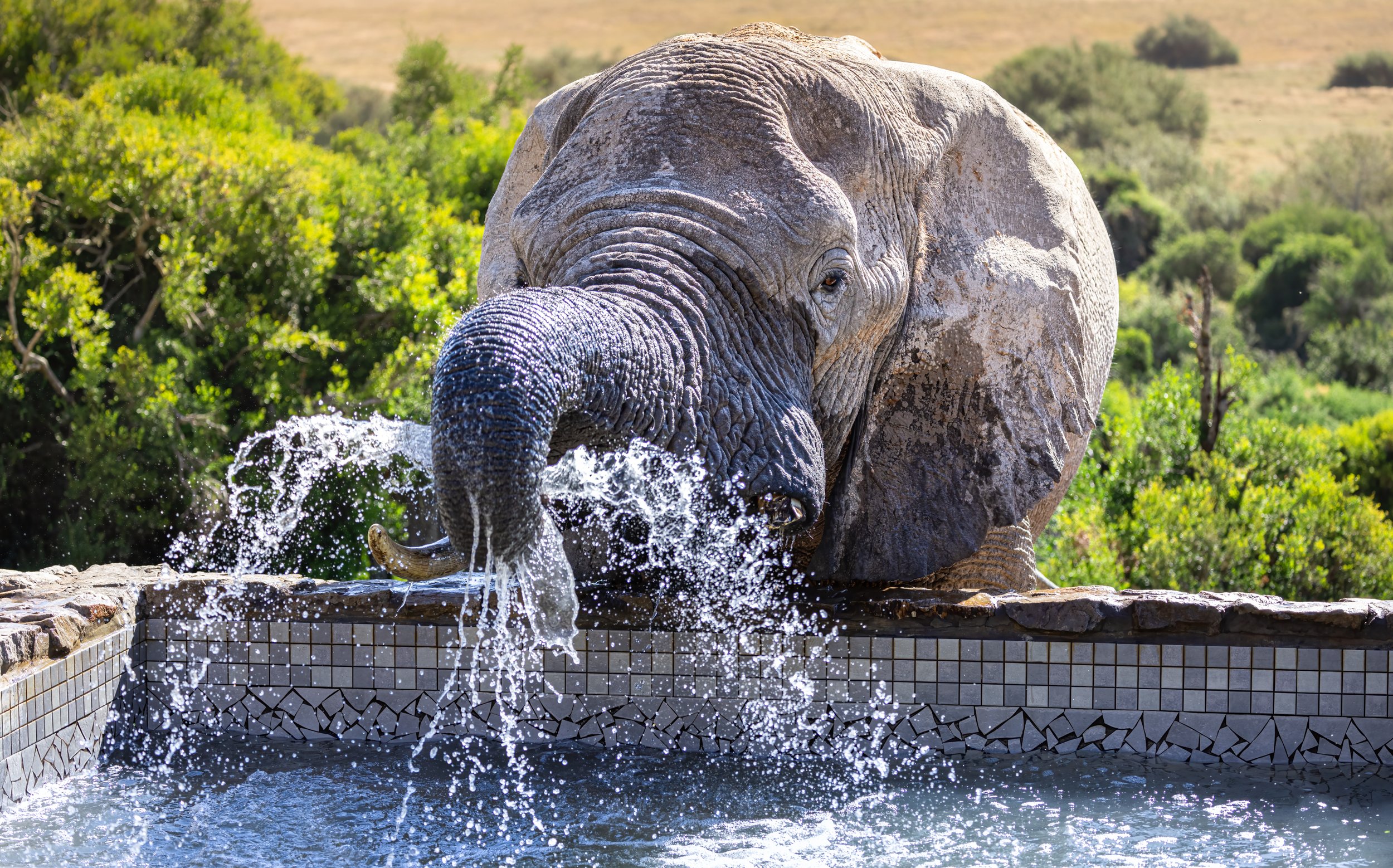
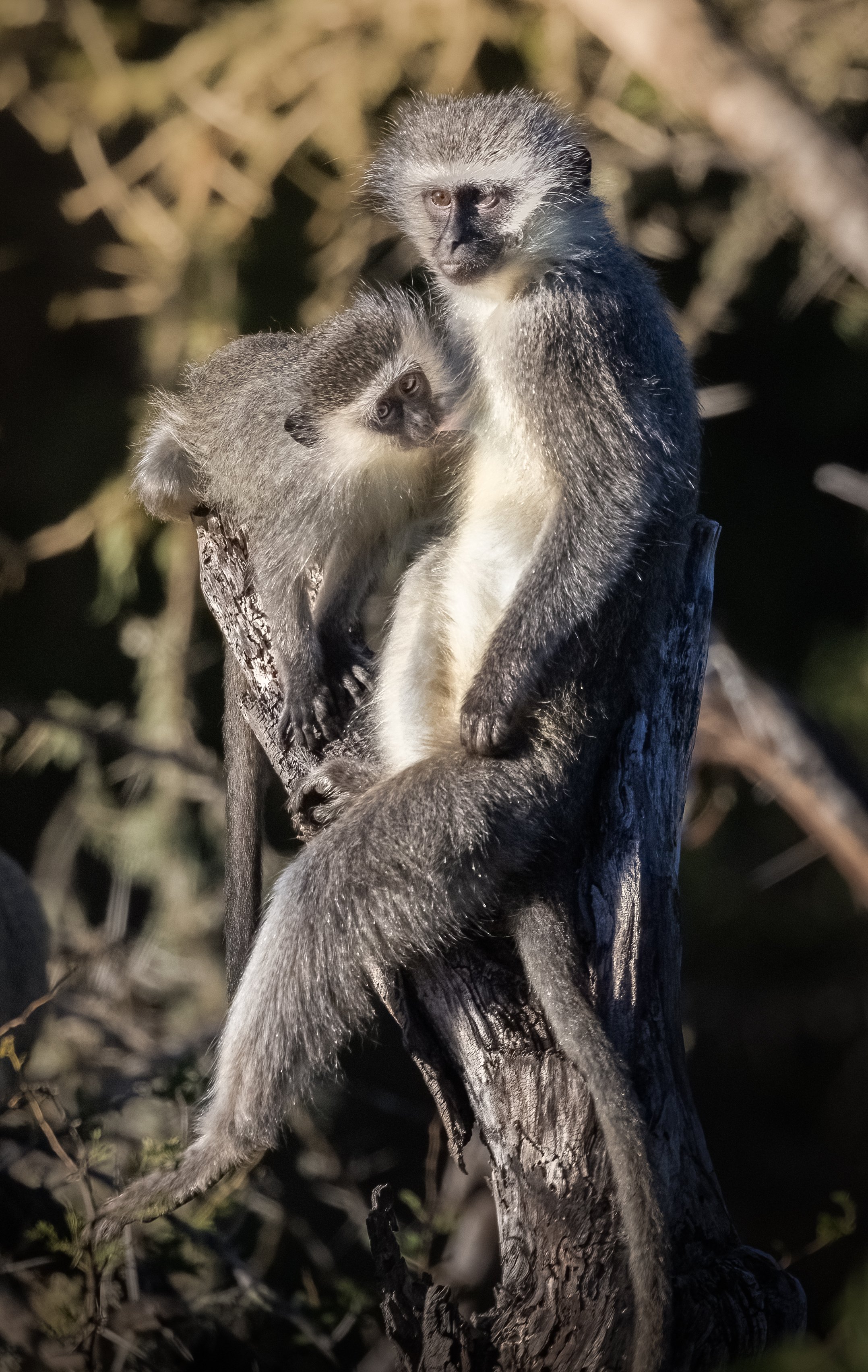
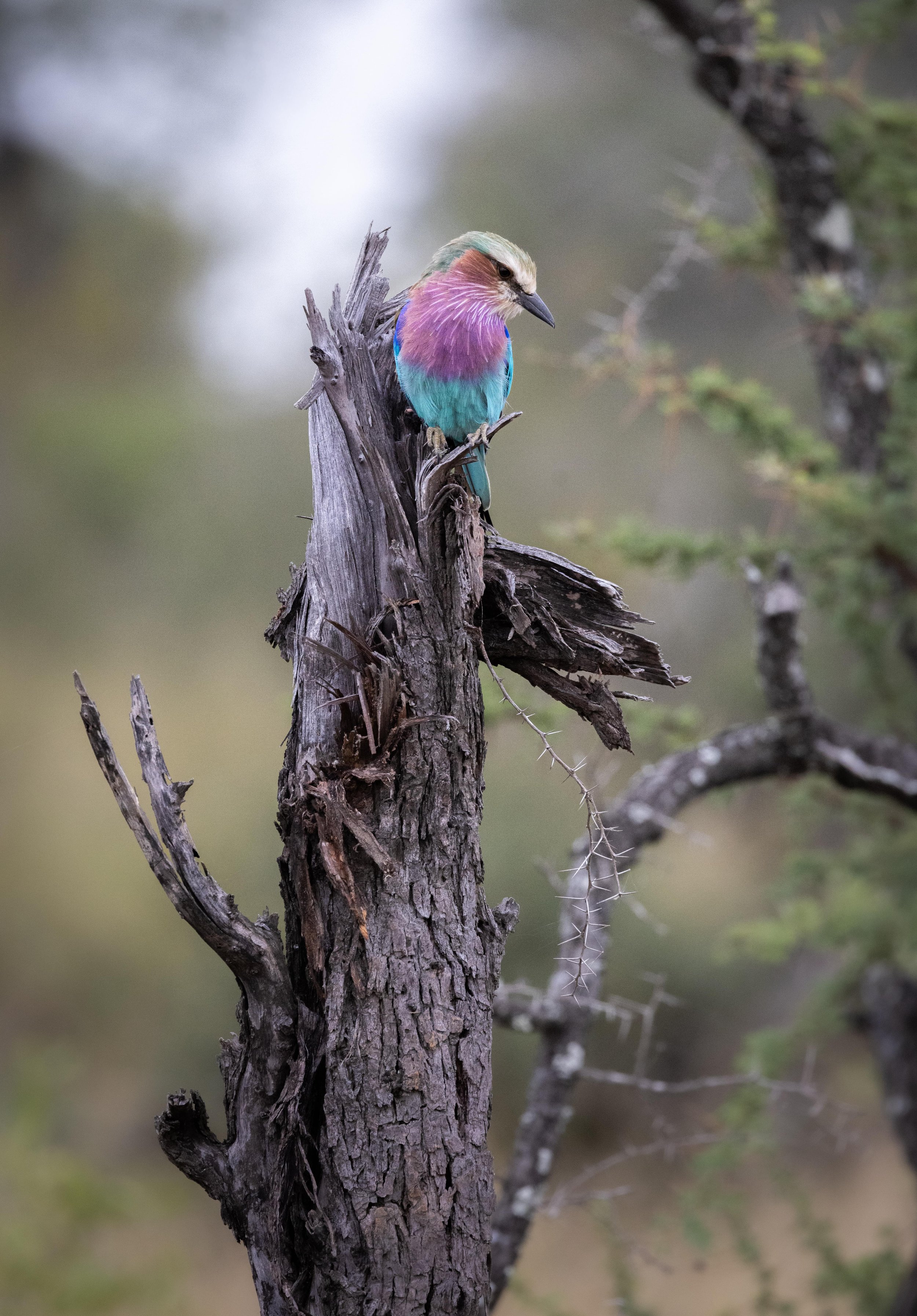
Evening game drives were a favourite and presented a rare opportunity to watch a caracal stalk through high grasses. A sight our guides seldom see!
The entire week we were serenaded by a male lion, whose call could be heard over the mountains as we tucked ourselves into bed. The lion pride were generous with their time and presented themselves at dawn, dusk and even gave us a show in the morning fog. We watched as the cubs tackled and gnawed on mom and dad — the “money” shot, as they say.
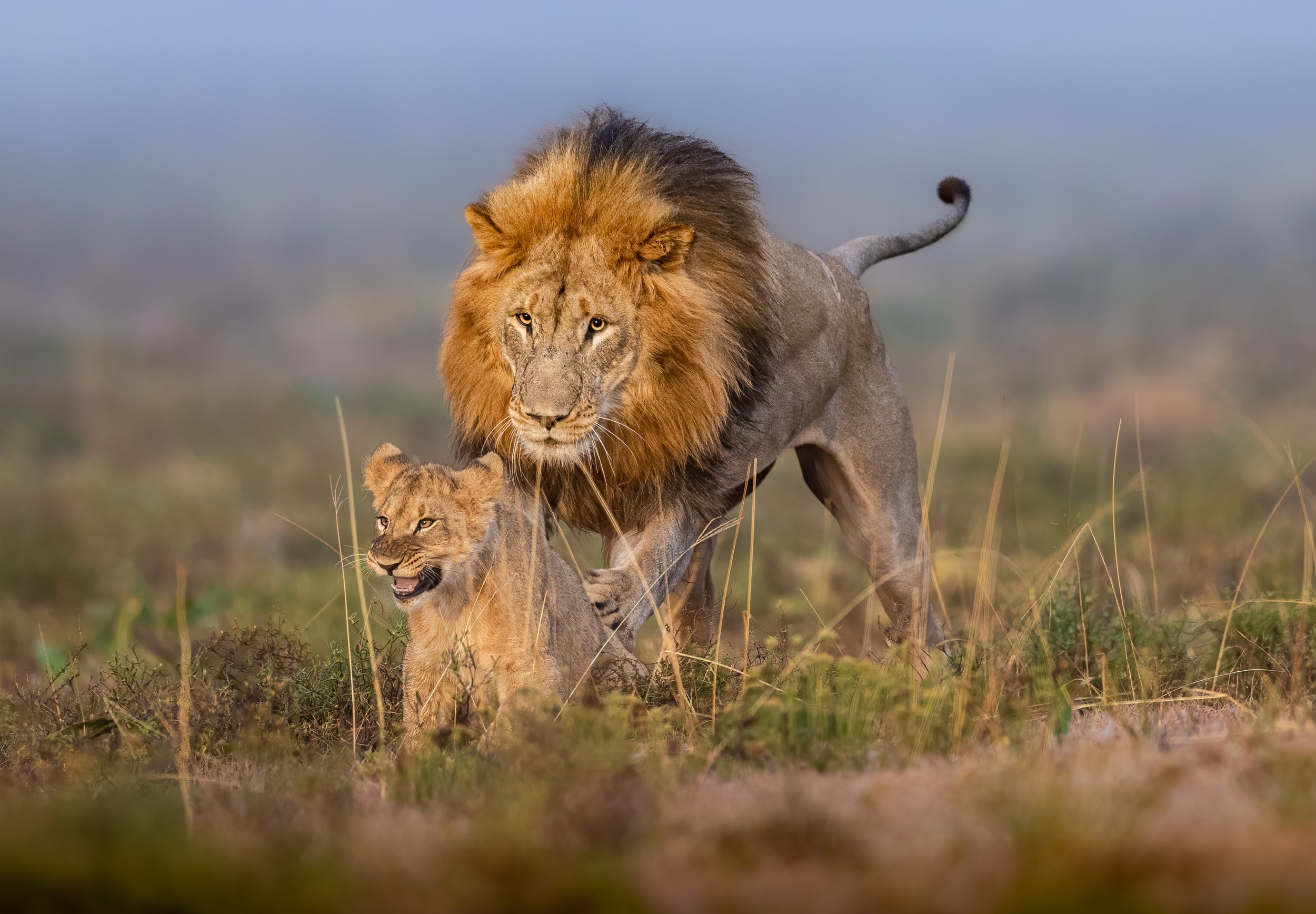
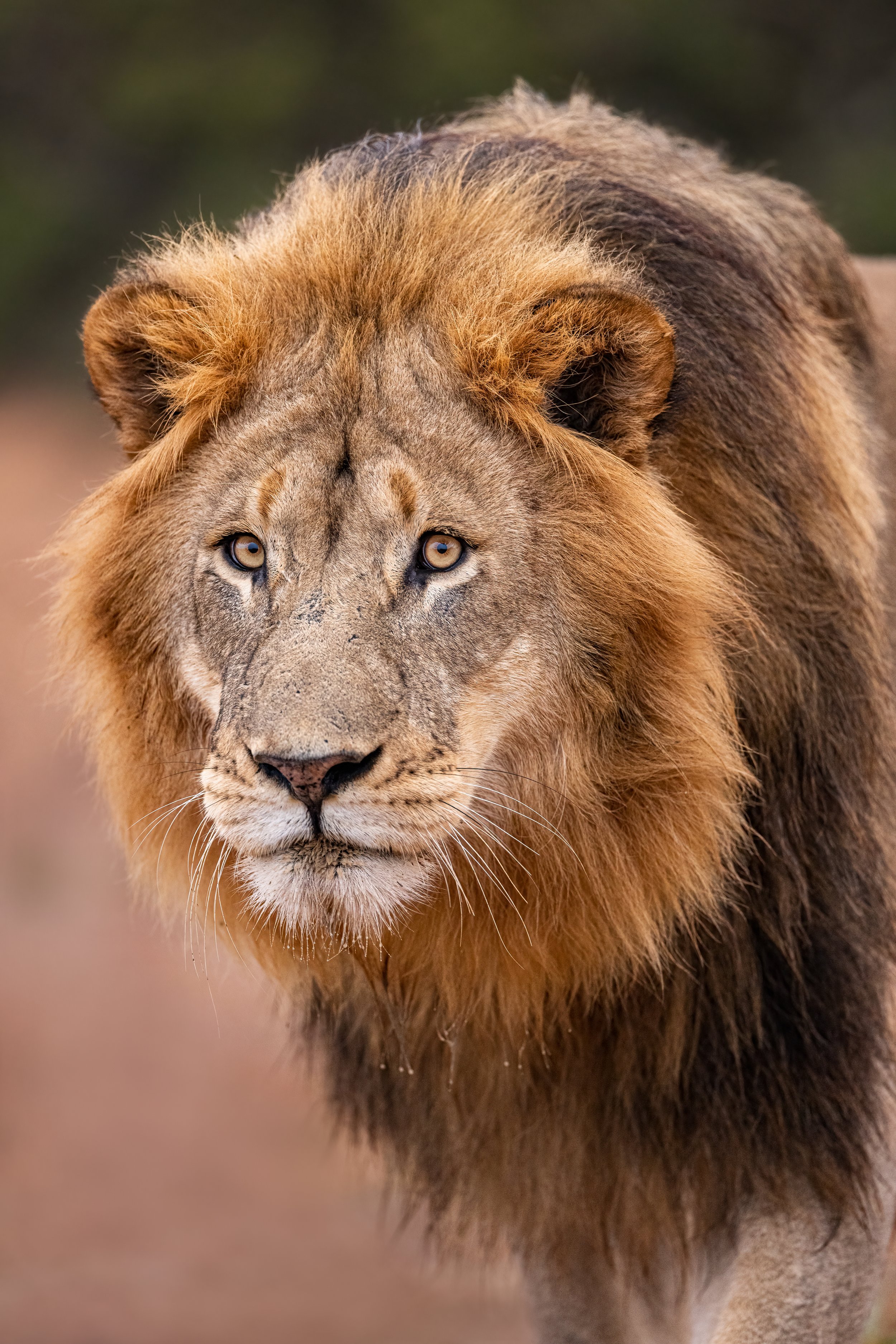
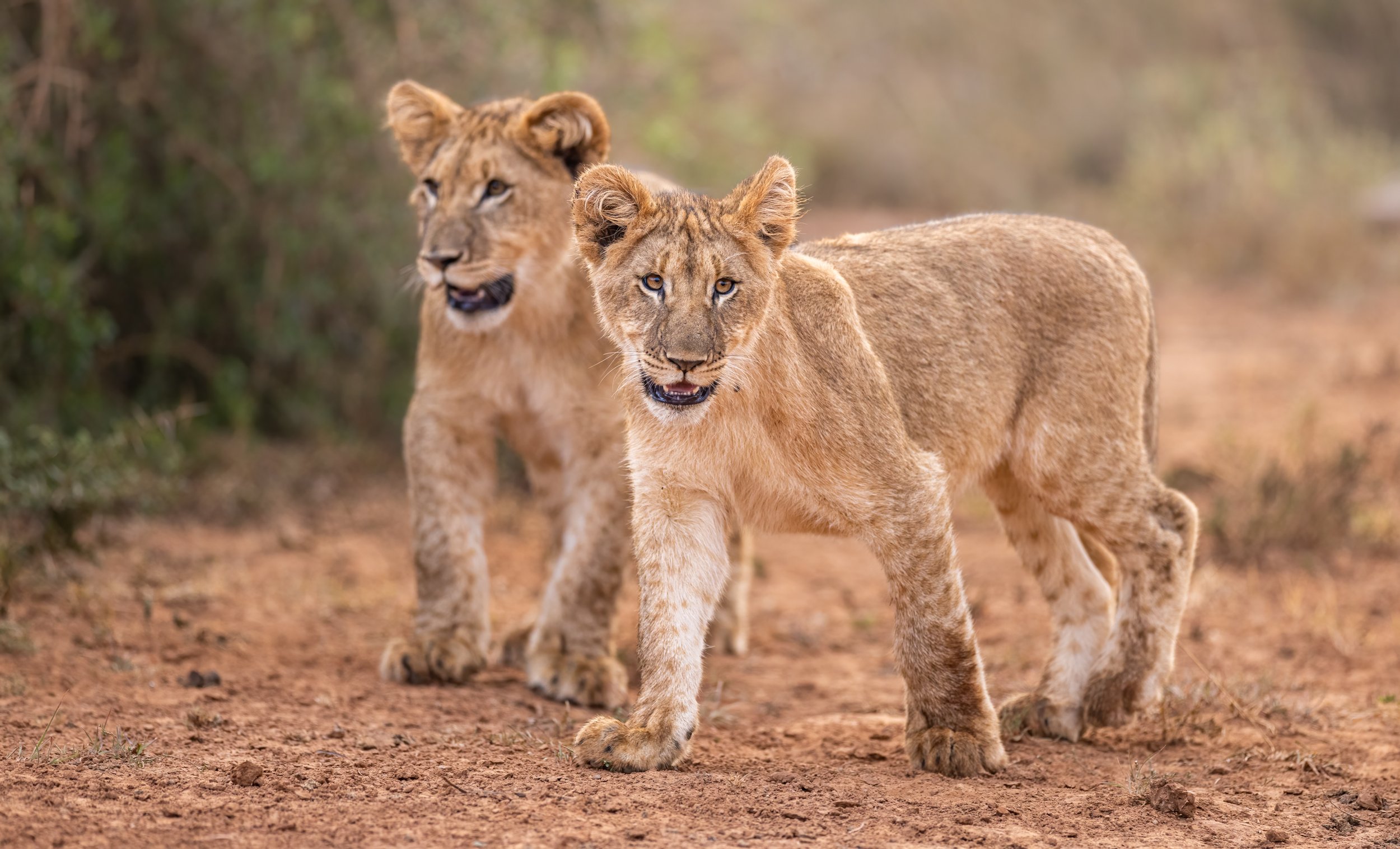

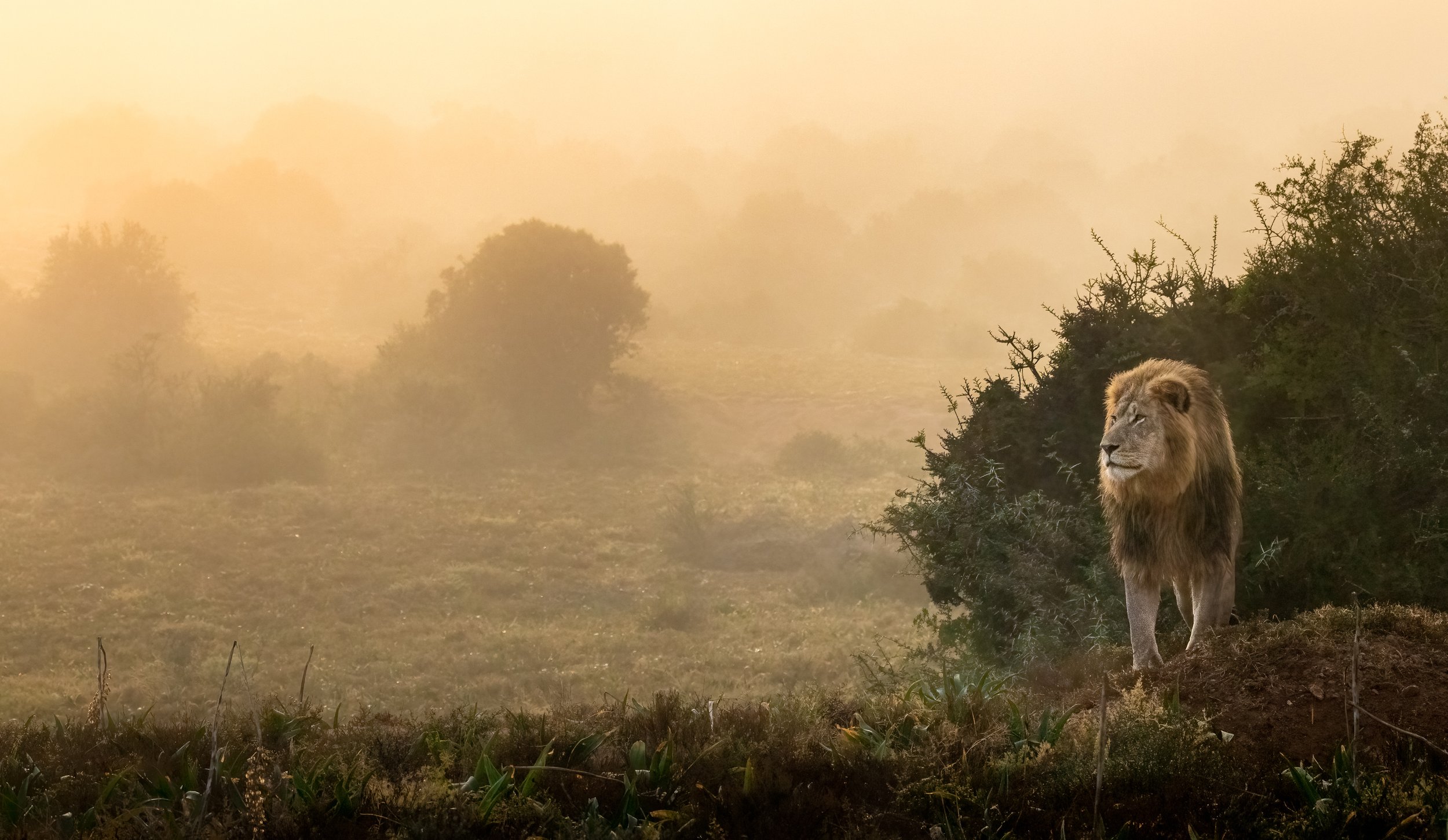
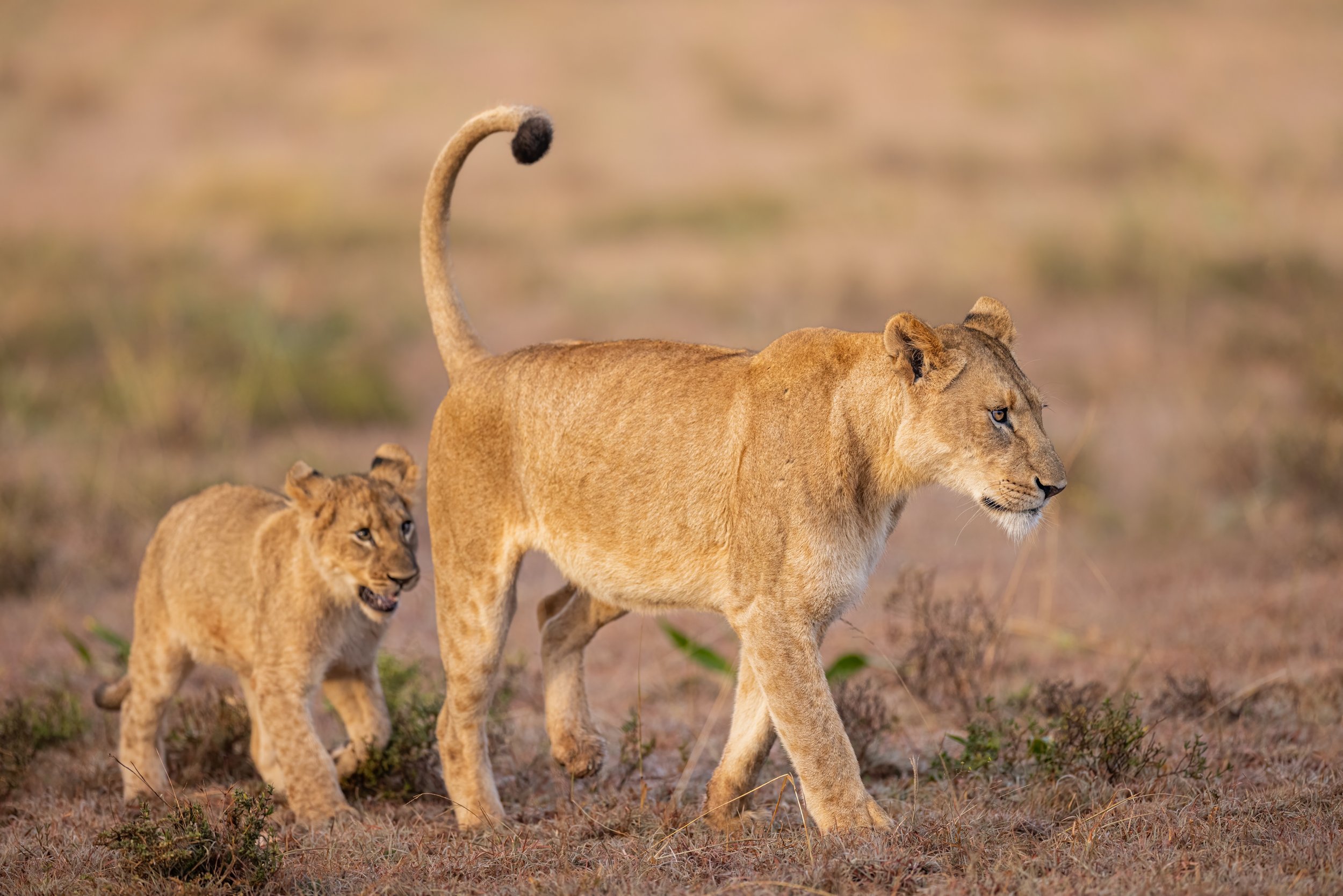
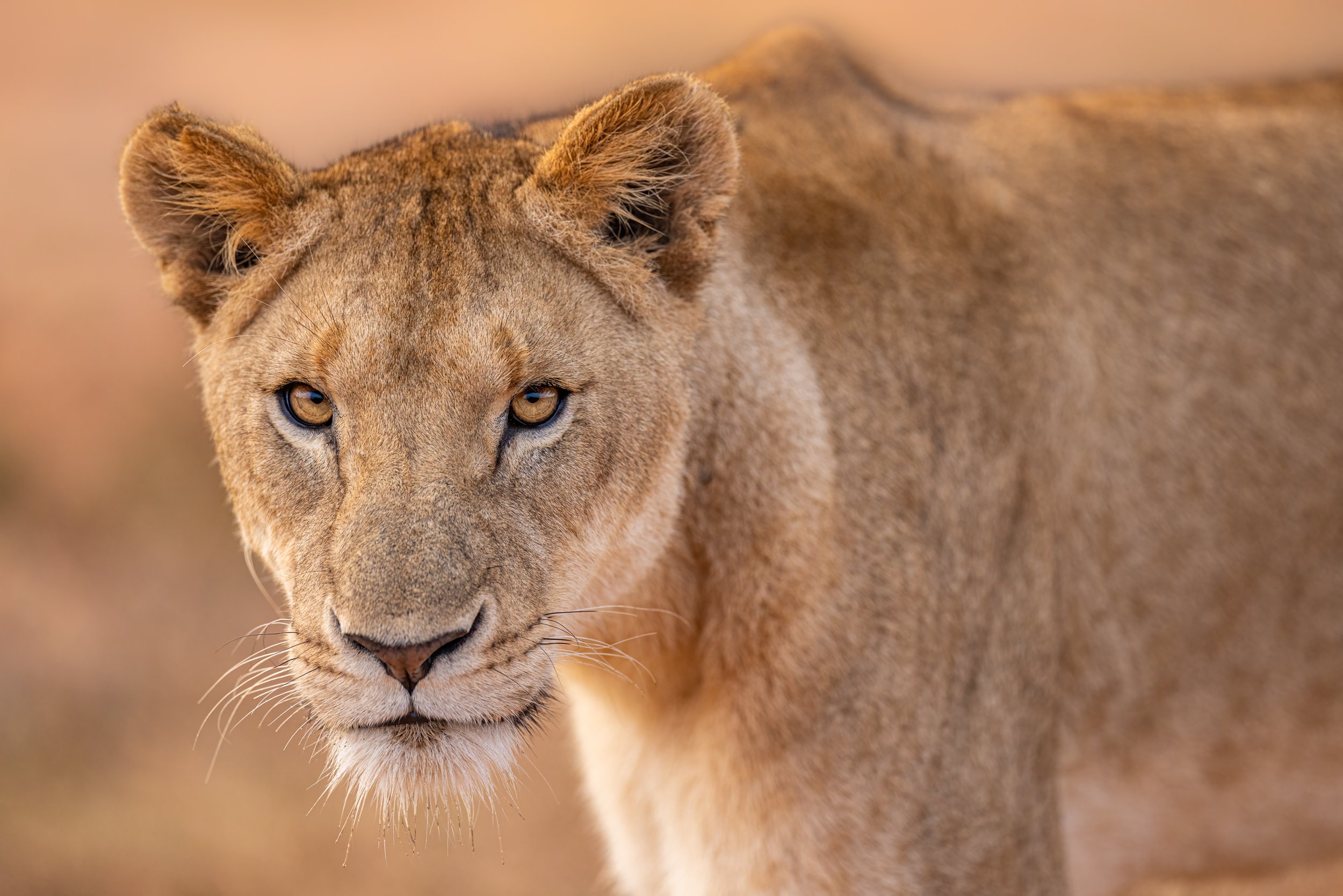
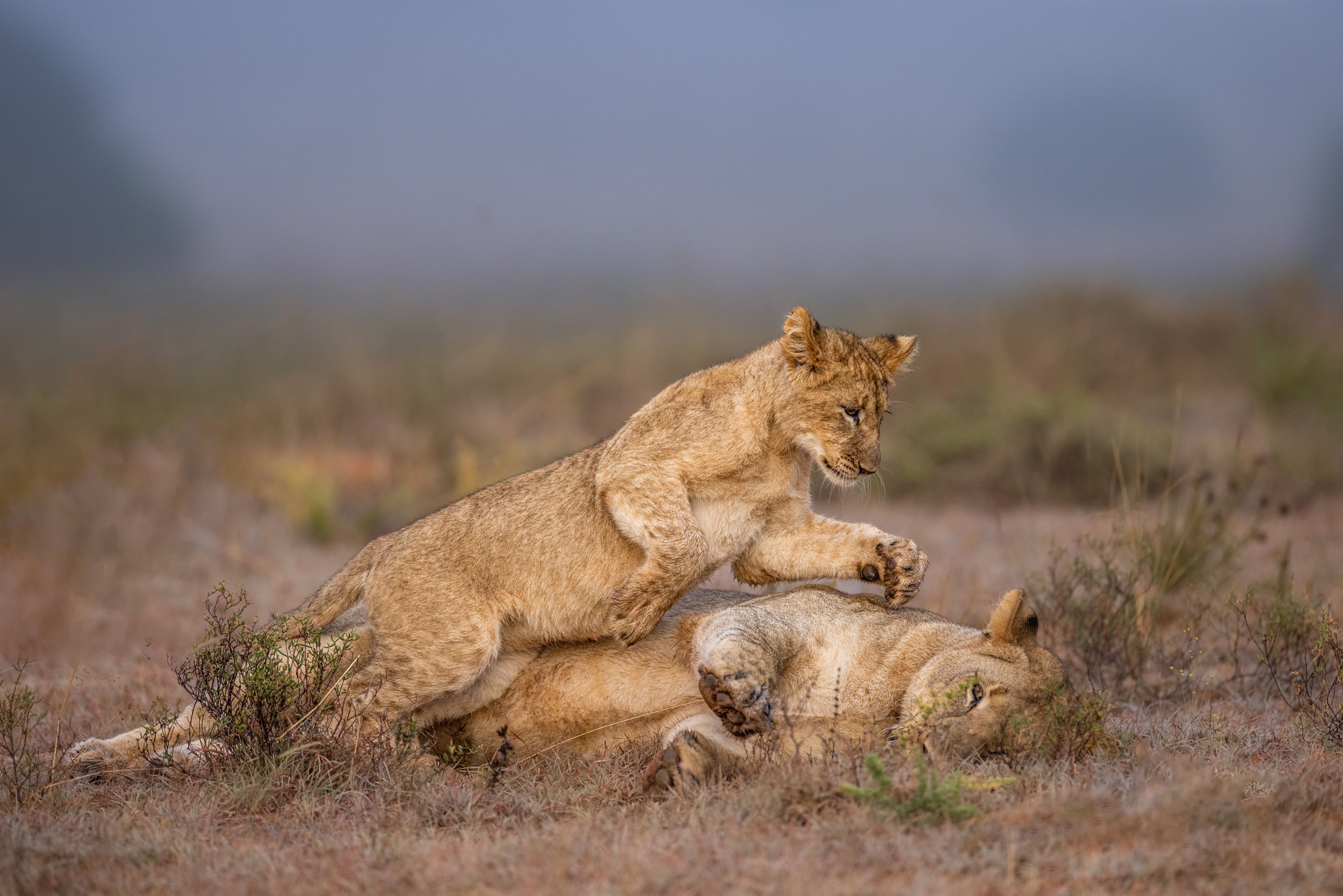
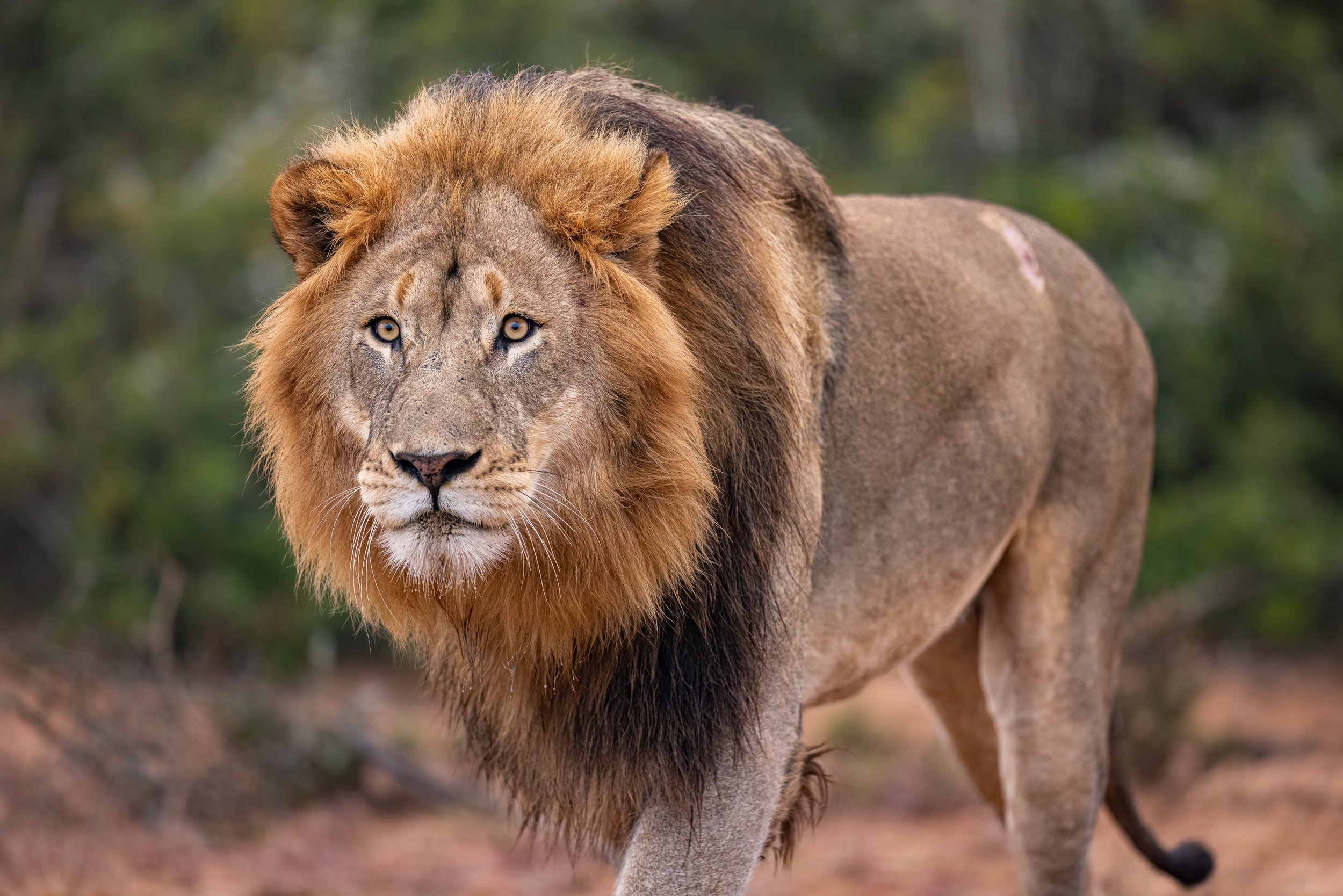
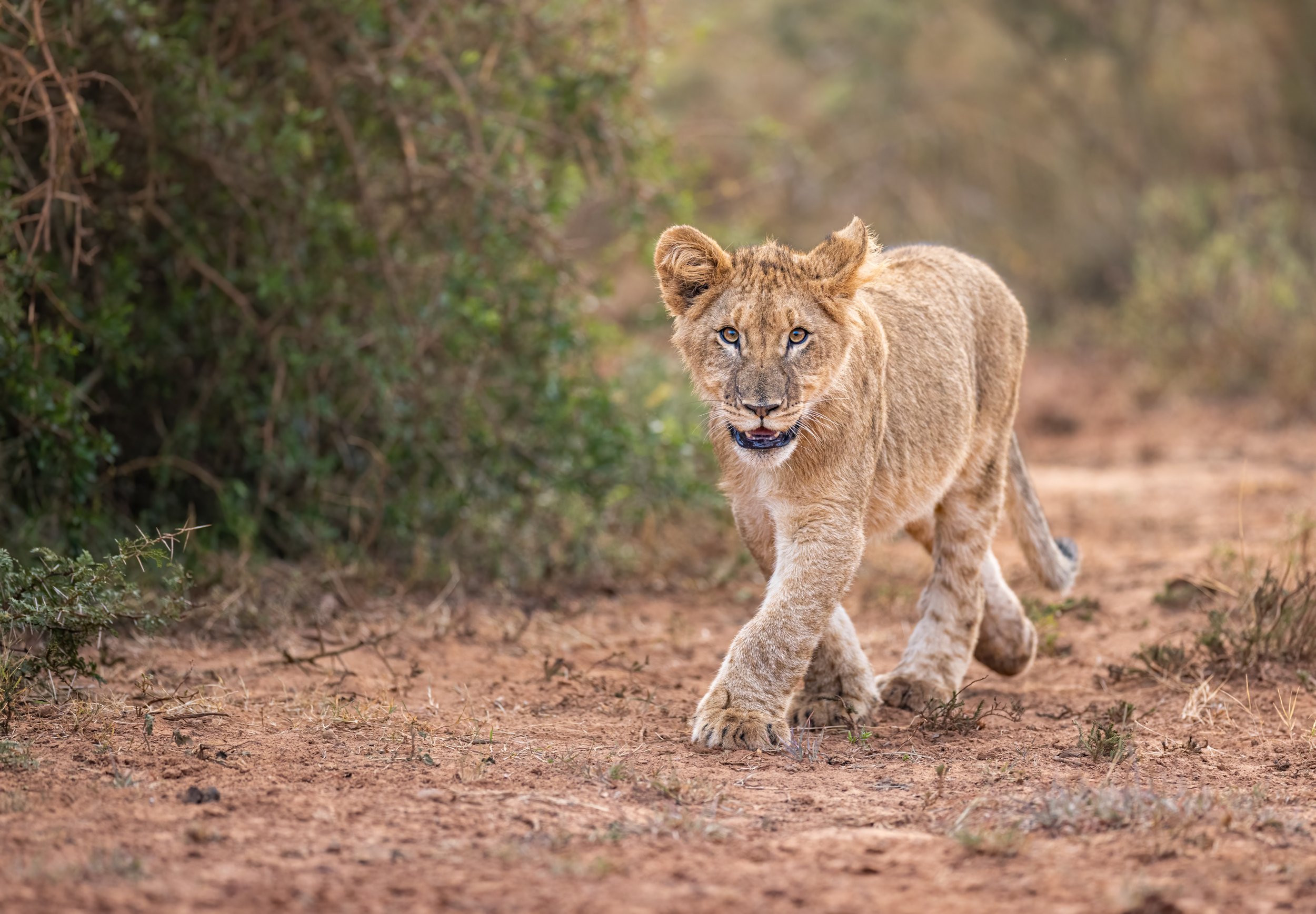
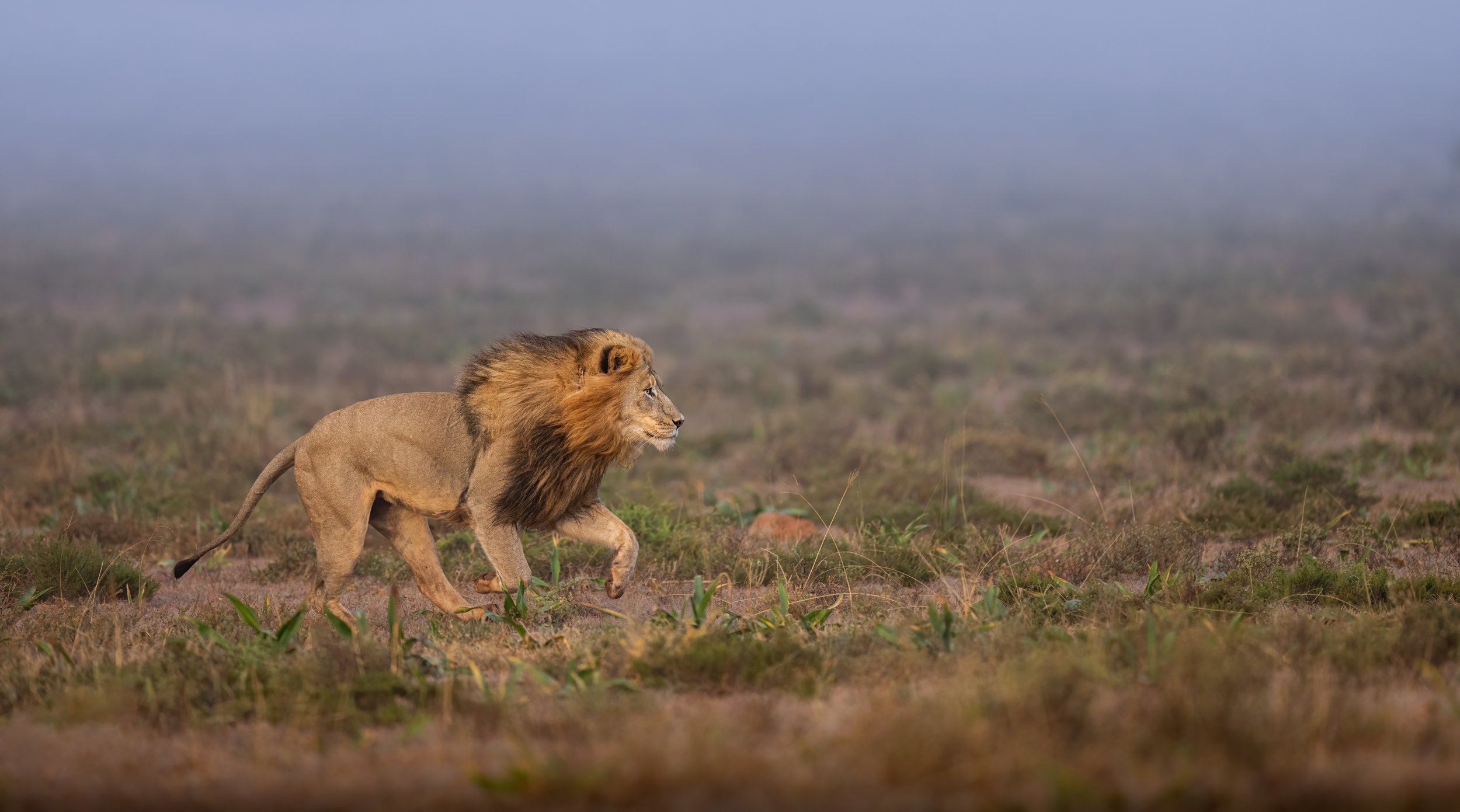

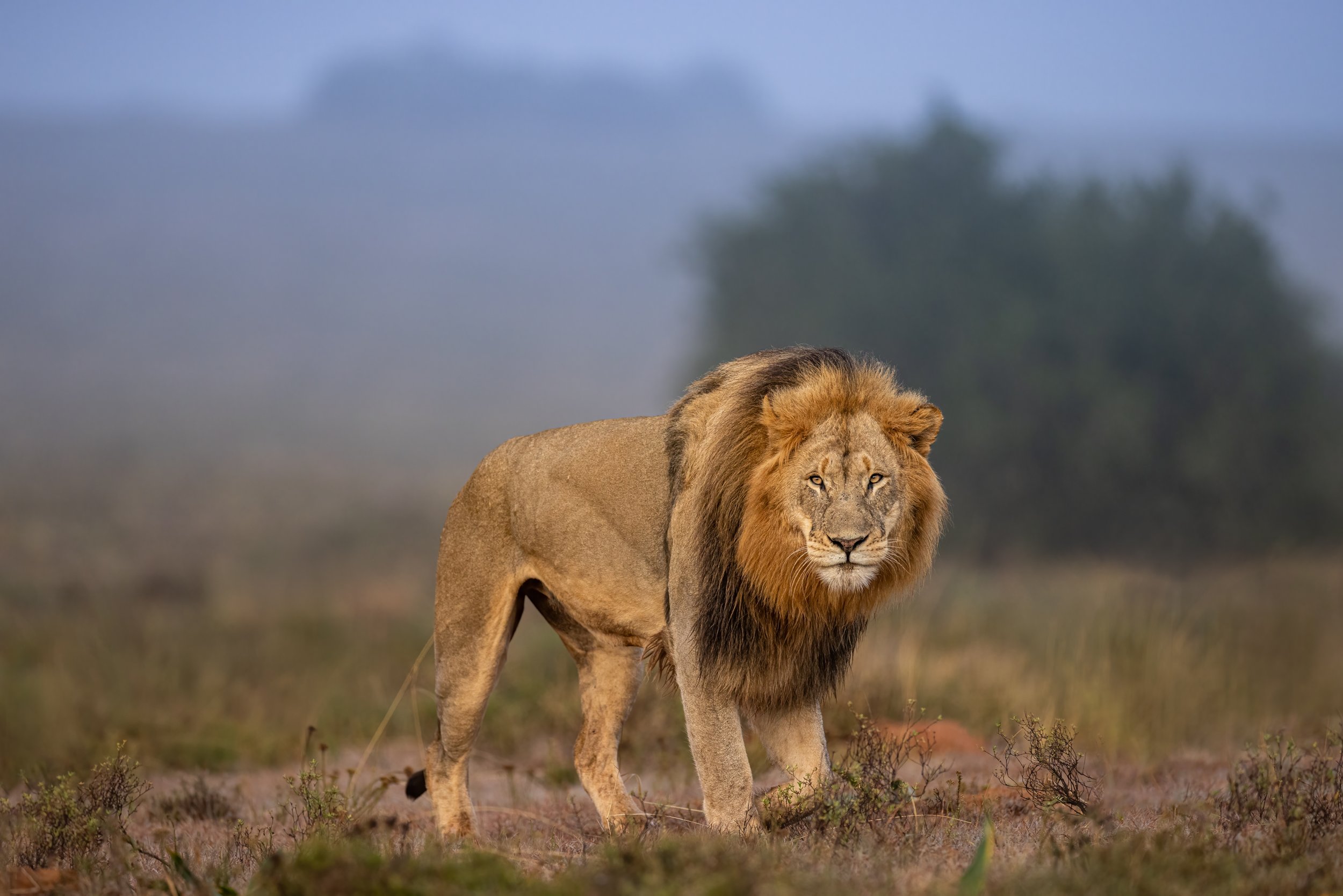
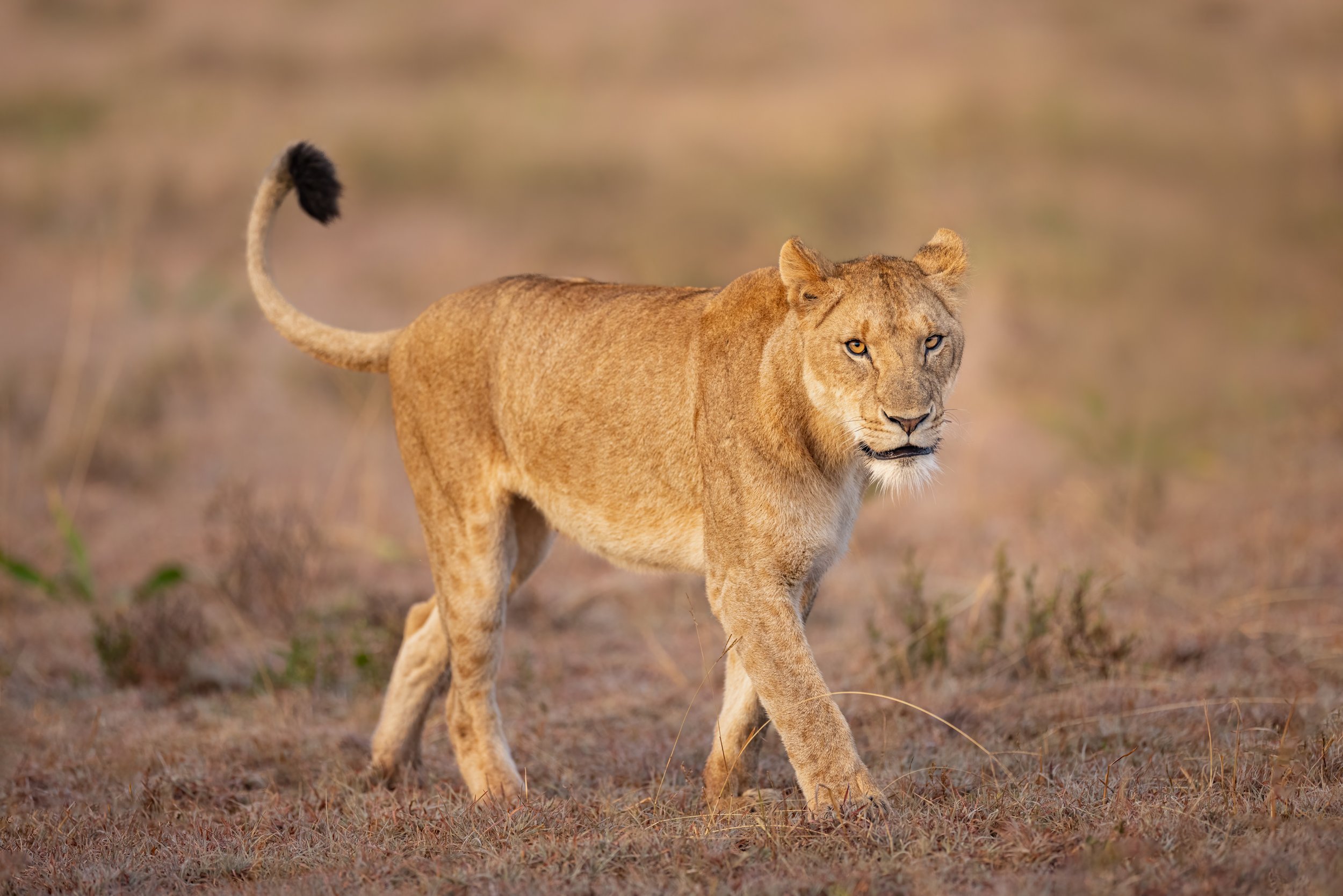

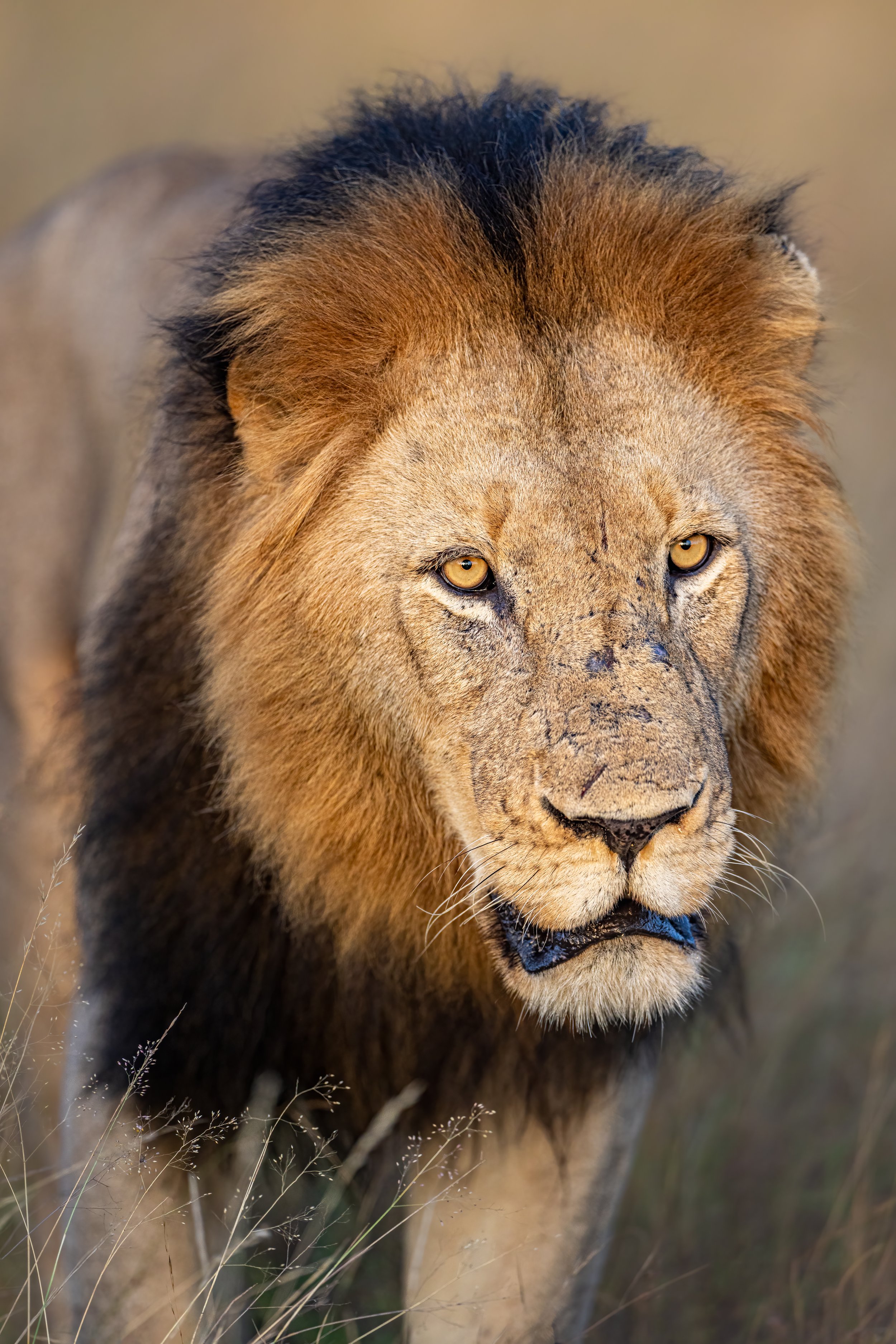
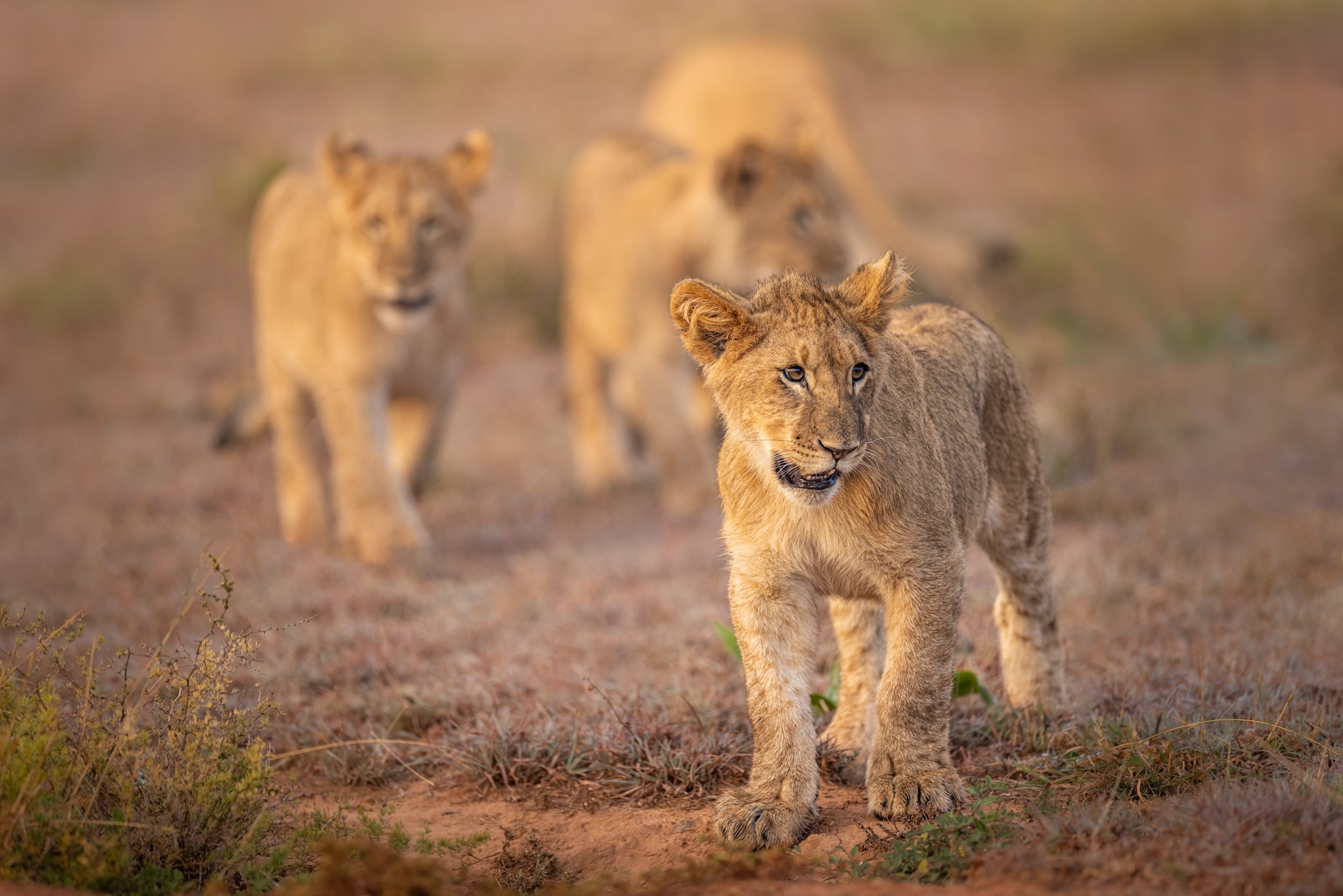
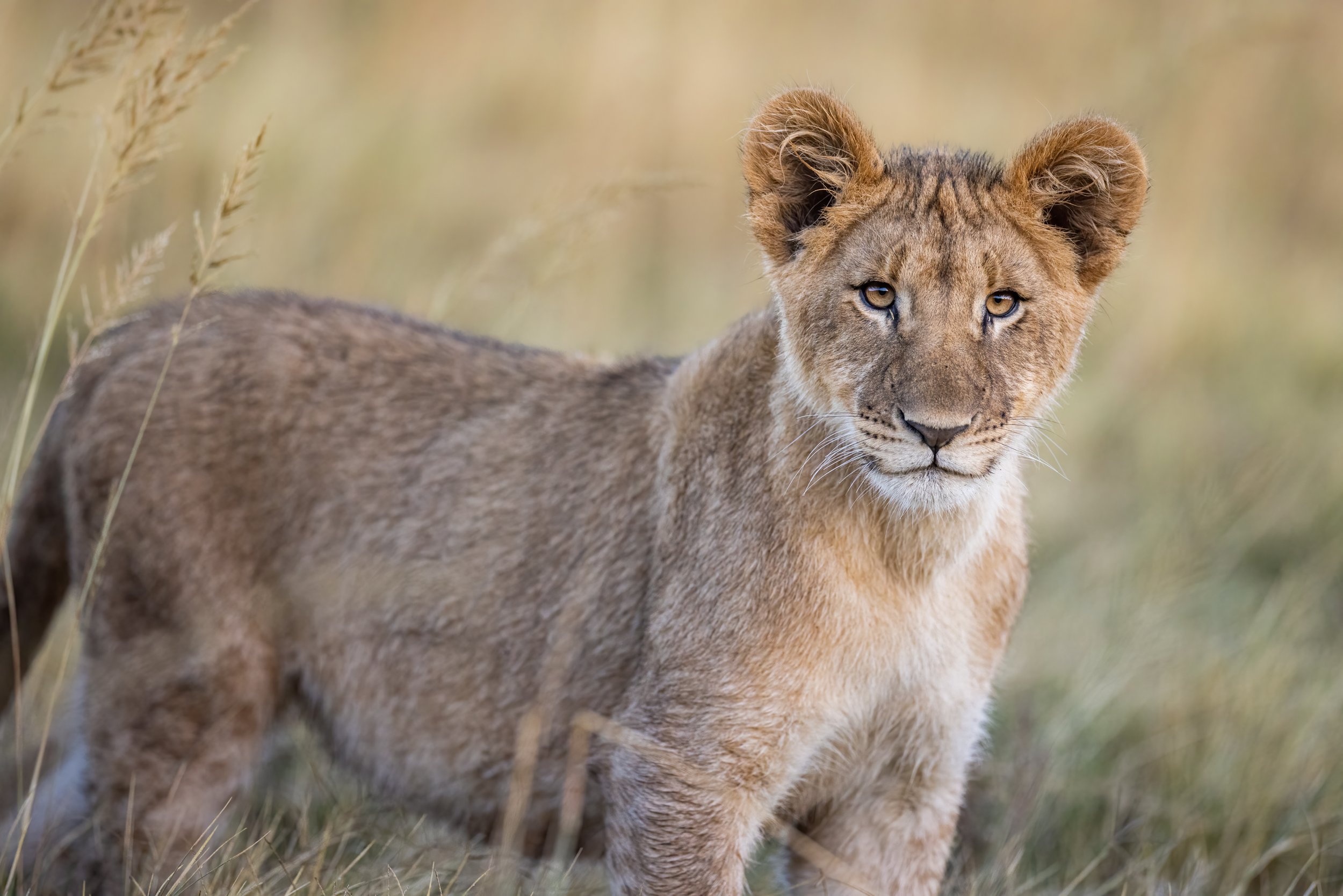
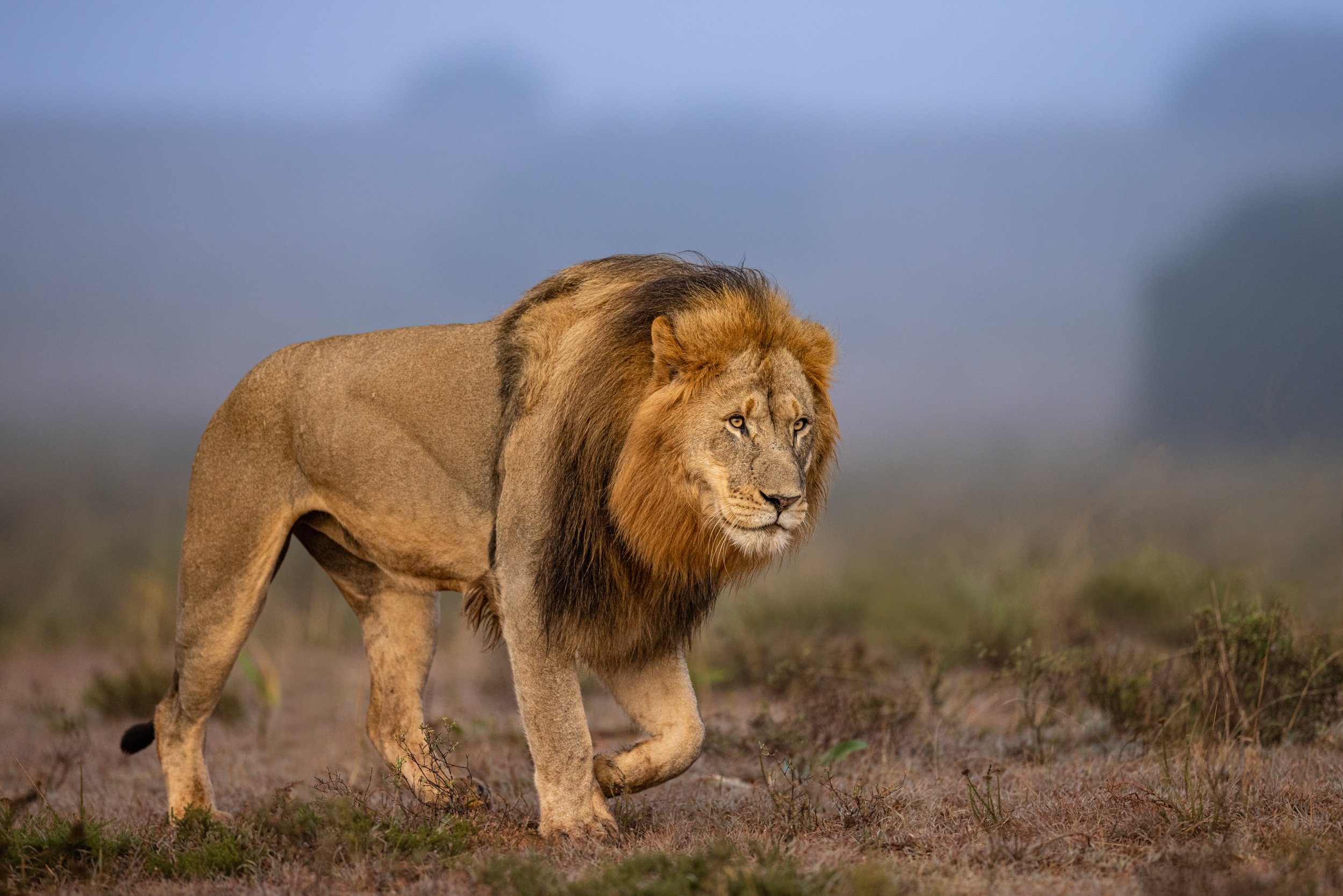
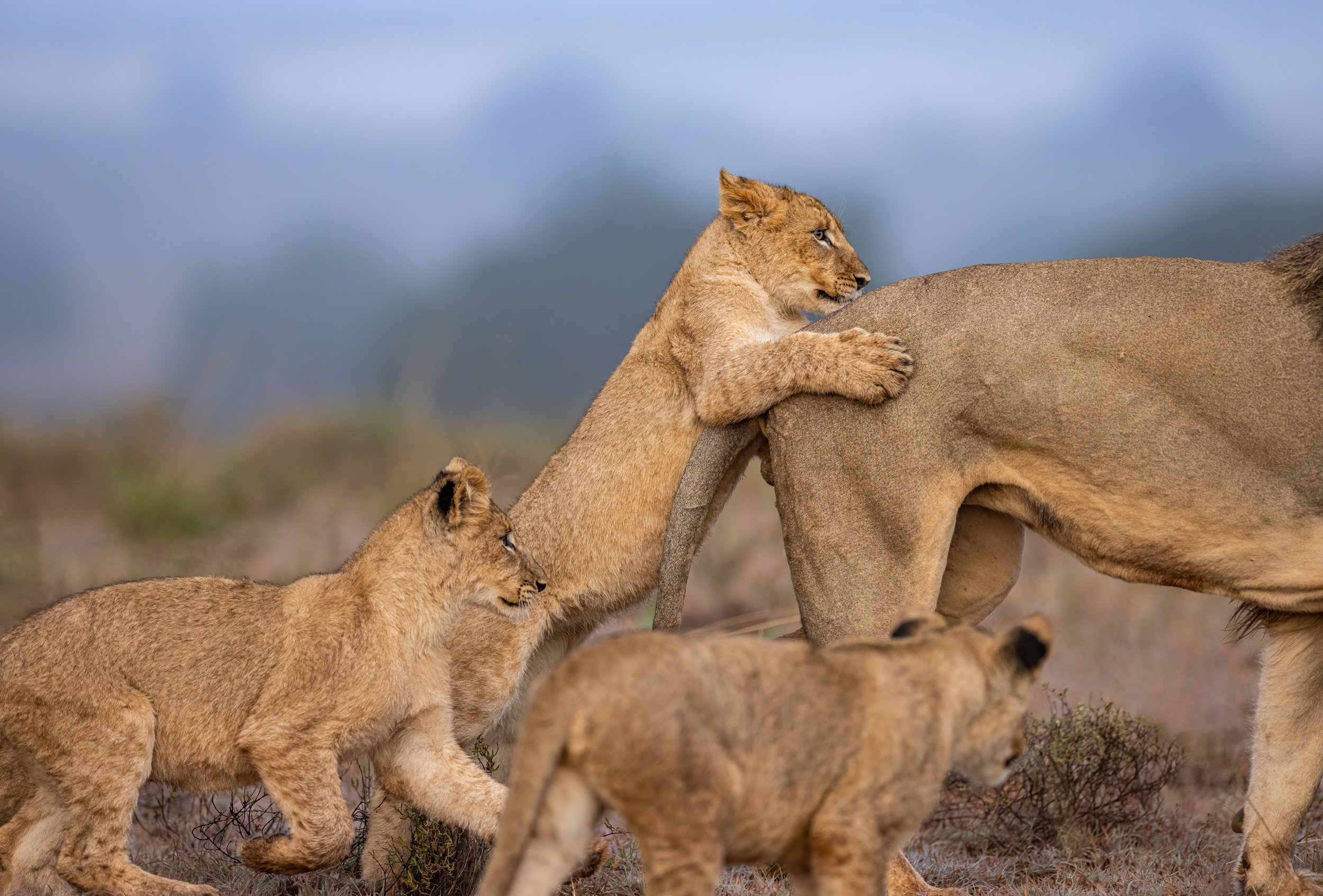
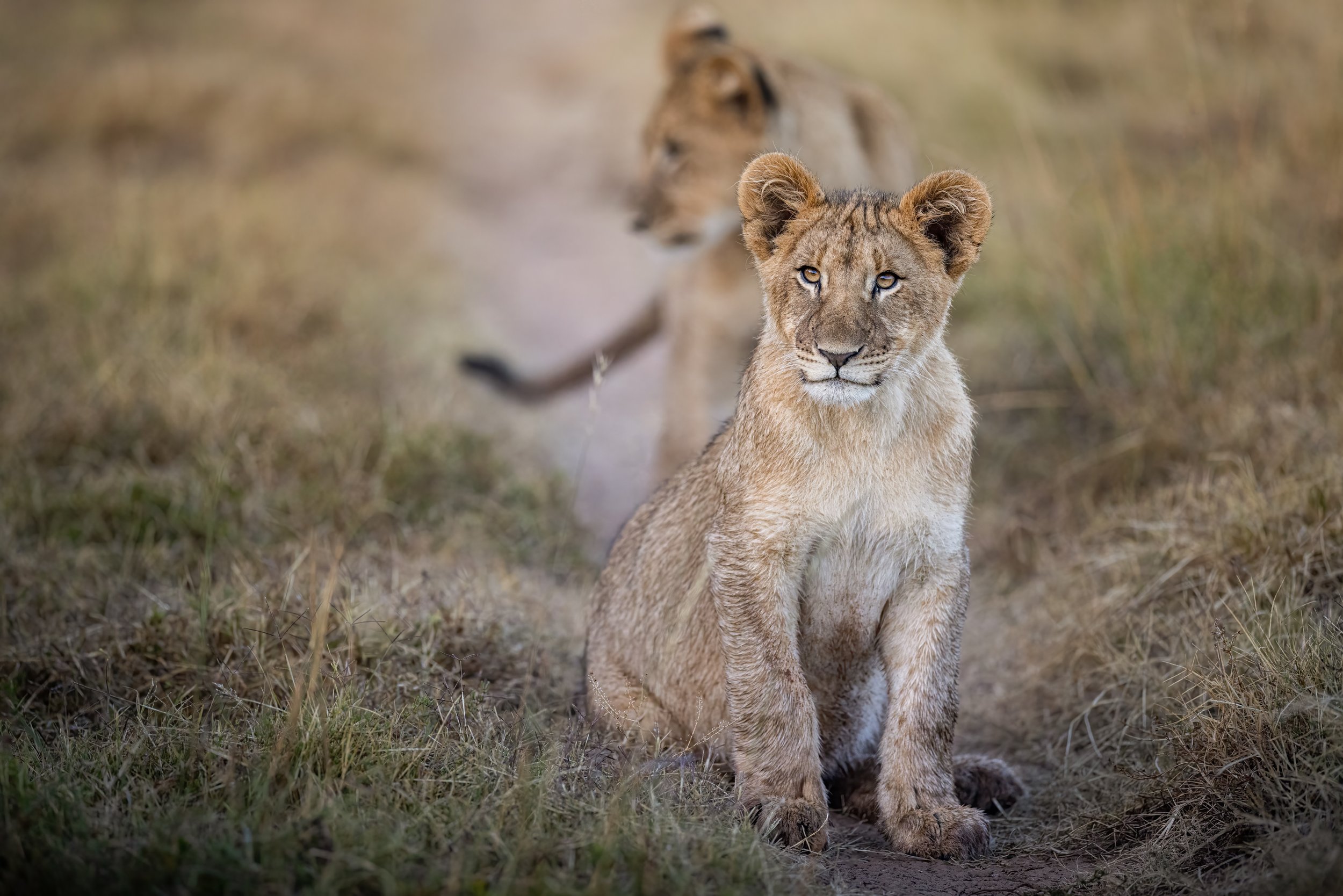

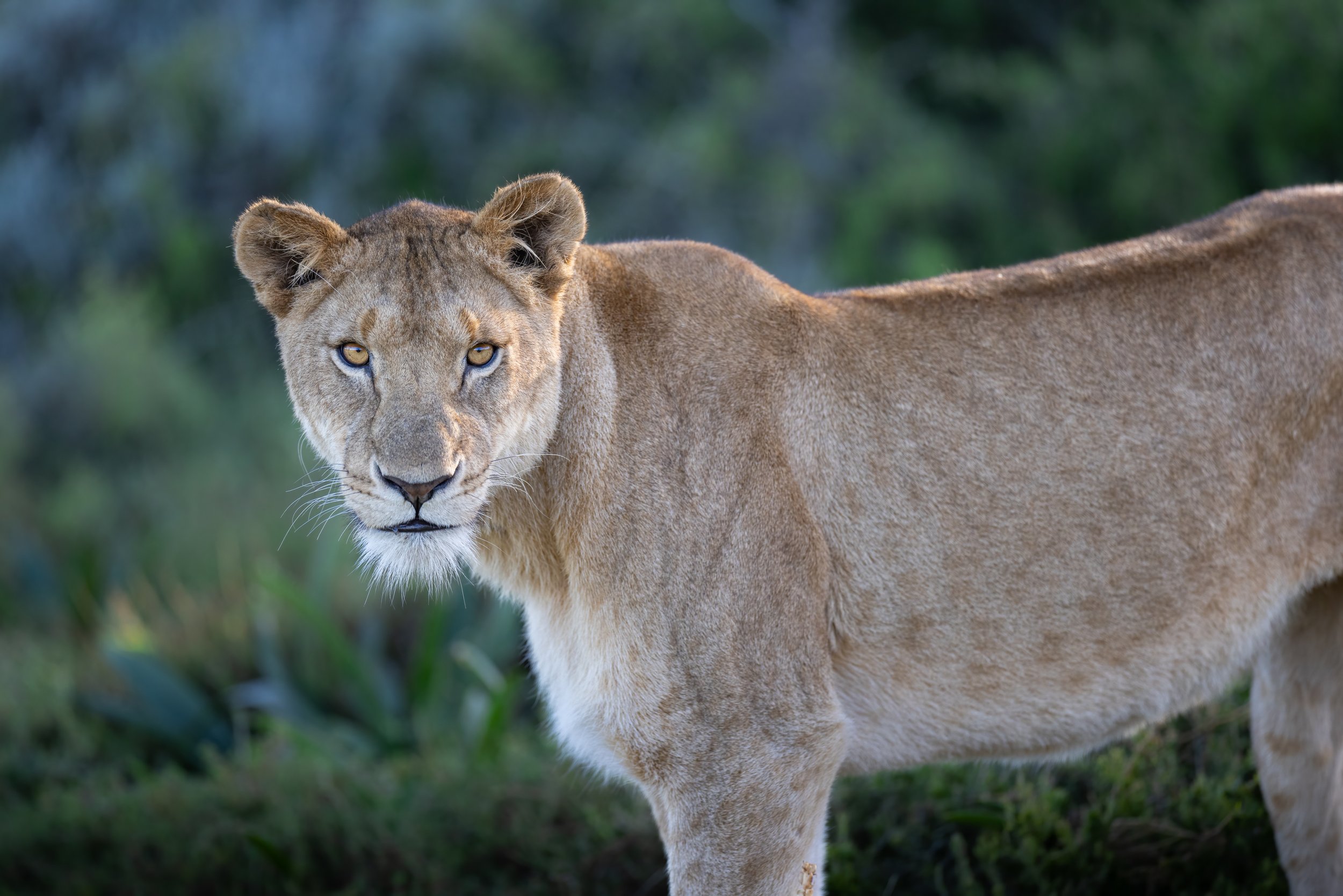
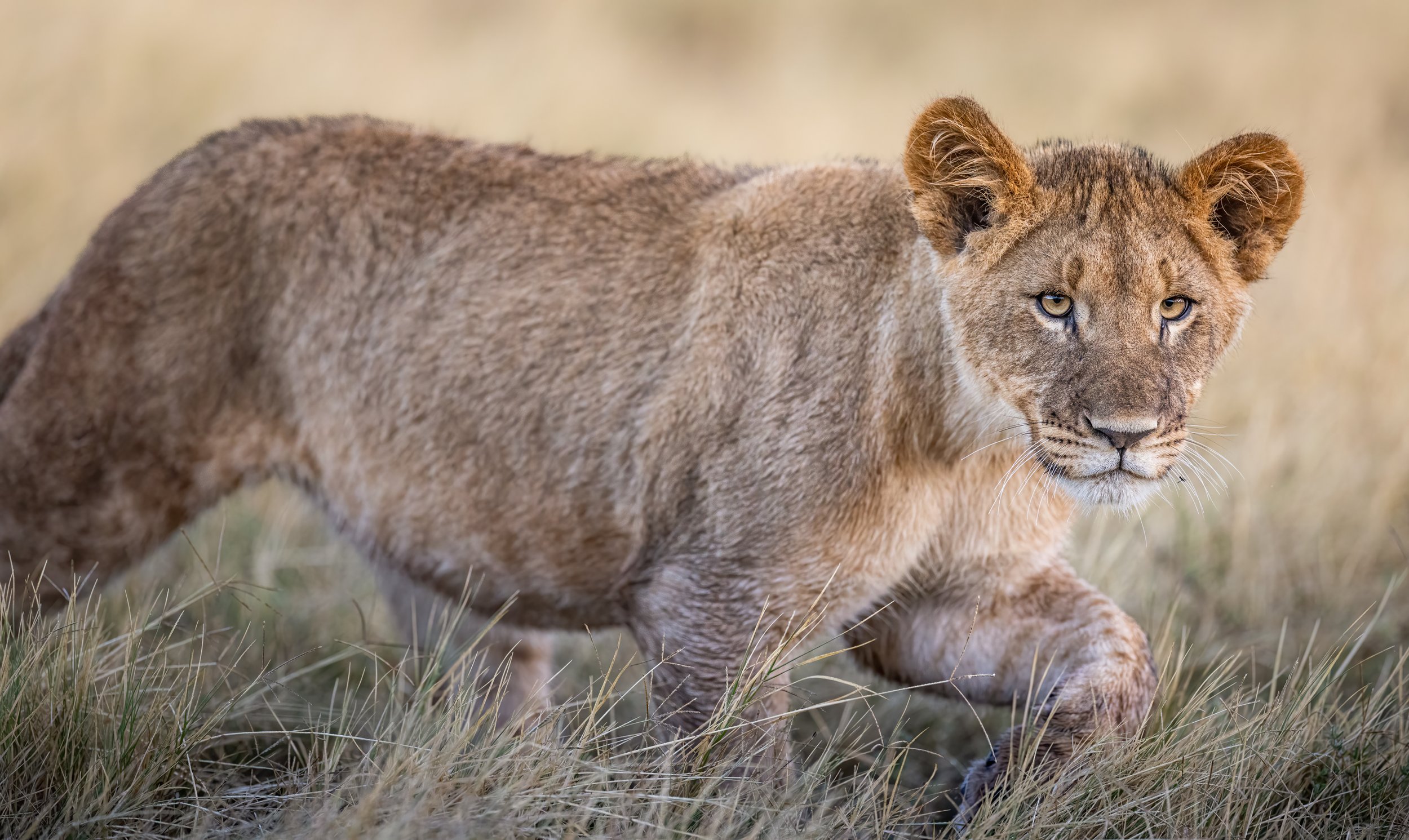
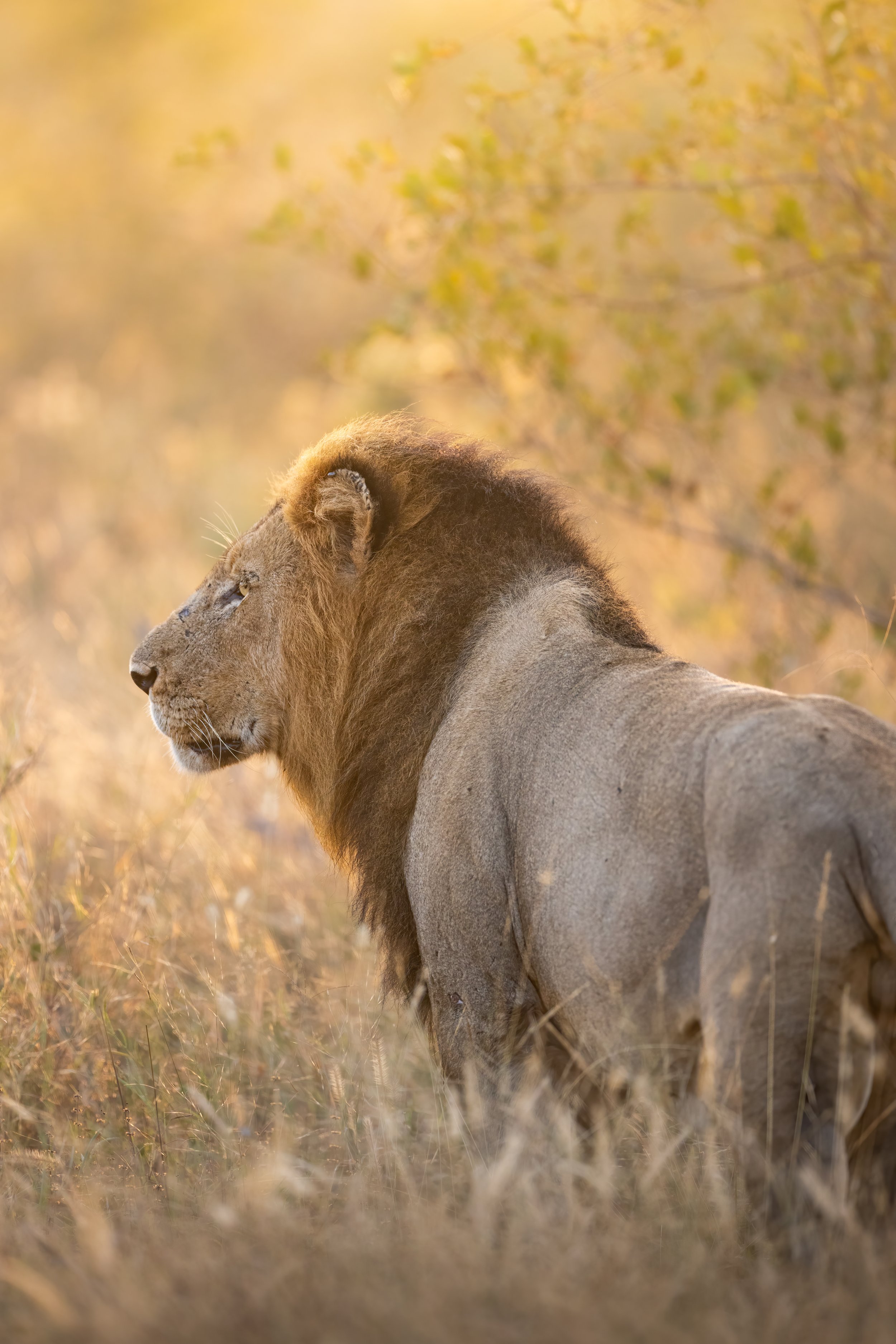
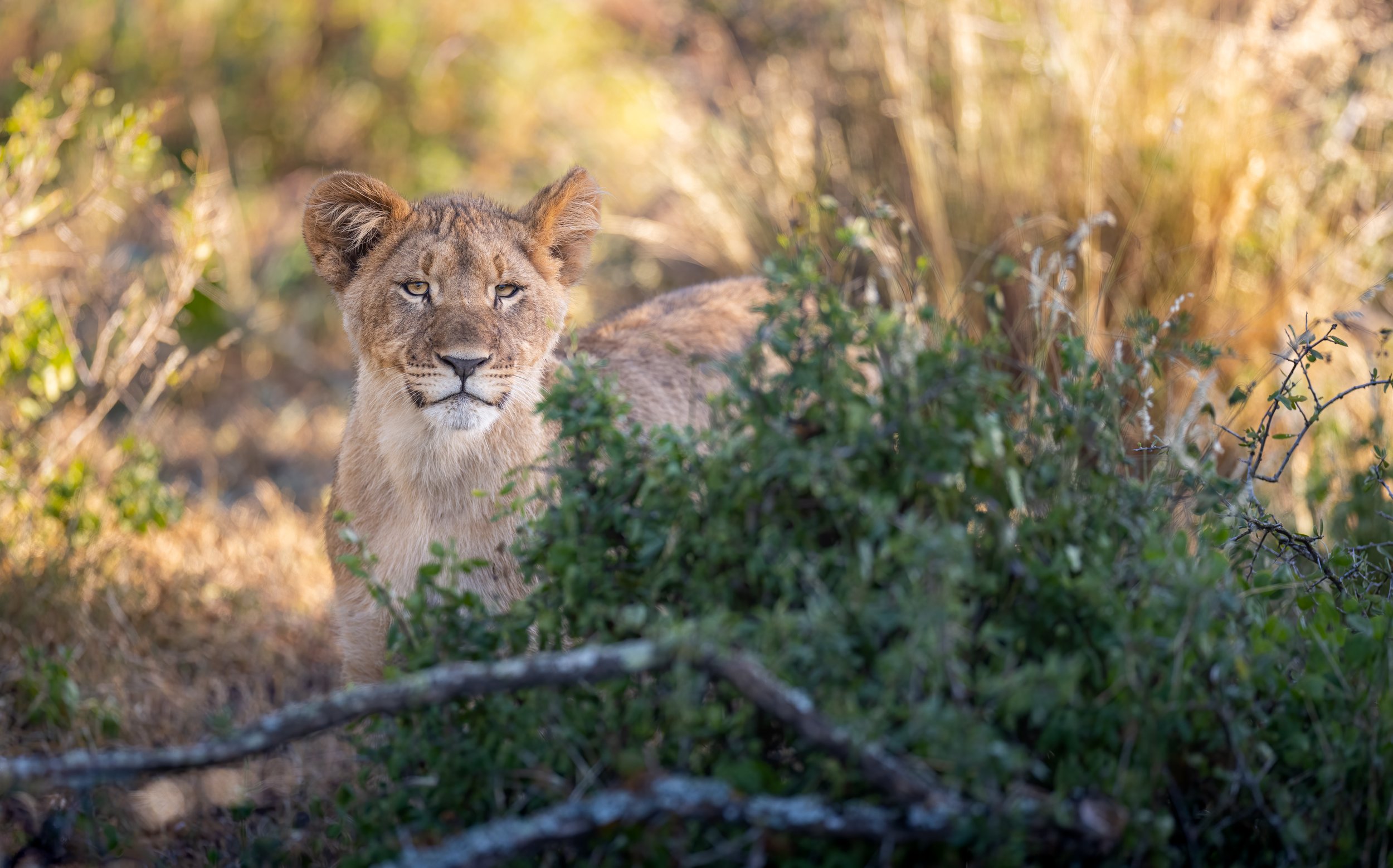
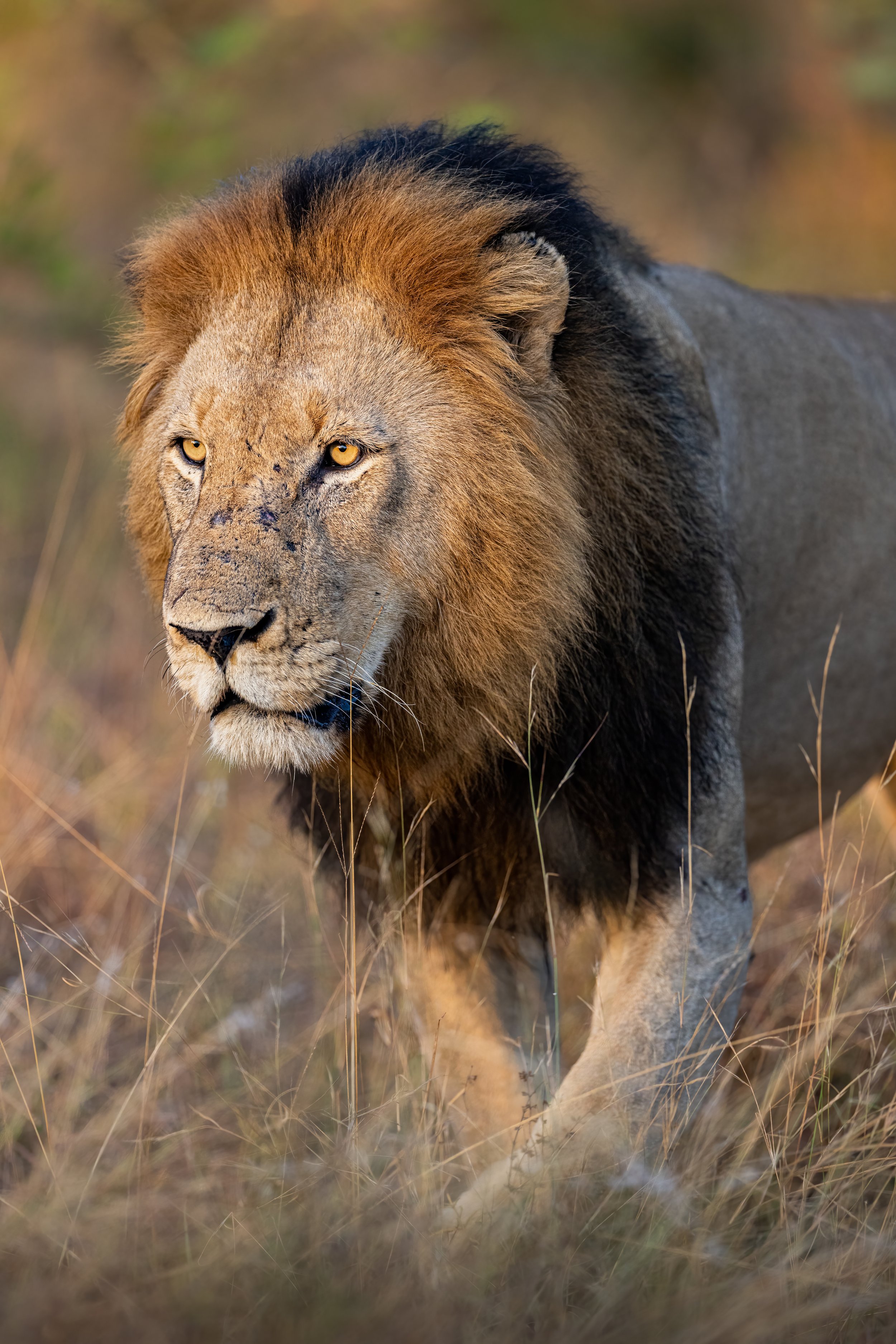
Dex and Tim took us on a guided bush walk, where we were able to walk alongside a giraffe family and photograph them from the ground. We also had a spotting of the elusive (and rare) golden wildebeest. Pretty cool!
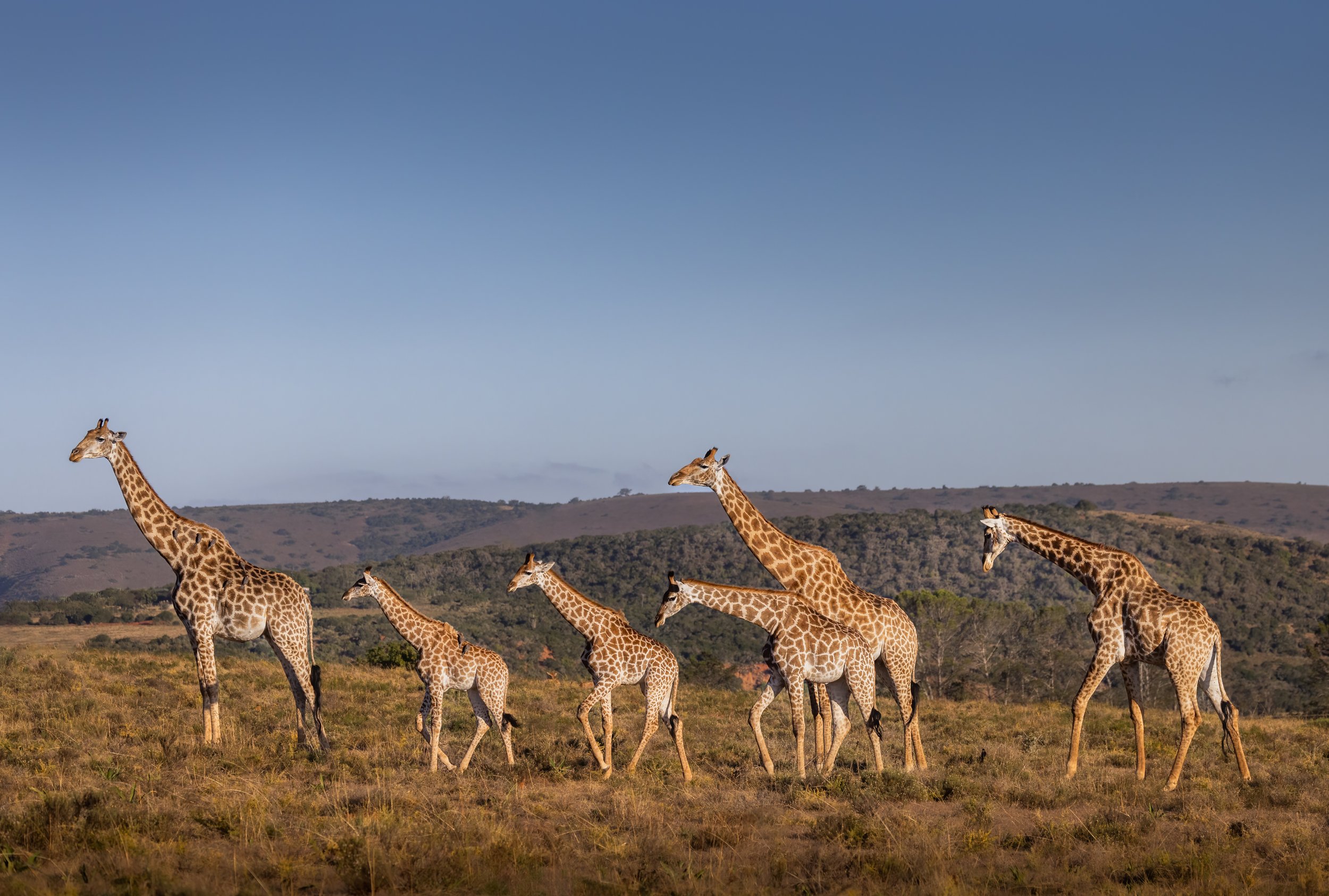
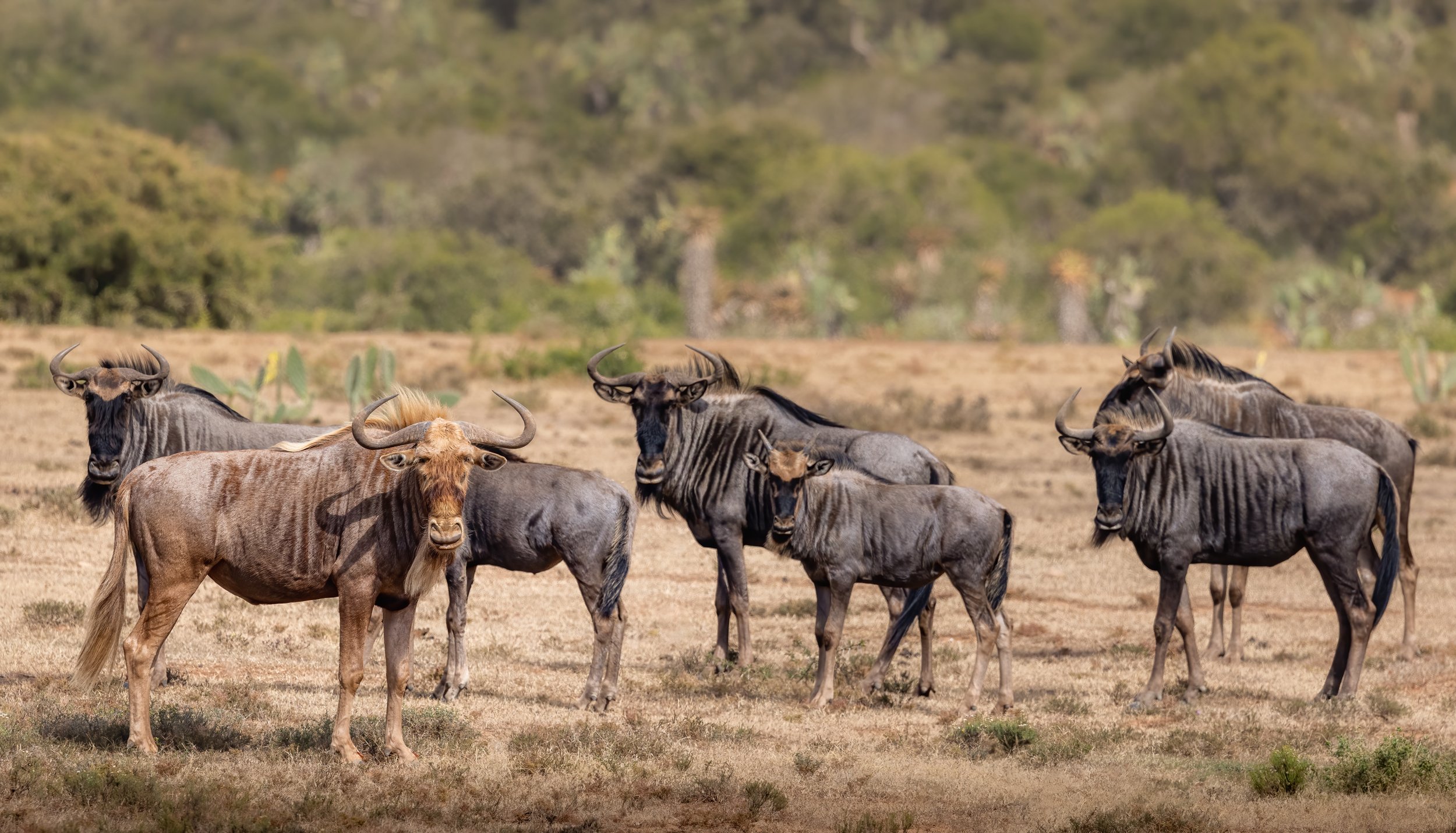
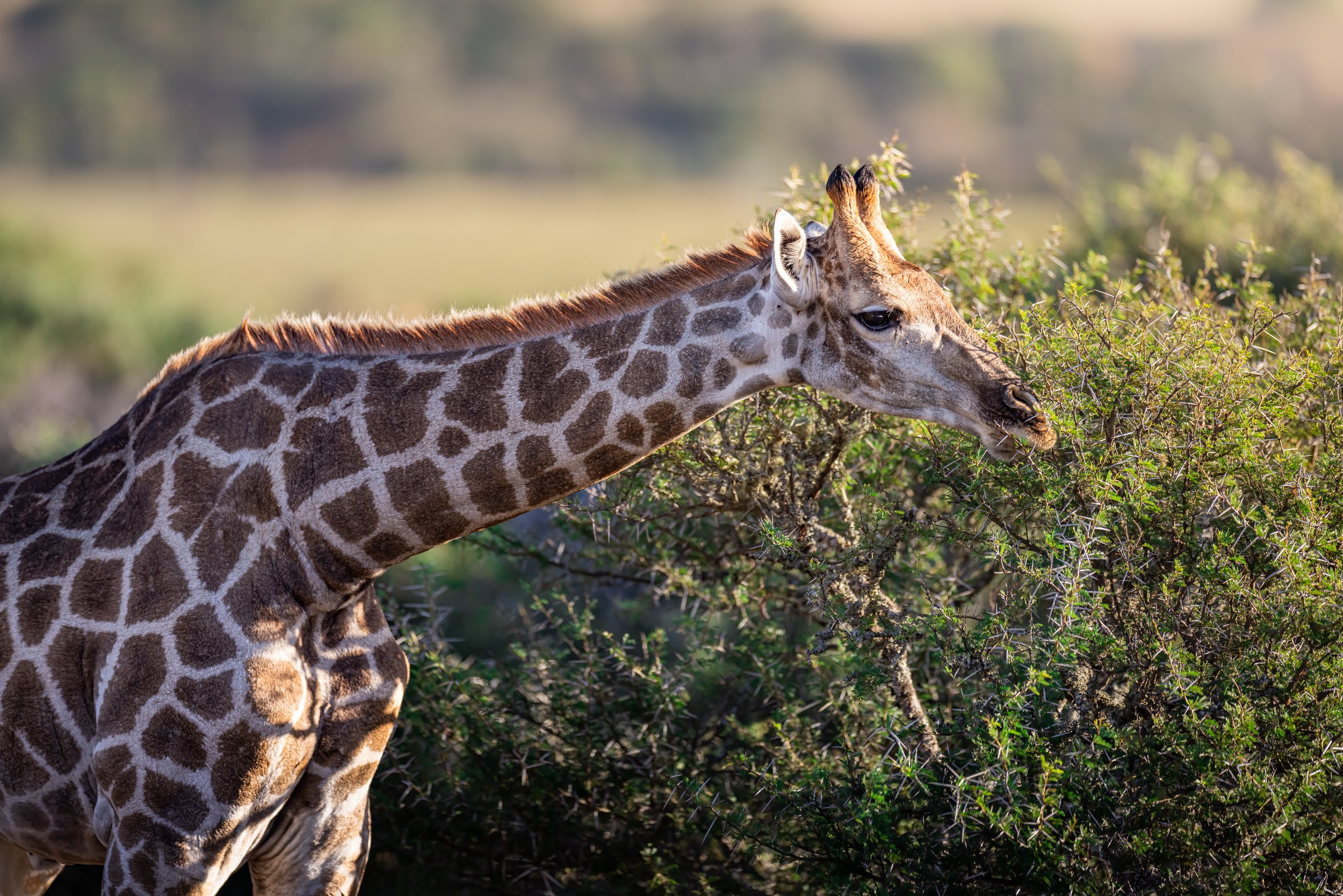


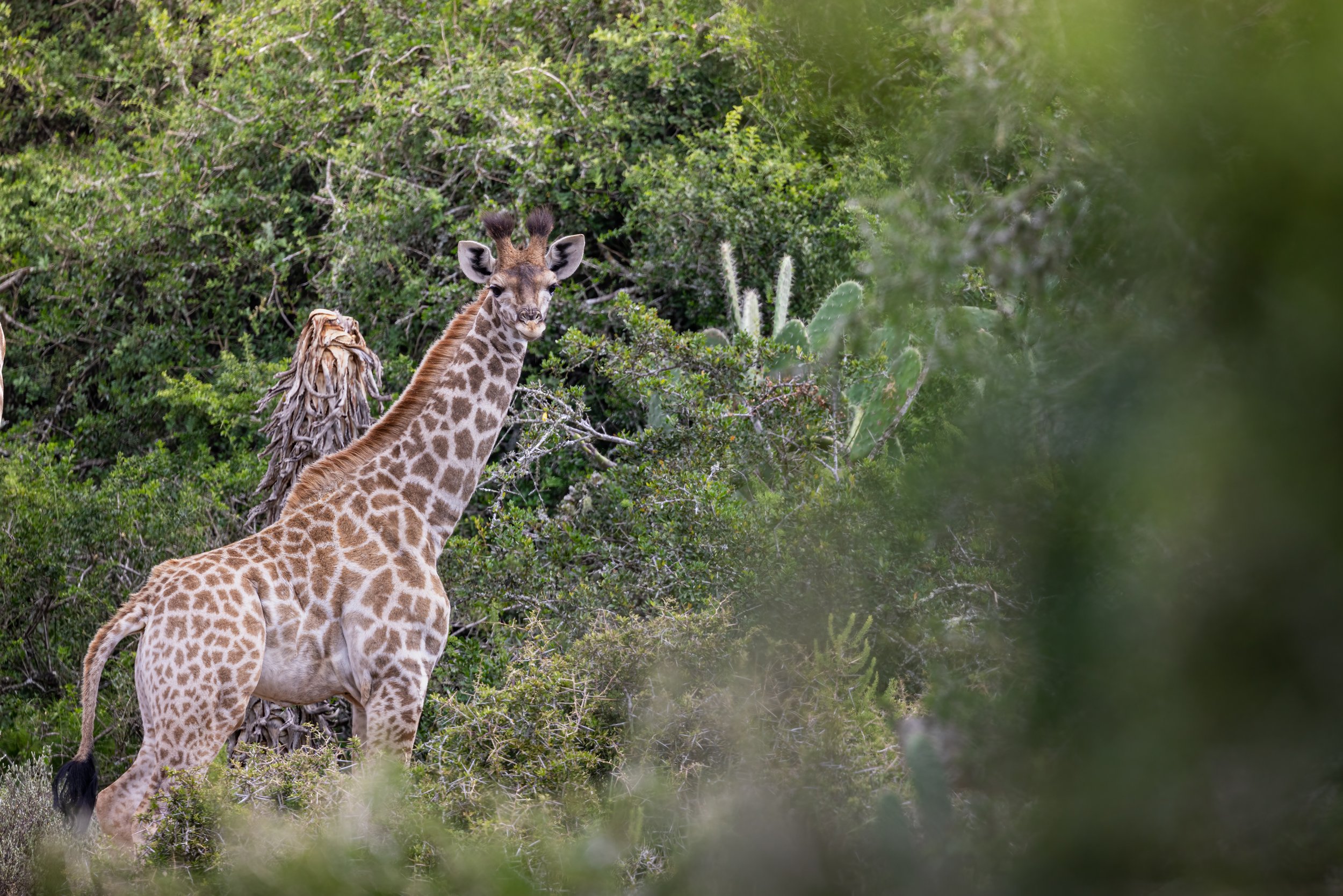
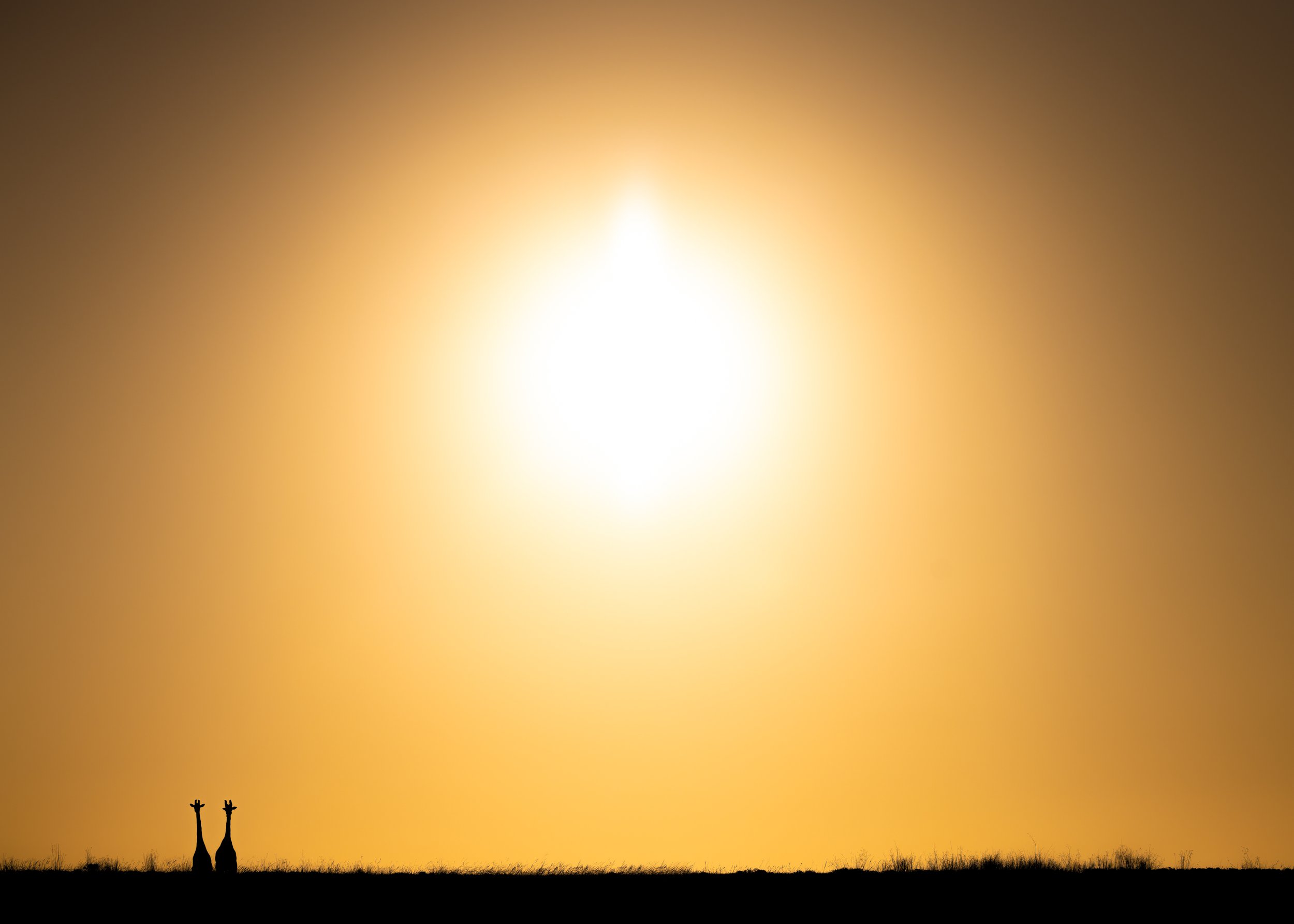
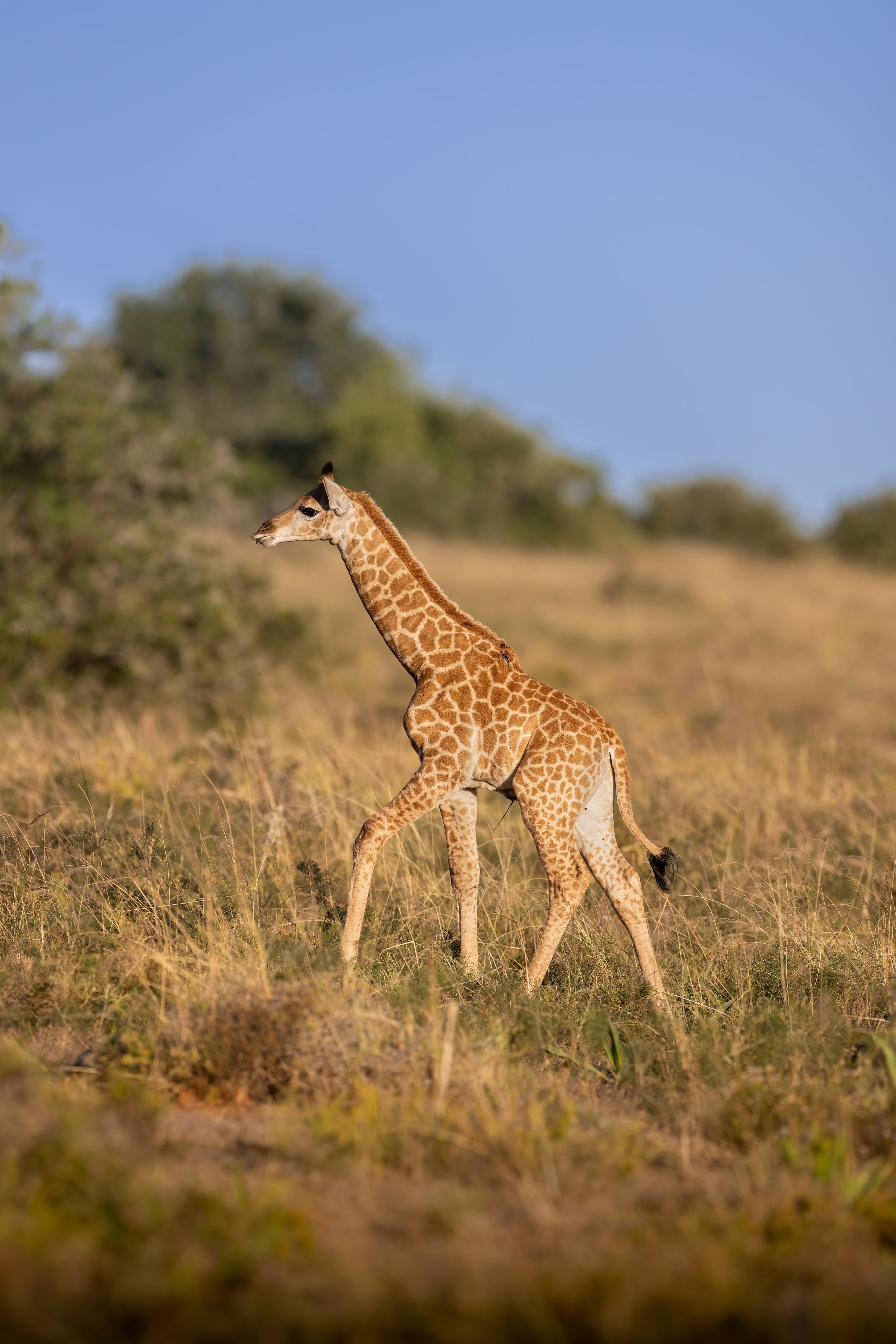
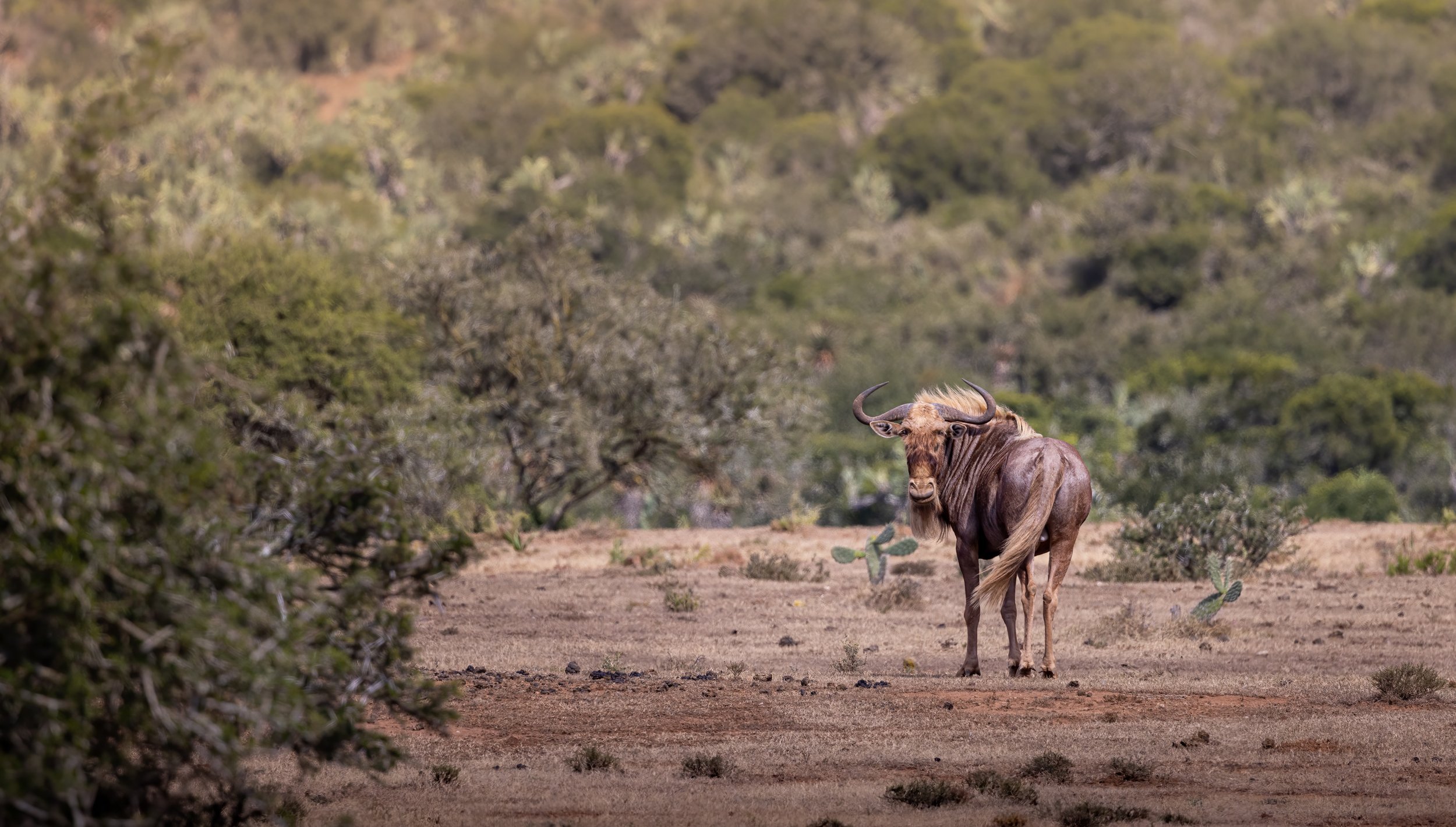
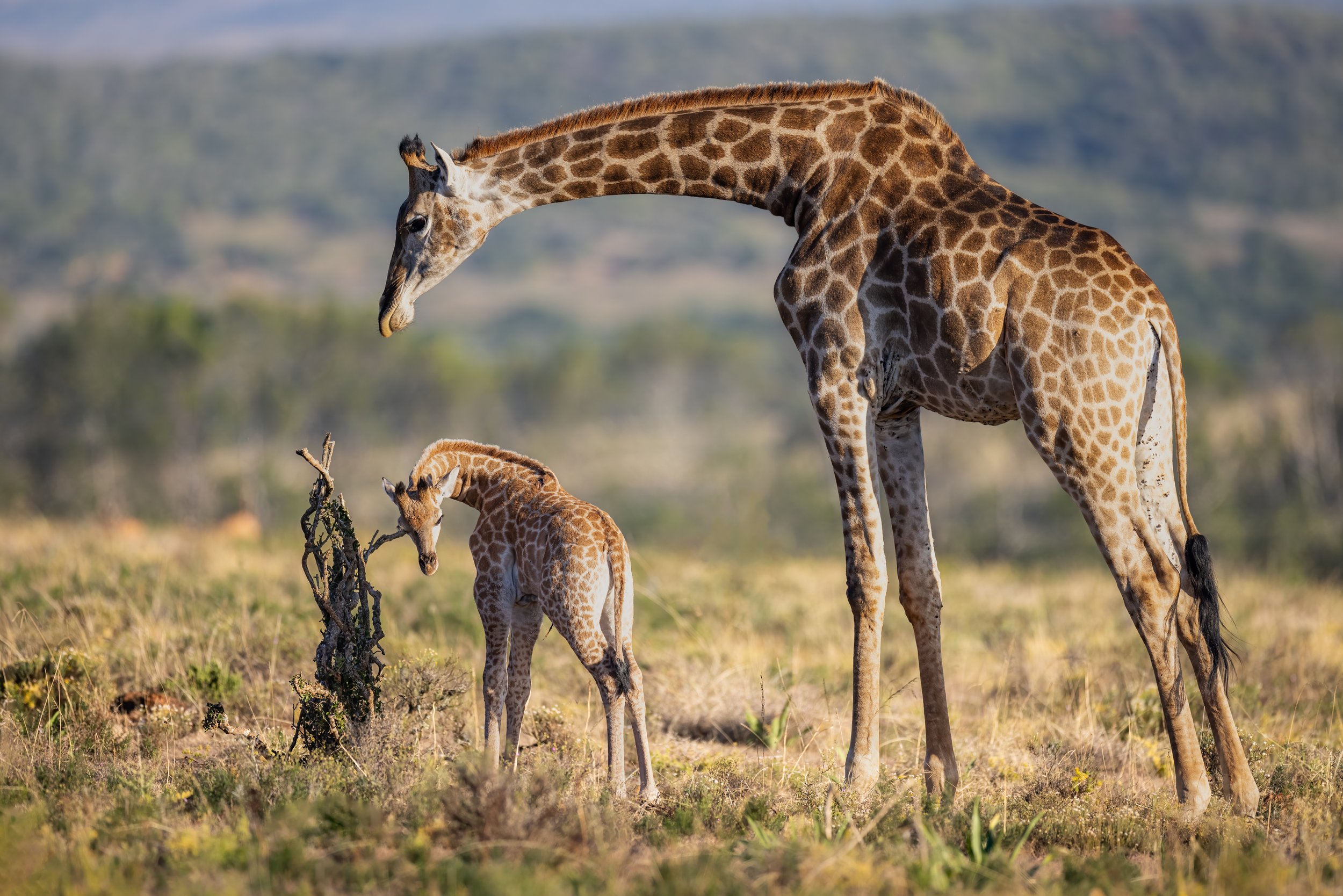
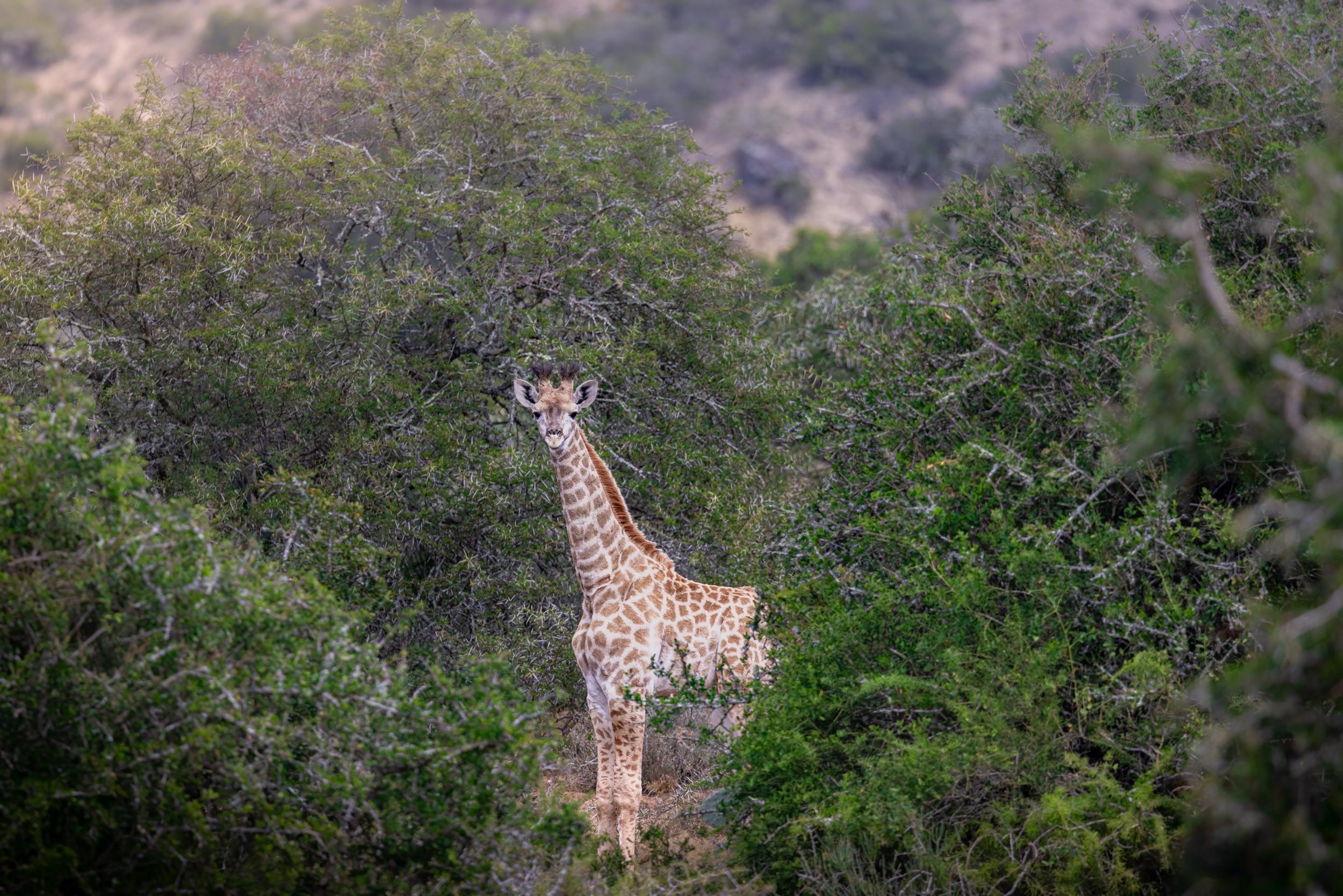
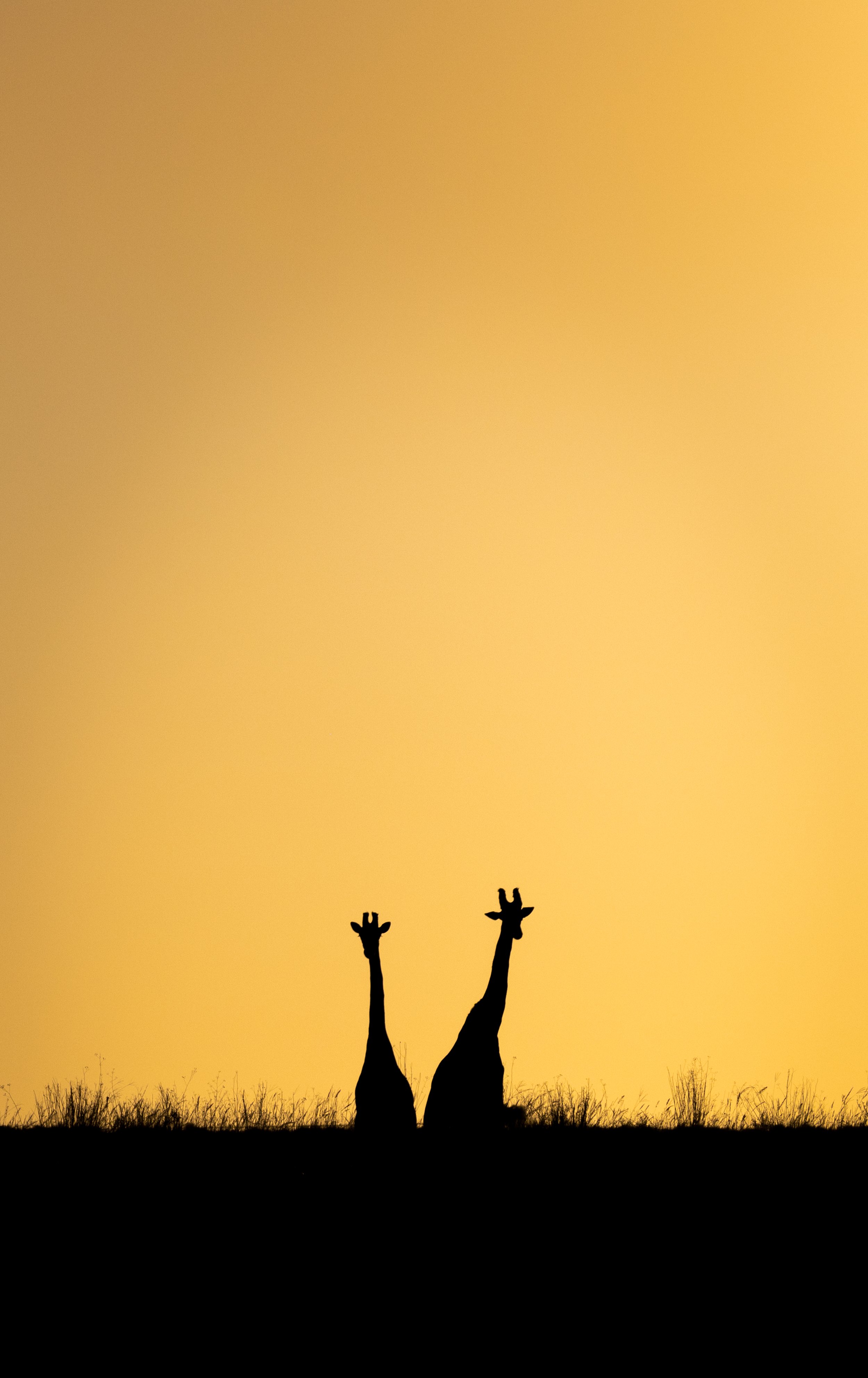
The icing on top of our stay was our evening with three cheetah brothers as they pursued a Cape eland. They gifted us the opportunity to watch them plot their hunt and photograph them in the setting sun after an unsuccessful, but sincere attempt.
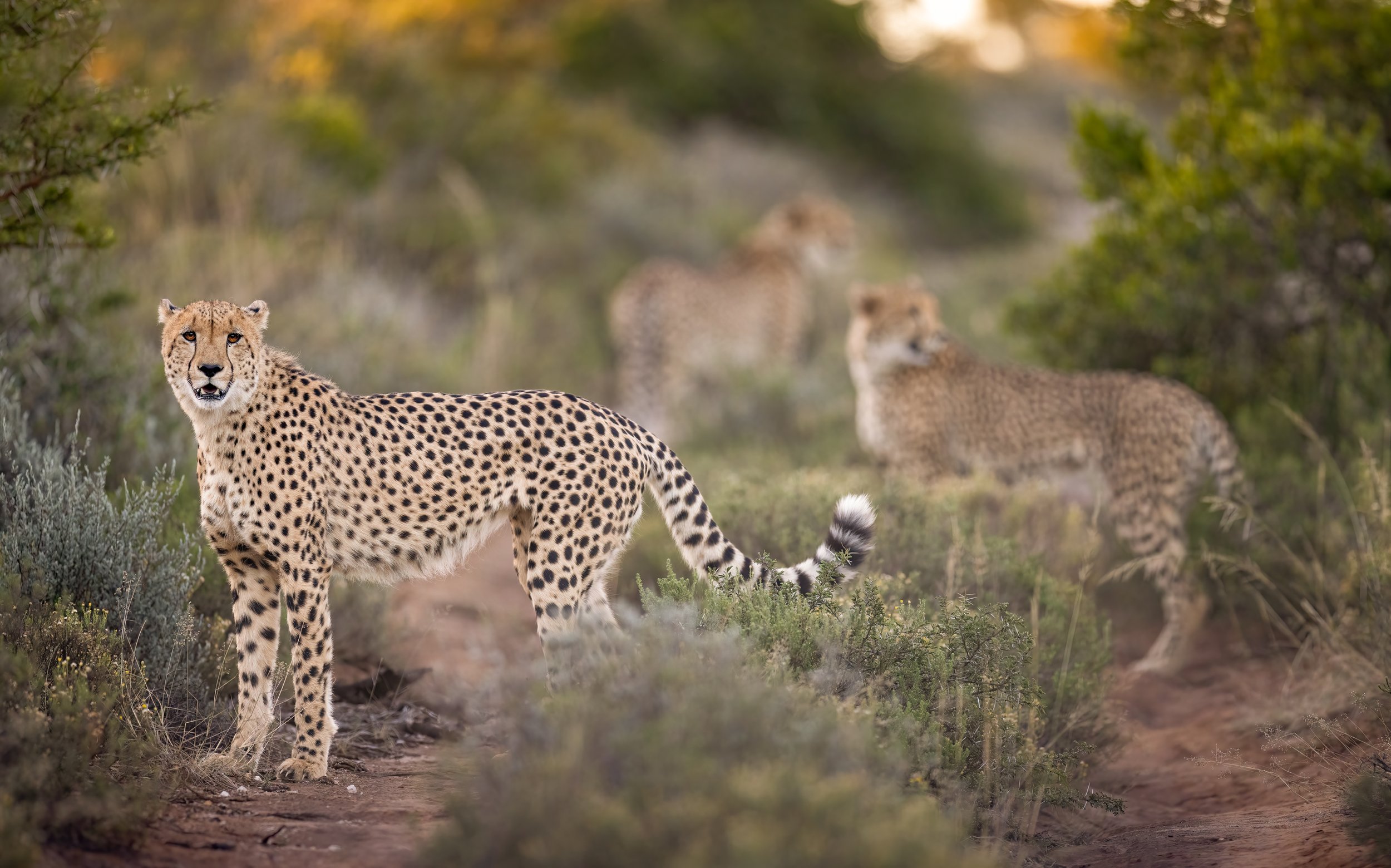
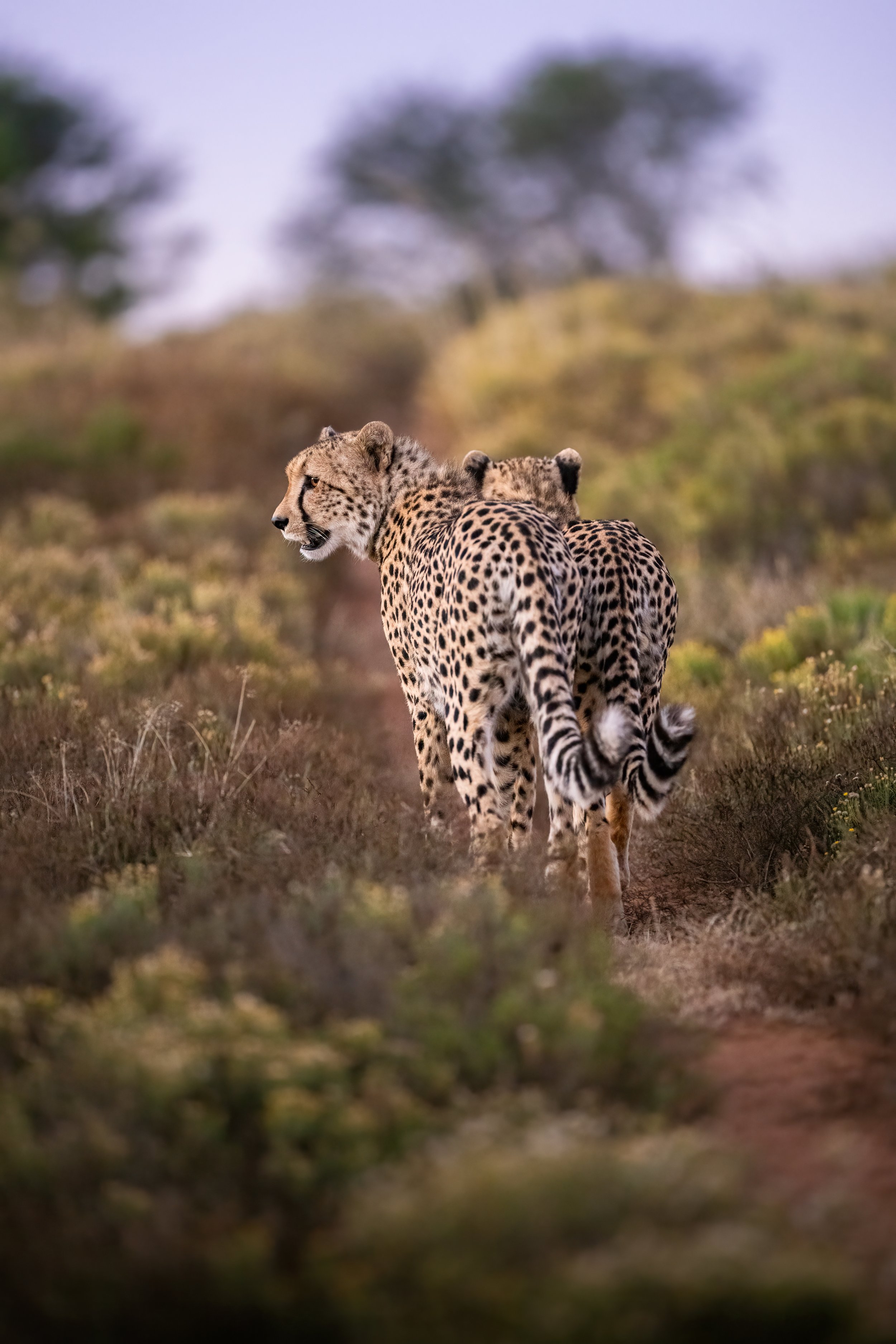
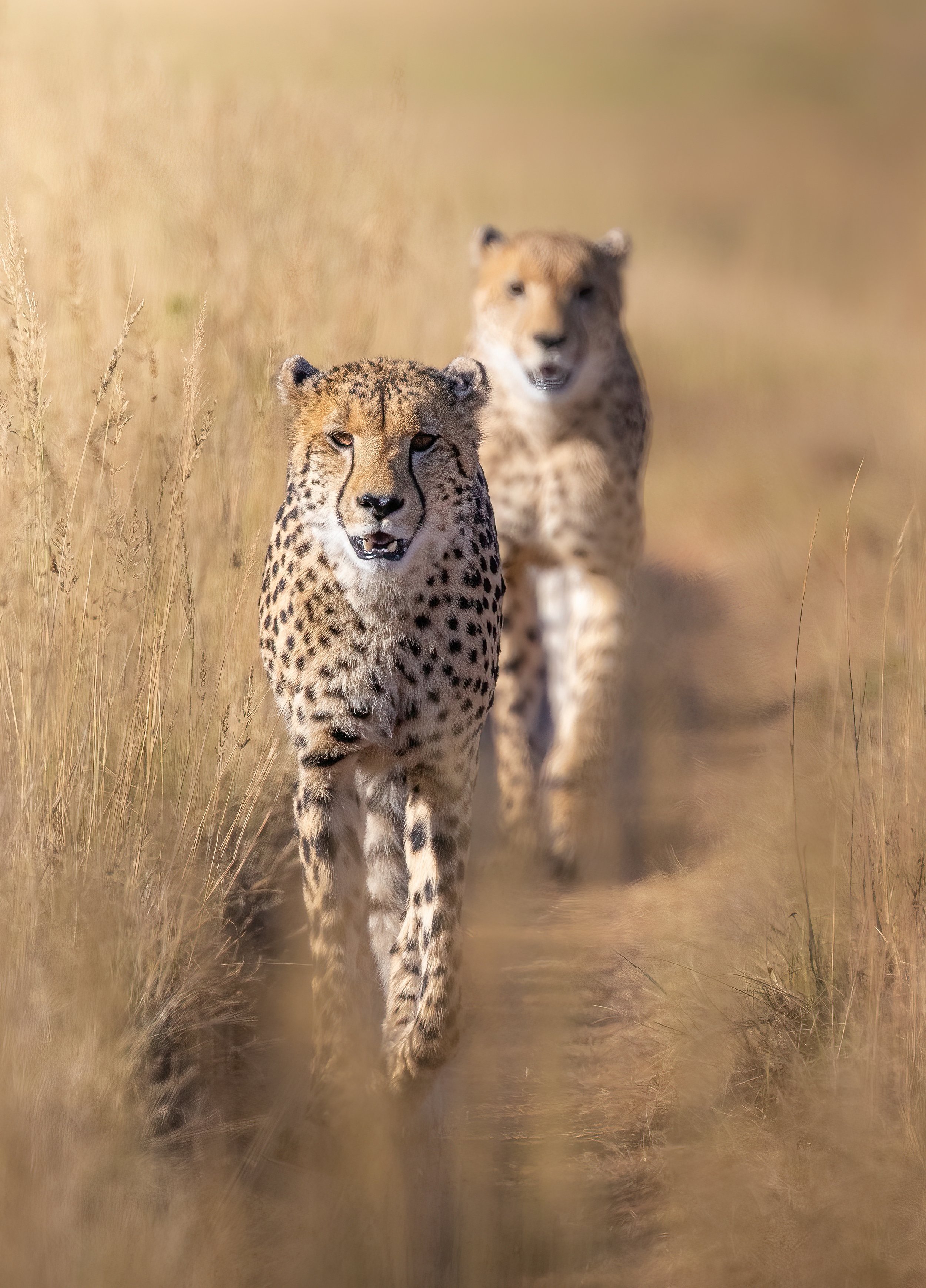
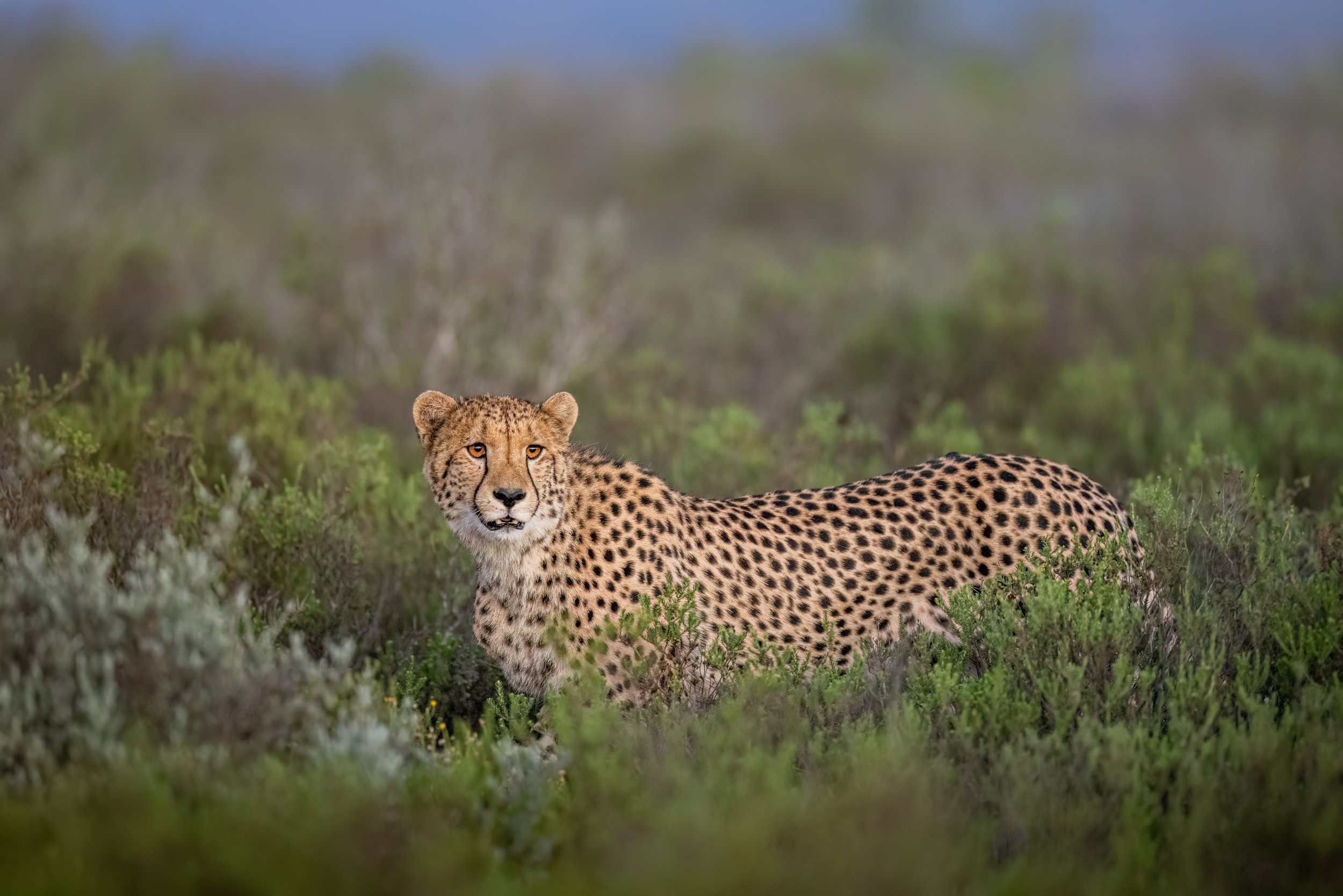
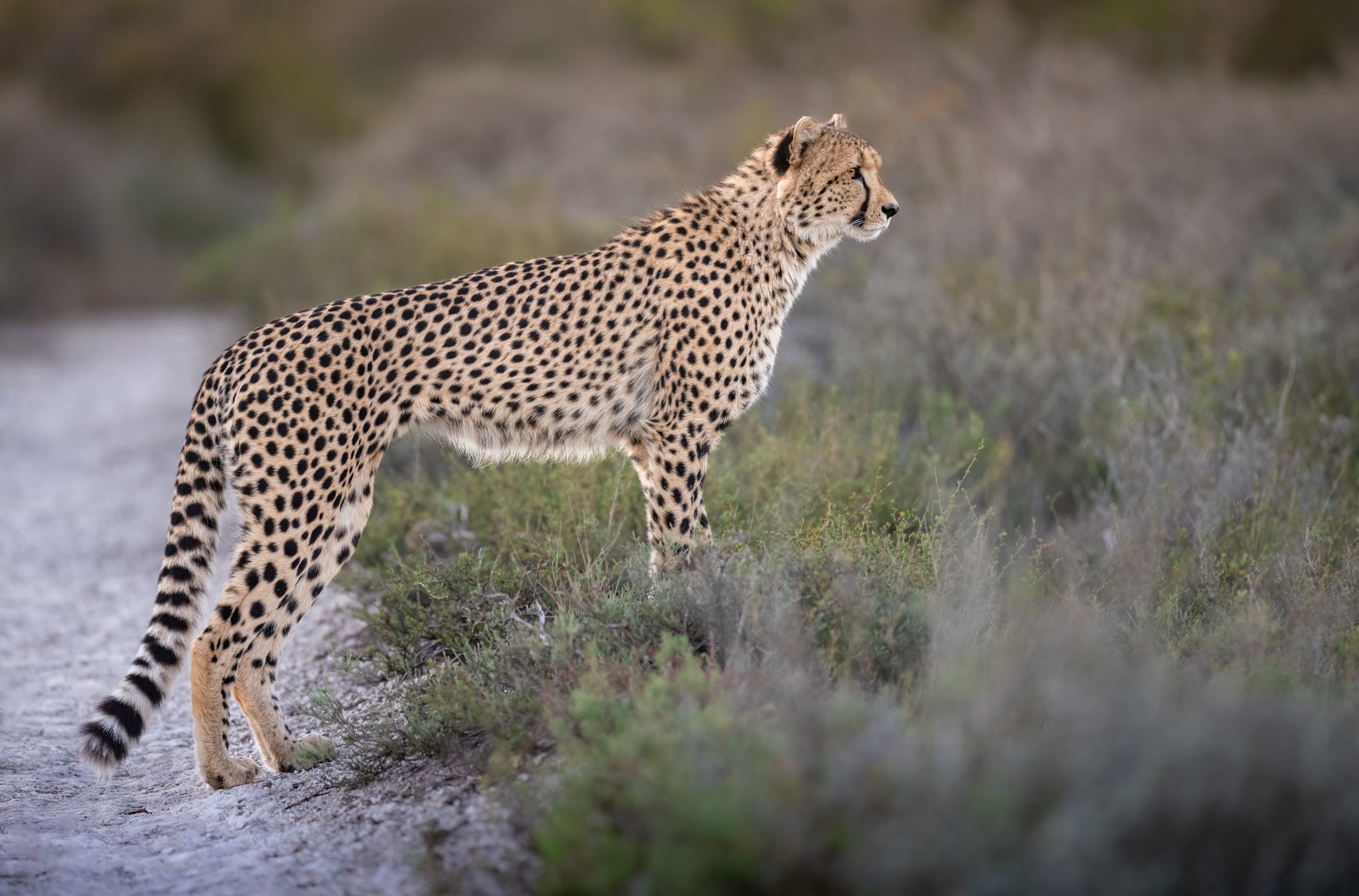
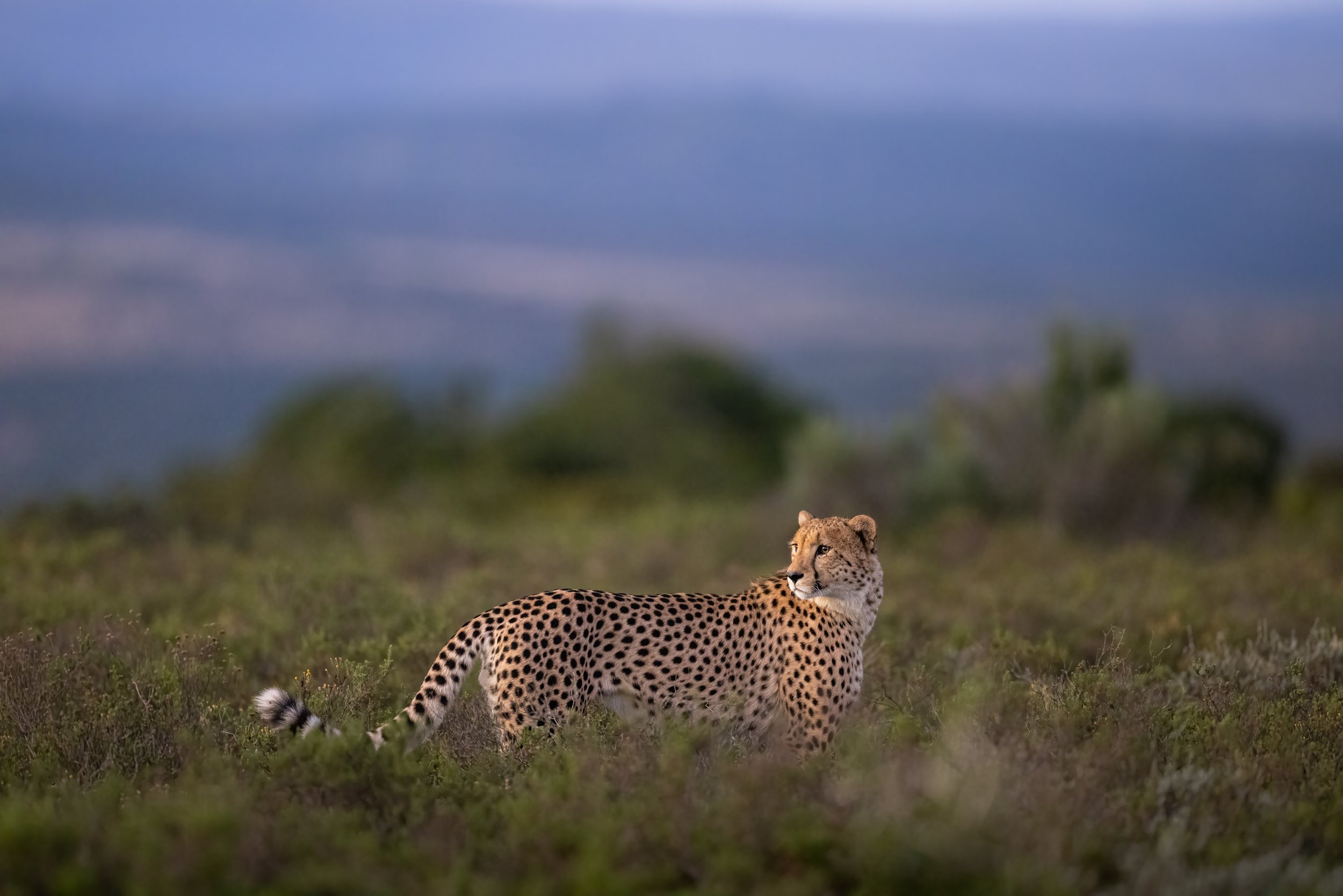
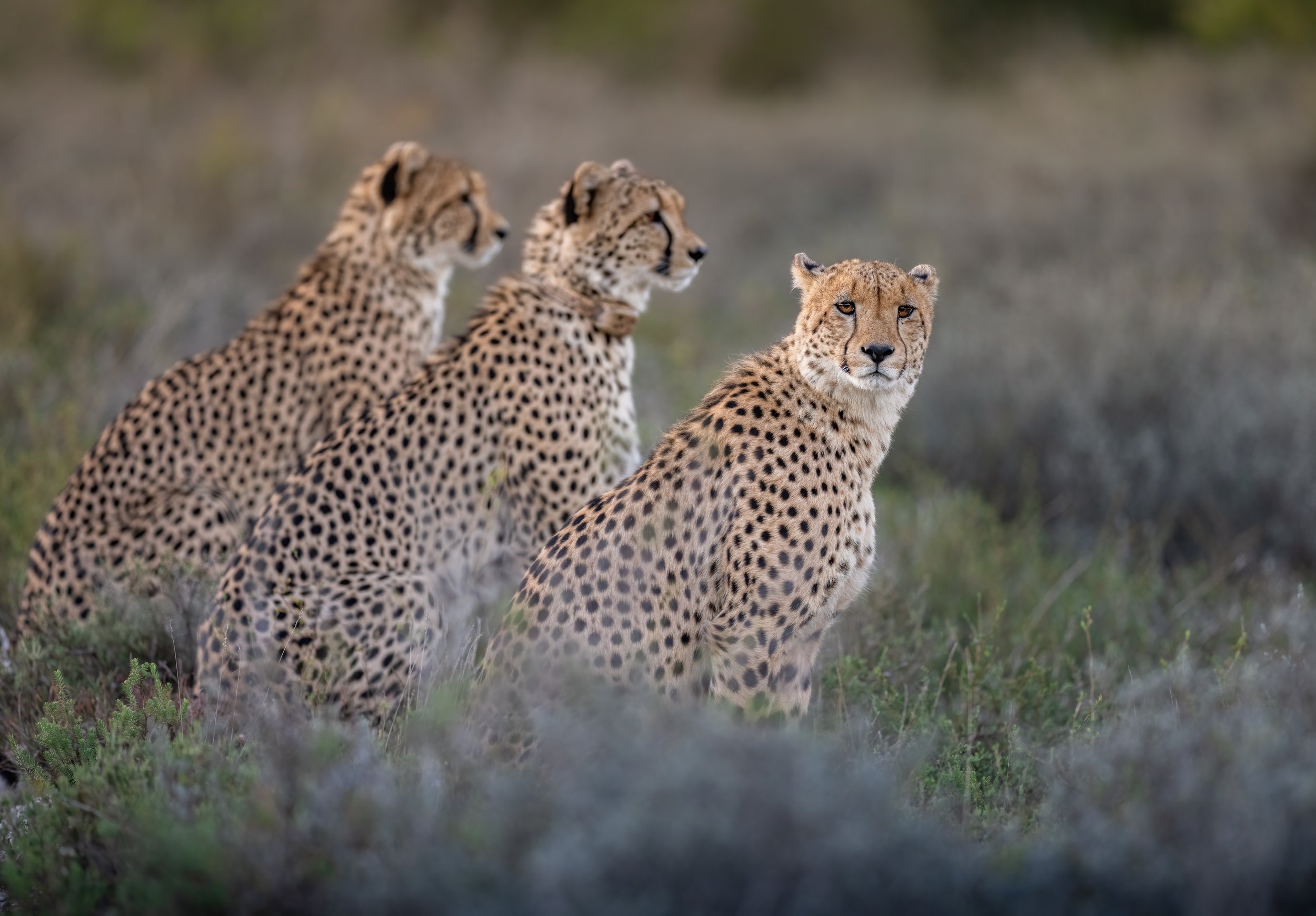
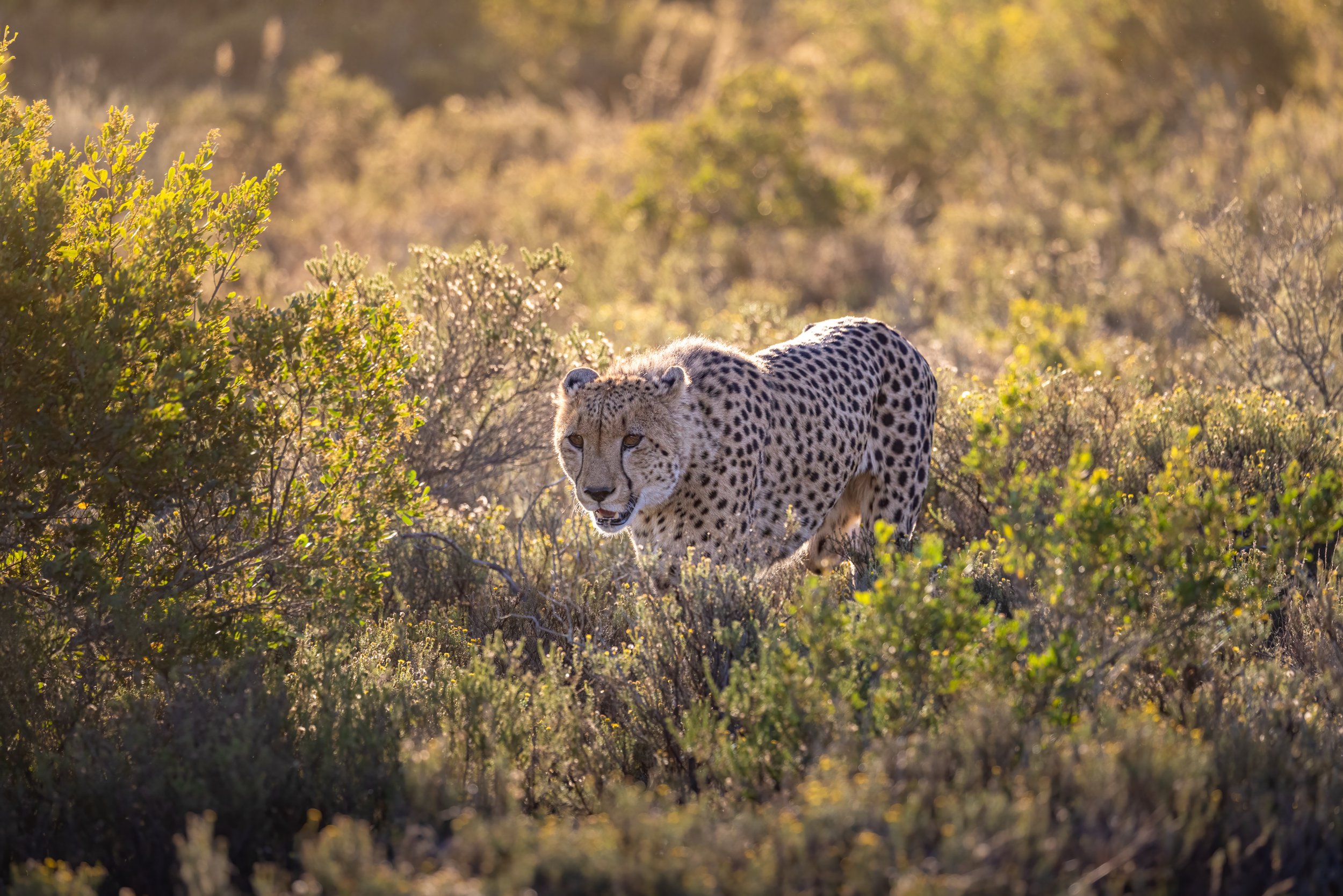
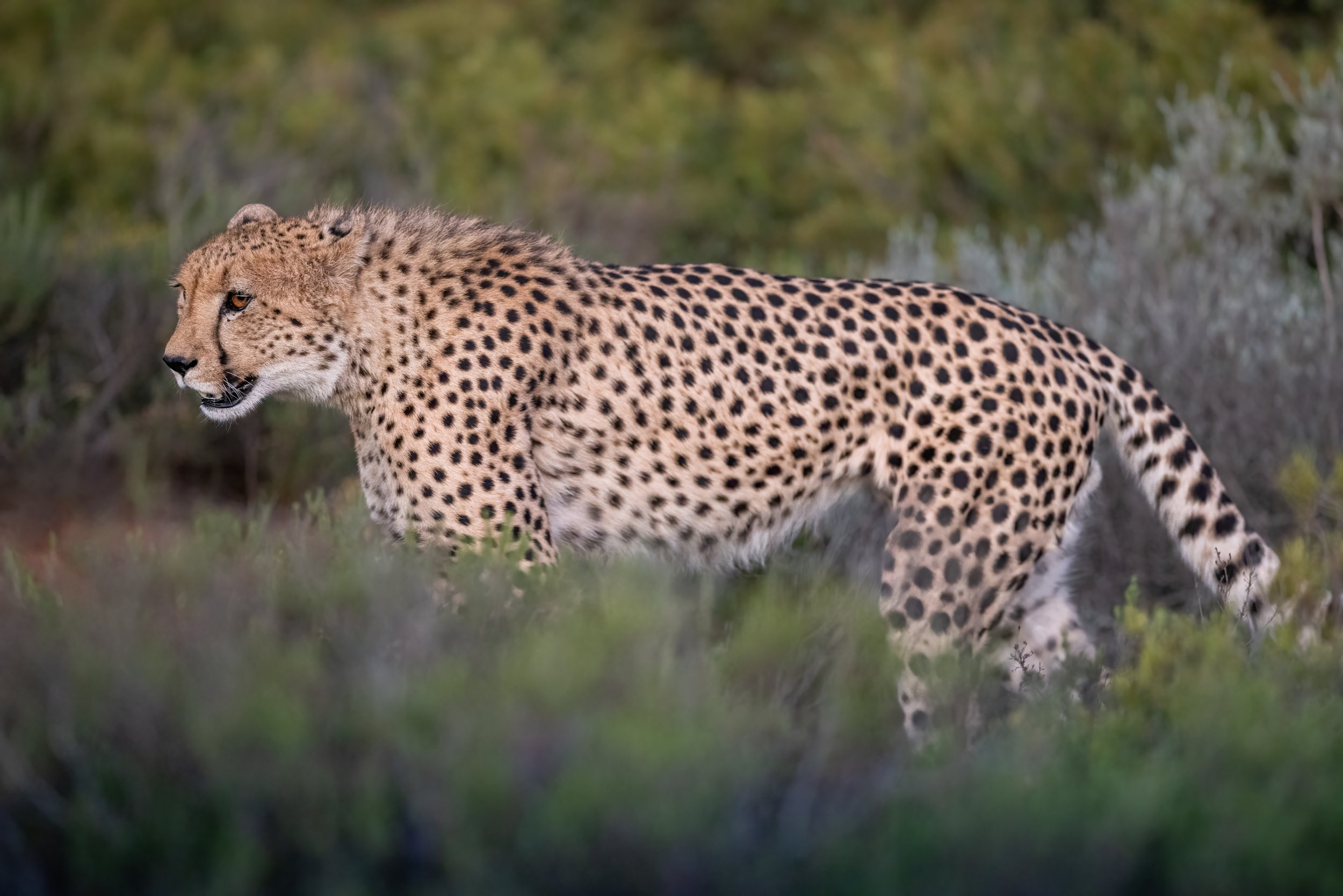
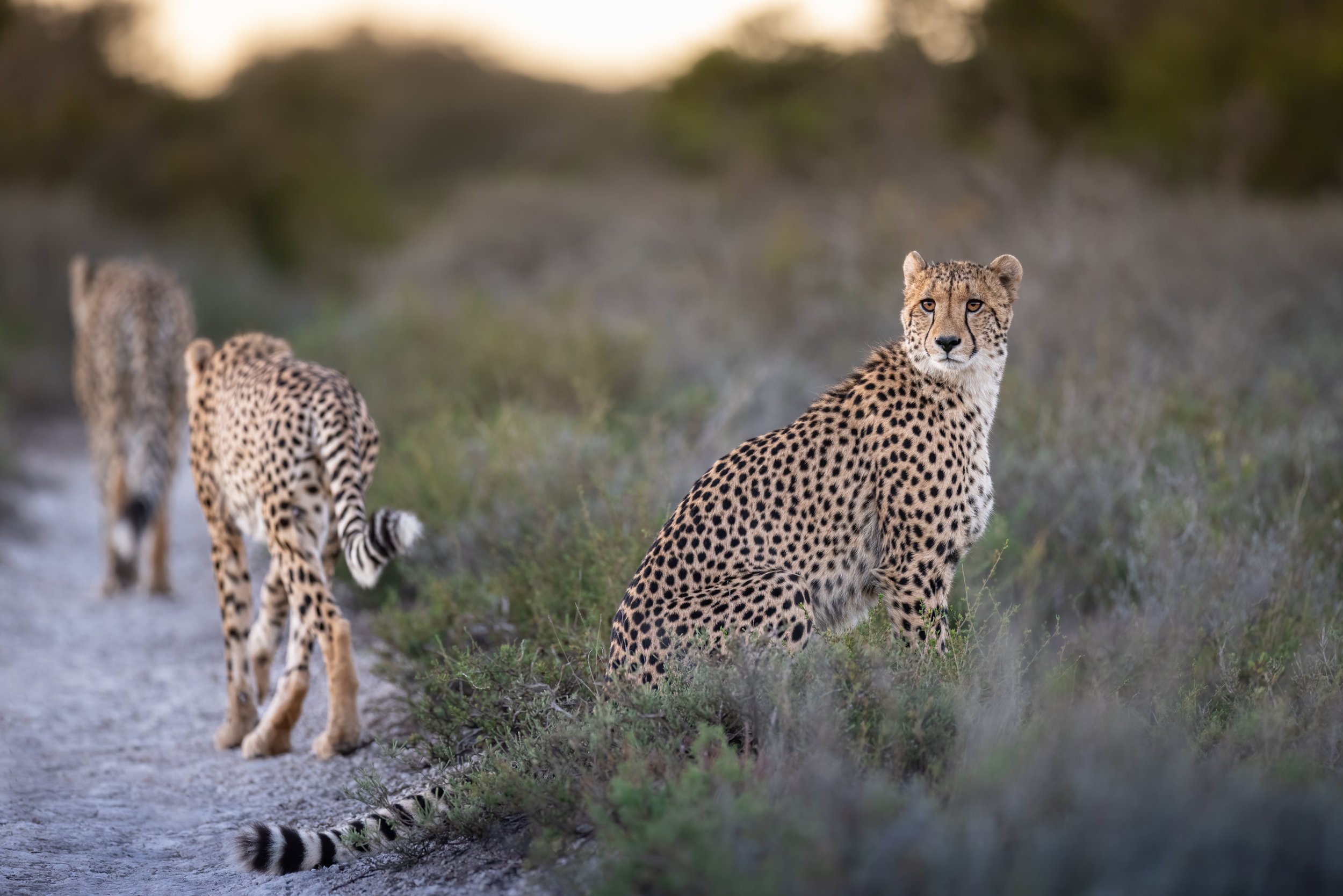
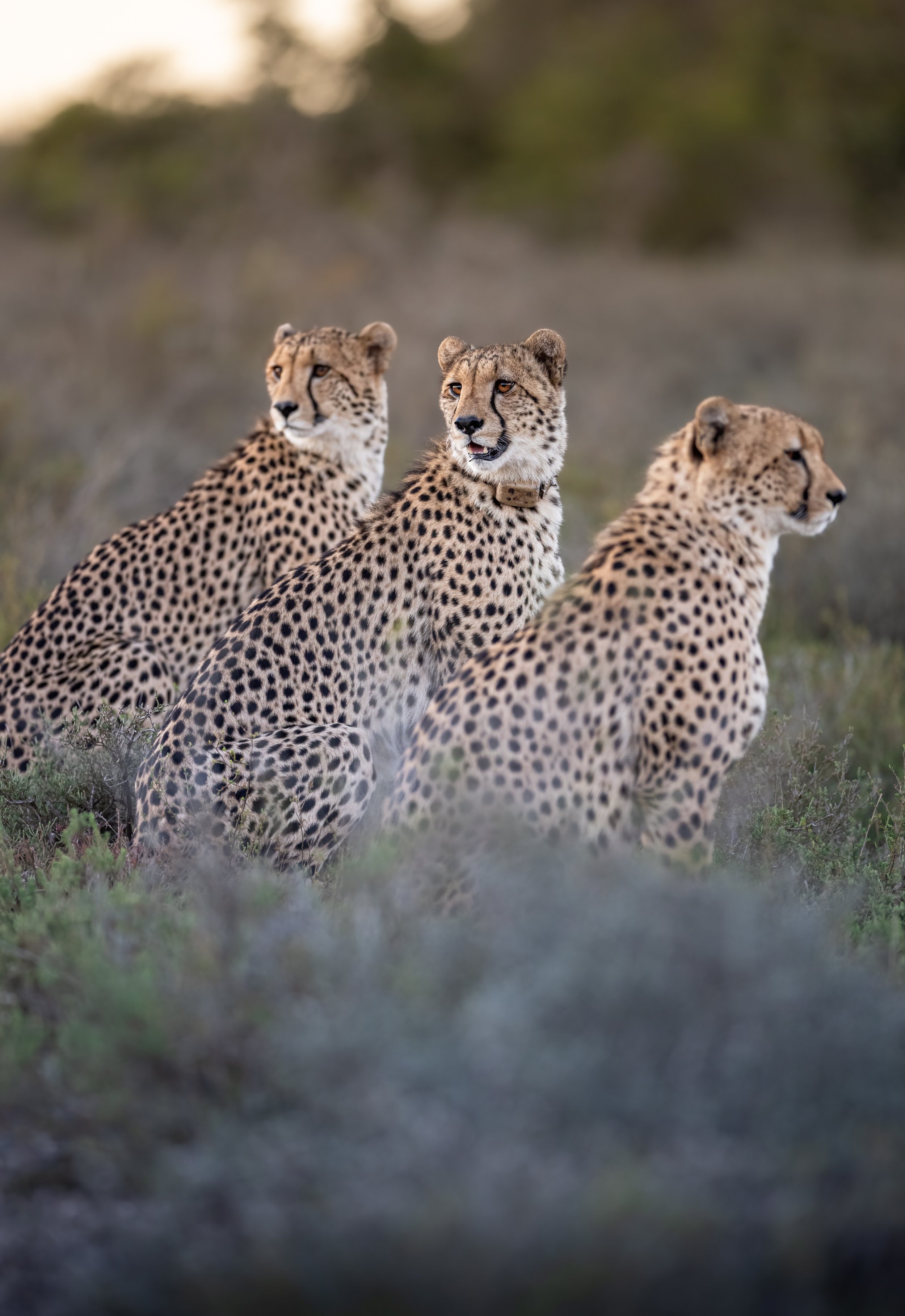
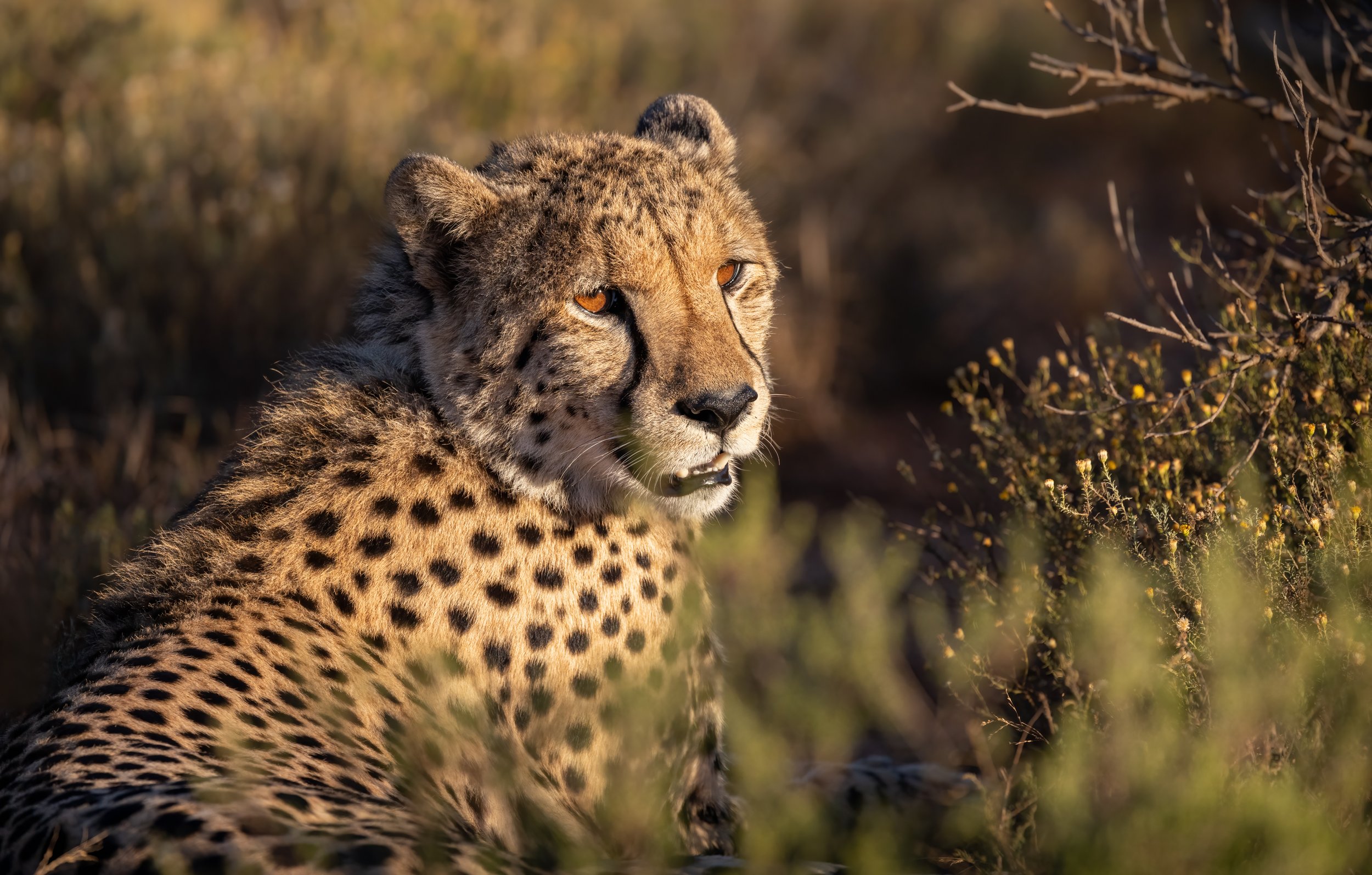

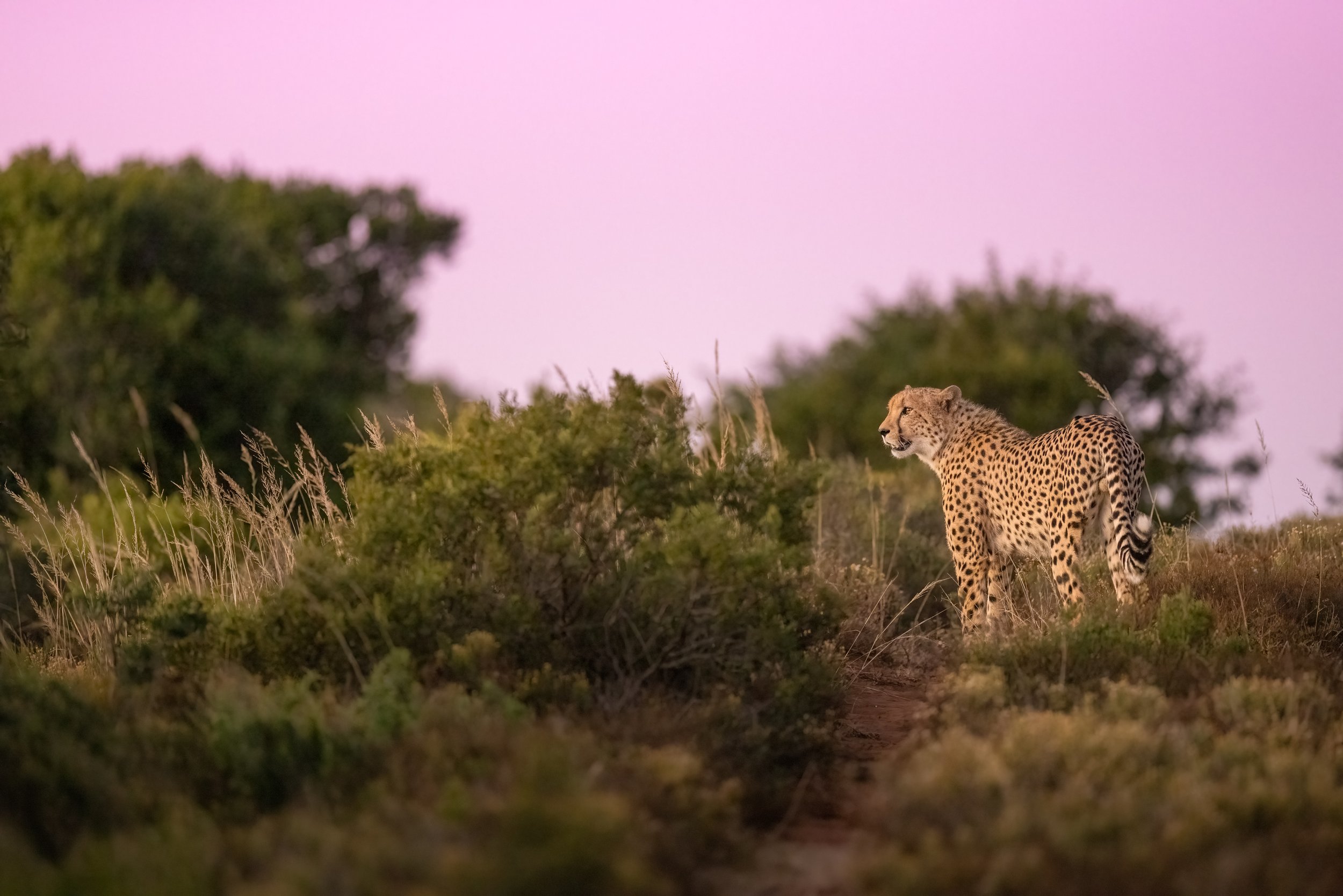
Our early morning departure found us greeted by our resident male lion one last time, seemingly waving goodbye as he laid beside the winding path leading us out of the reserve.
From Amakhala, we drove to the Port Elizabeth airport and took a short flight to Hoedspruit, where our driver Nick was waiting to transfer us to Timbavati Game Reserve for four more nights on safari.
Timbavati is in the heart of the Lowveld region of South Africa, which sports over 53,000 hectares of natural wilderness. The lack of fences between Timbavati and its neighbouring reserves (Kruger National Park, Klaserie, Balule, Umbabat, Thornybush) offers a great abundance of wildlife. The region is known for its big cats, as well as critically endangered populations of wild dogs, black and white rhinos, white lions, pangolins and cheetah.
Our lodge was immaculate, with a relaxed ambience and indoor and outdoor guest spaces that flow into each other. With six chalet-style suites, guests could enjoy their private verandah for romantic candlelit dinners and editing time, or the bush views from the indoor or outdoor shower and soaker tub.
The architect was inspired by traditional South African design and left no stone unturned when mapping out the amenities. Our group felt at home, pampered and very well tended to.
Much like our first reserve, Timbavati offered twice daily morning and evening game drives in an open 4x4 safari vehicle. The main difference: we were provided both a wildlife tracker (who sat at the helm of the vehicle reading prints dusted in the sand) as well as a guide who took us off-roading at the sight of something exciting.
We truly felt like we were in the outback and experiencing the wilds of Africa, Steve Irwin style. It wasn’t uncommon for our tracker to take off on foot into the bush with nothing more than the clothes on his back and a walkie-talkie to pursue fresh tracks. This was particularly true of our cat encounters. Our tracker would then radio us an exact location, and after a thrilling drive we’d enjoy uninterrupted game viewing. Our trackers and guides were an essential pairing, both equally as important when tracking in the vastness of the Greater Kruger area.
The comradery of our team was insurmountable and contagious. The entire trip it was clear we were surrounded by people who are passionate about wildlife conservation and love what they do. Our guides, Karel and Danie, and trackers, Lorrence and Renico, were an absolute joy and had all of us in stitches throughout our trip. Lorrence and Renico have been tracking in the Timbavati region for over 16 years and grew up in families who have been guiding for generations. We knew we were in good hands with them.
We were gifted many encounters with the ‘Big Five’ that left us in awe and with tears of joy due to their rarity, proximity and sheer volume.
By now, you must be asking: “How safe is it to be in an open vehicle with large predators on the move?” And to that we say: There wasn’t a single instance that we felt that we were putting the wildlife, or ourselves, at risk. Our trackers and guides are experts at reading animal behaviour, and always put the animals first and ensured we kept appropriate distance.
It’s important to note, that as long as you don’t break the profile of the safari vehicles by either standing up or hanging your limbs outside of the car (this is especially true for big cats), then the wildlife go about their hunting, mating and playful business. They’ve grown accustomed to conservationists and safari groups roaming the savannah and don’t mark us as a threat.

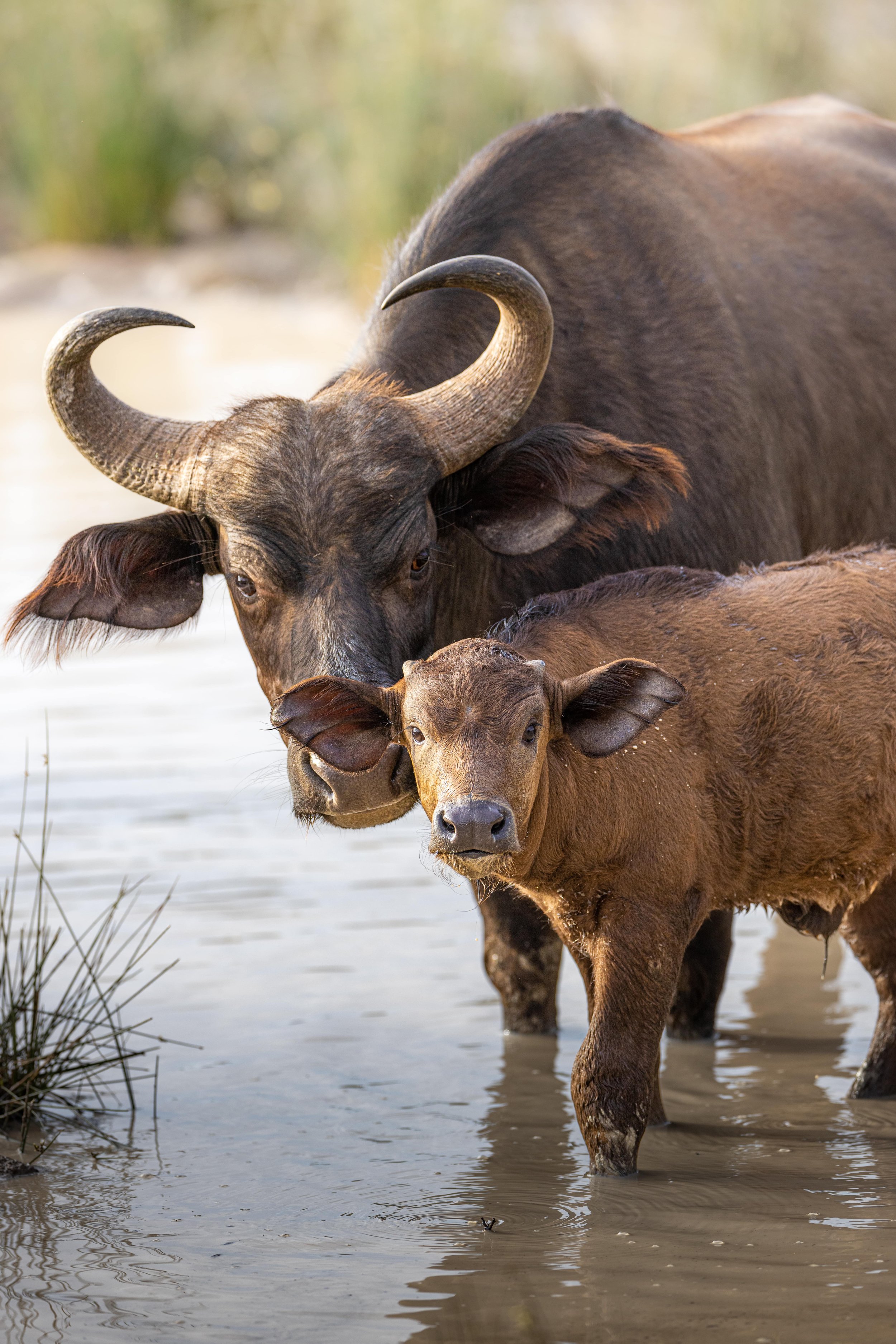
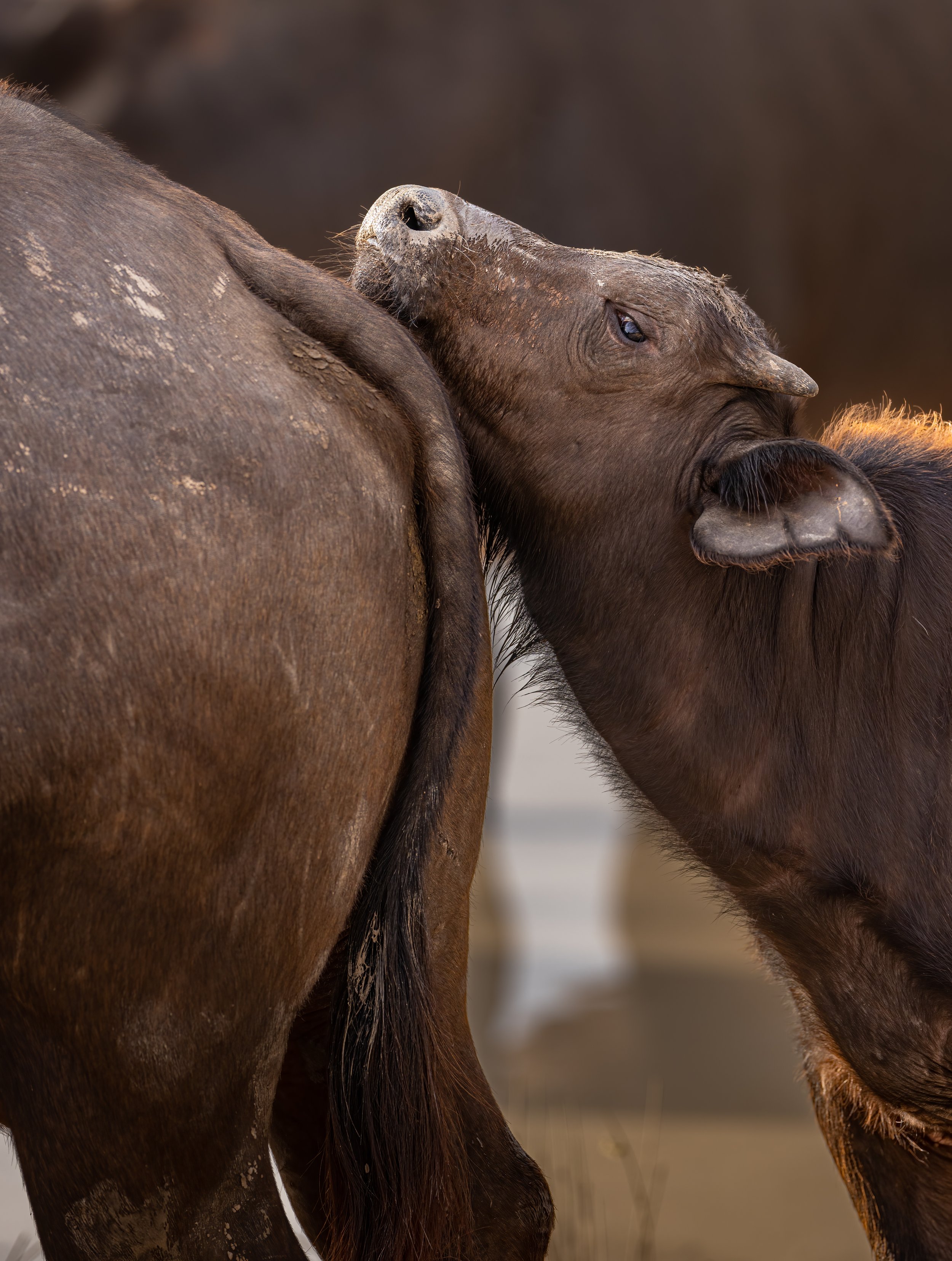
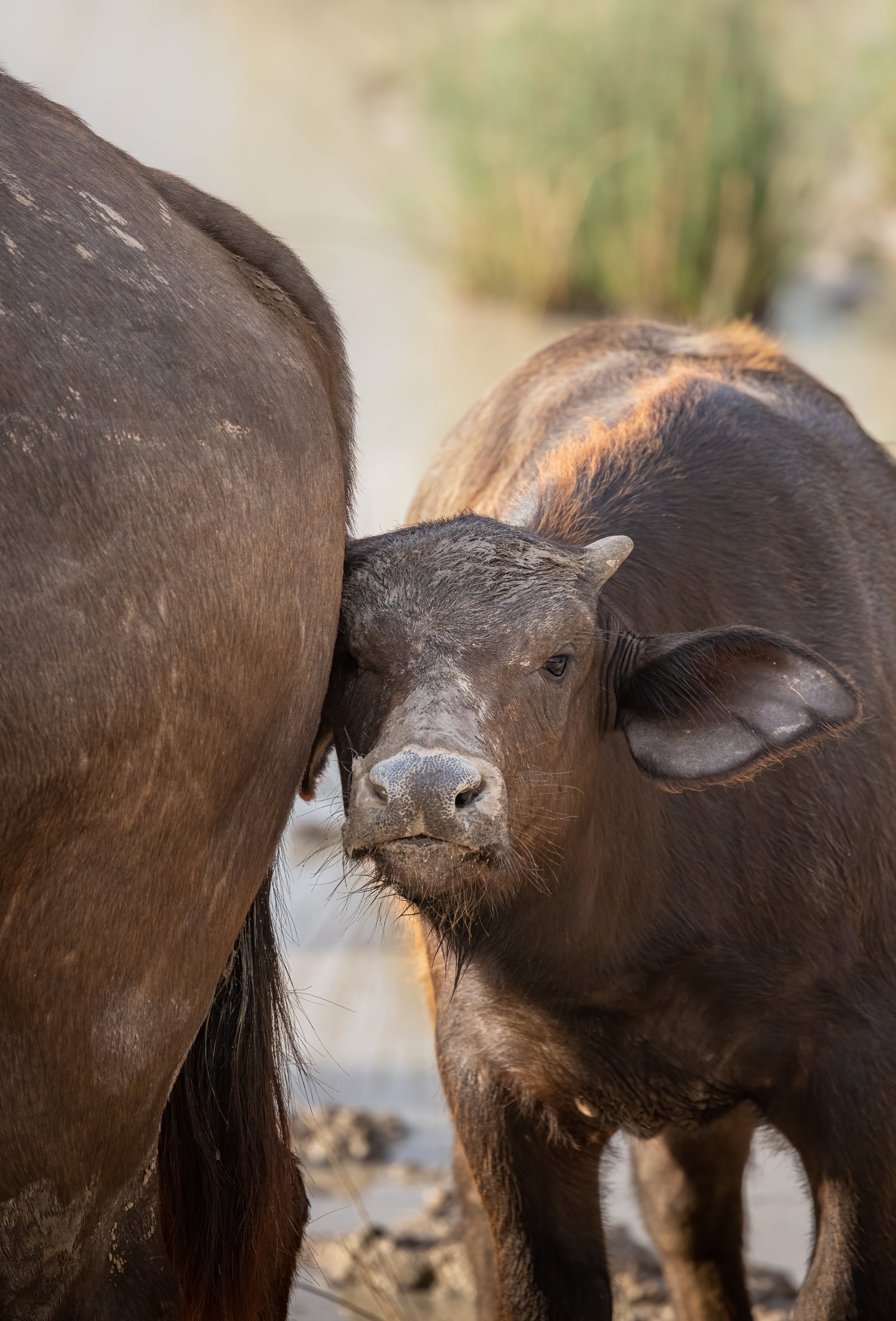
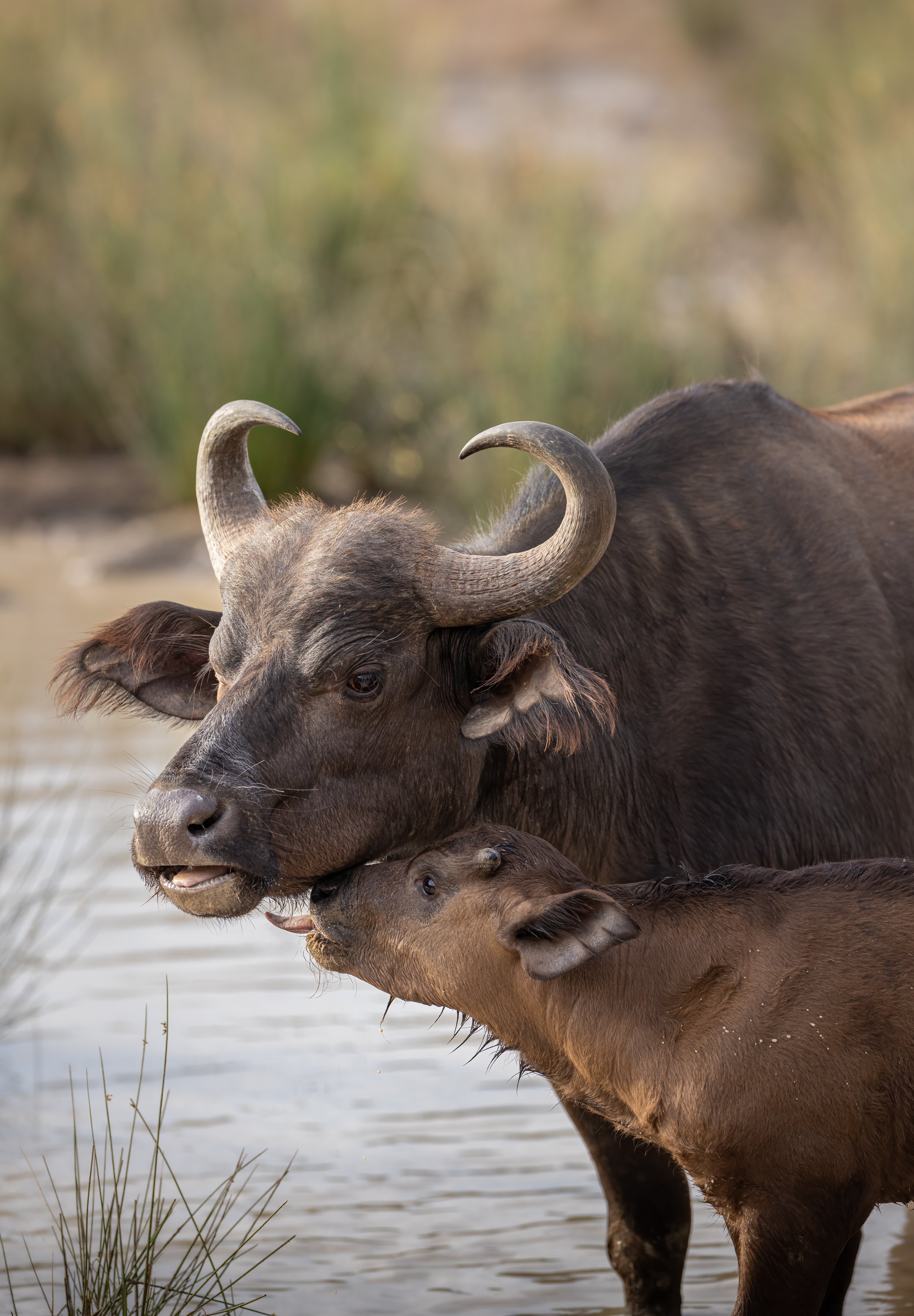
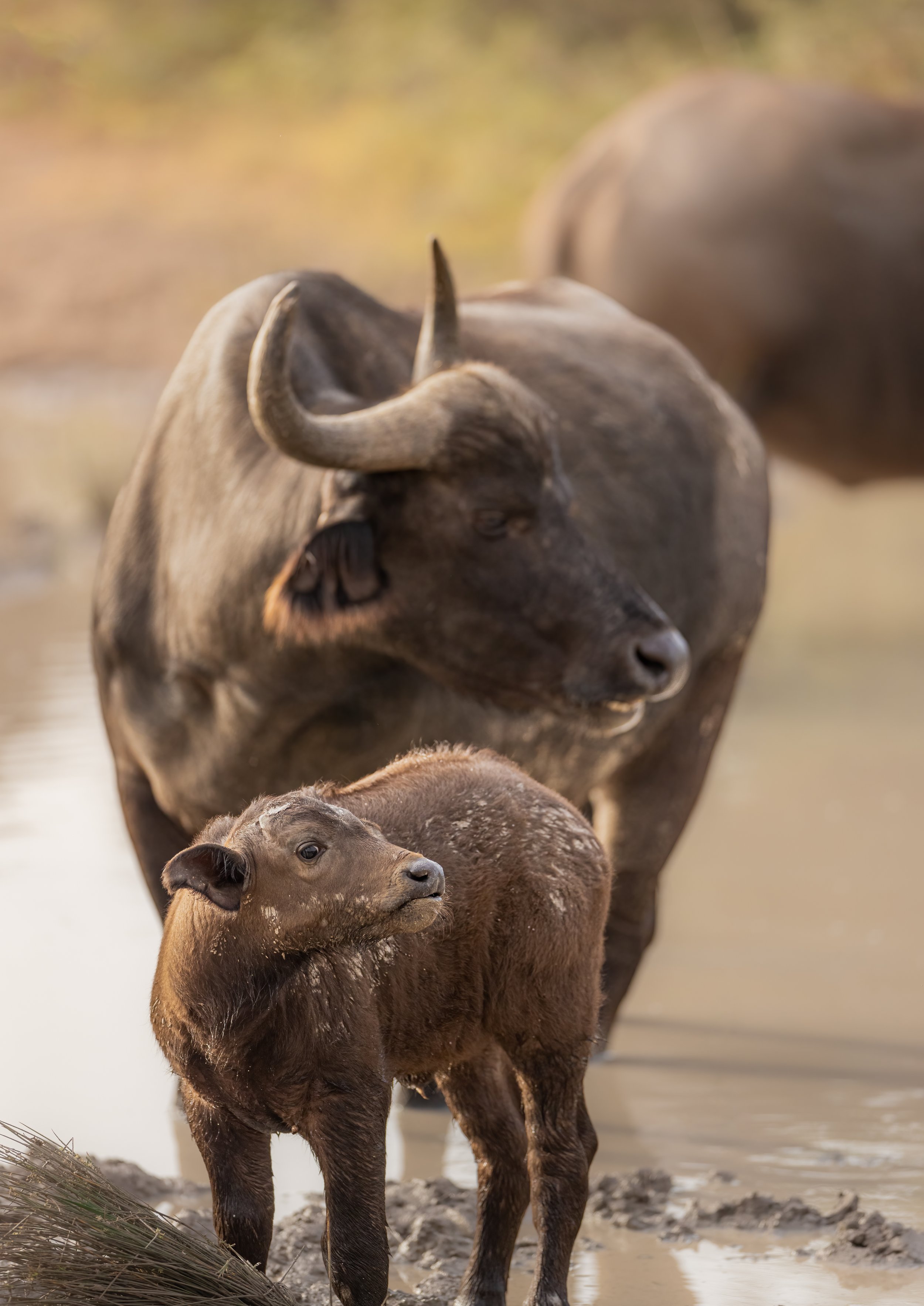
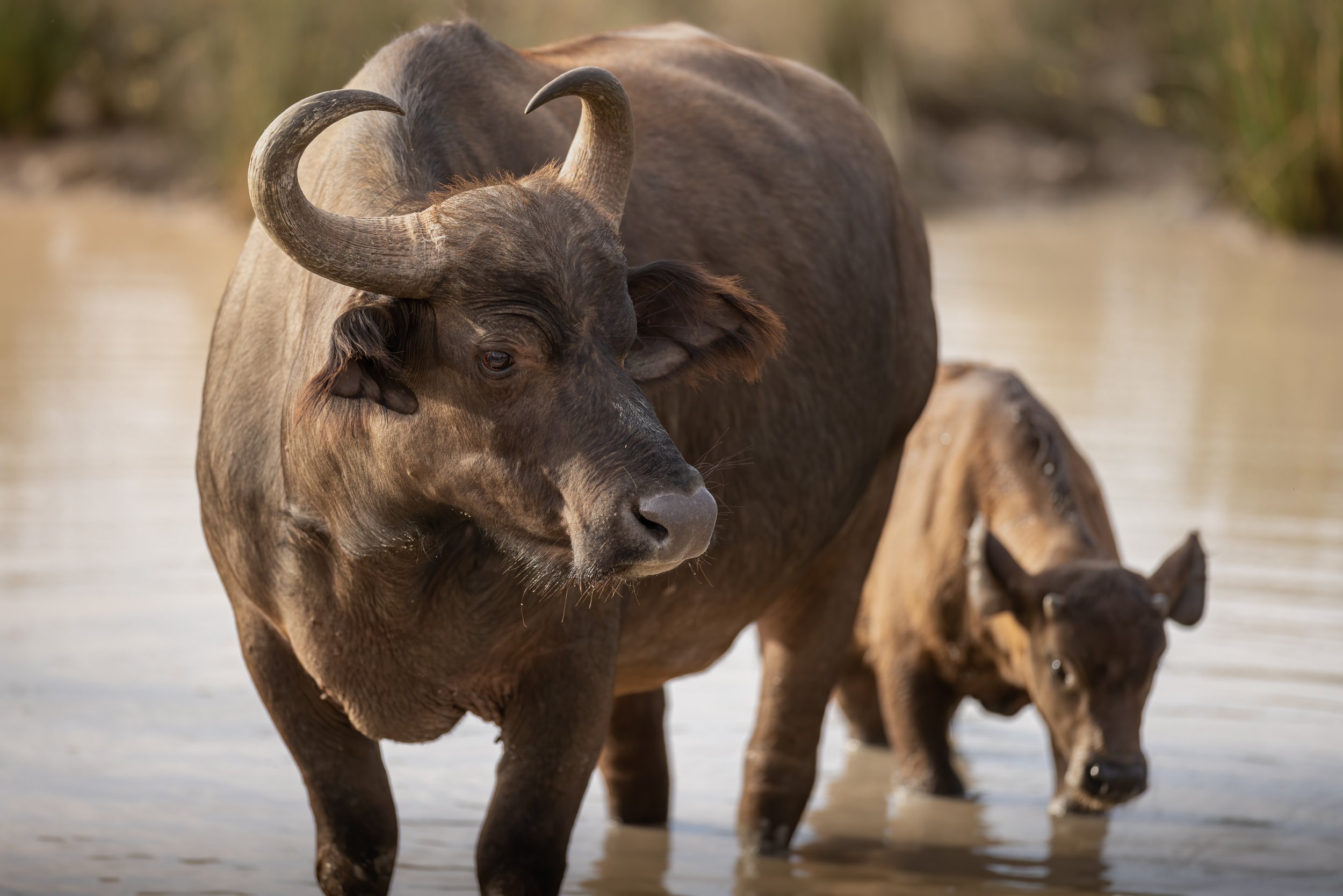
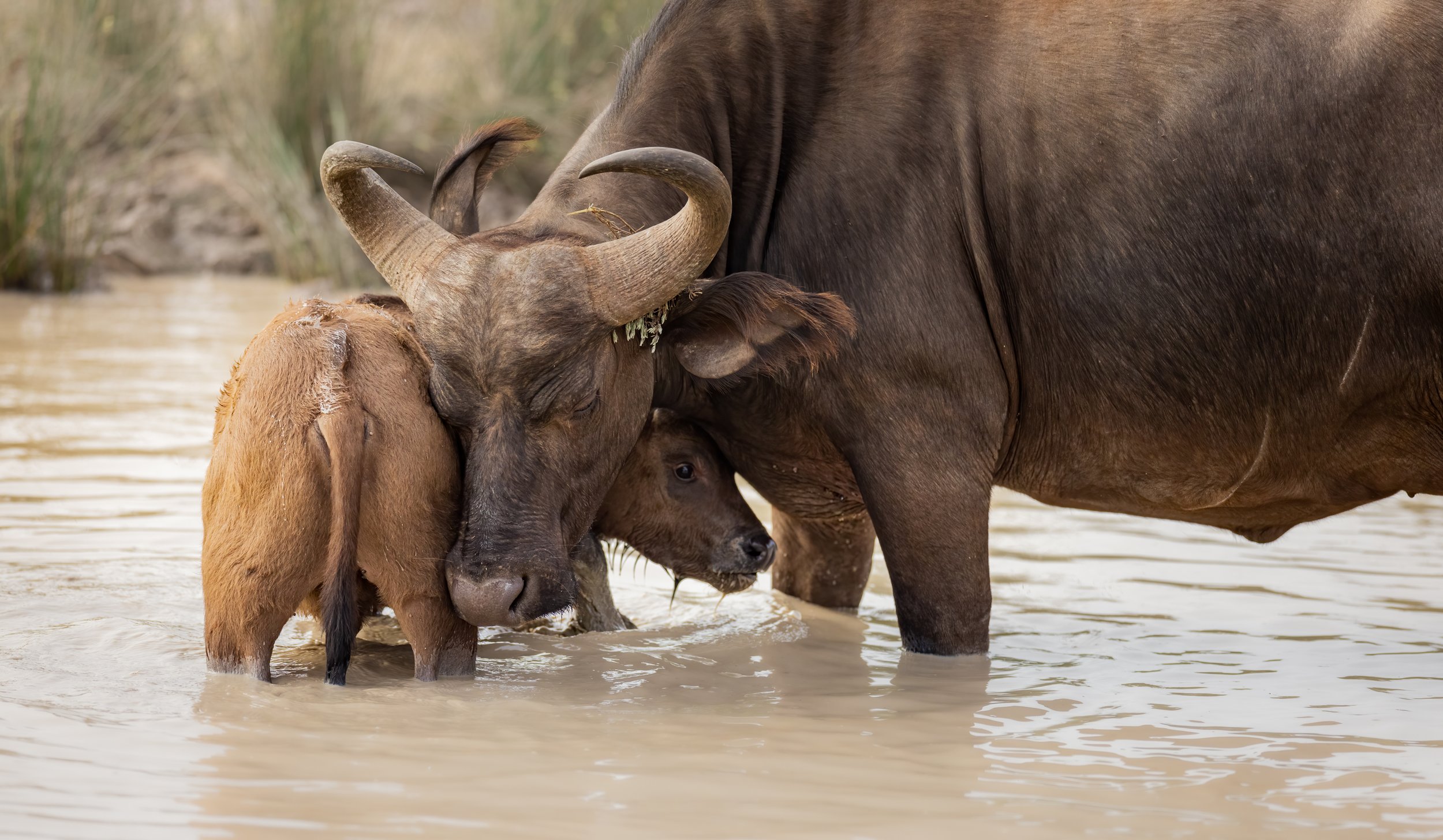
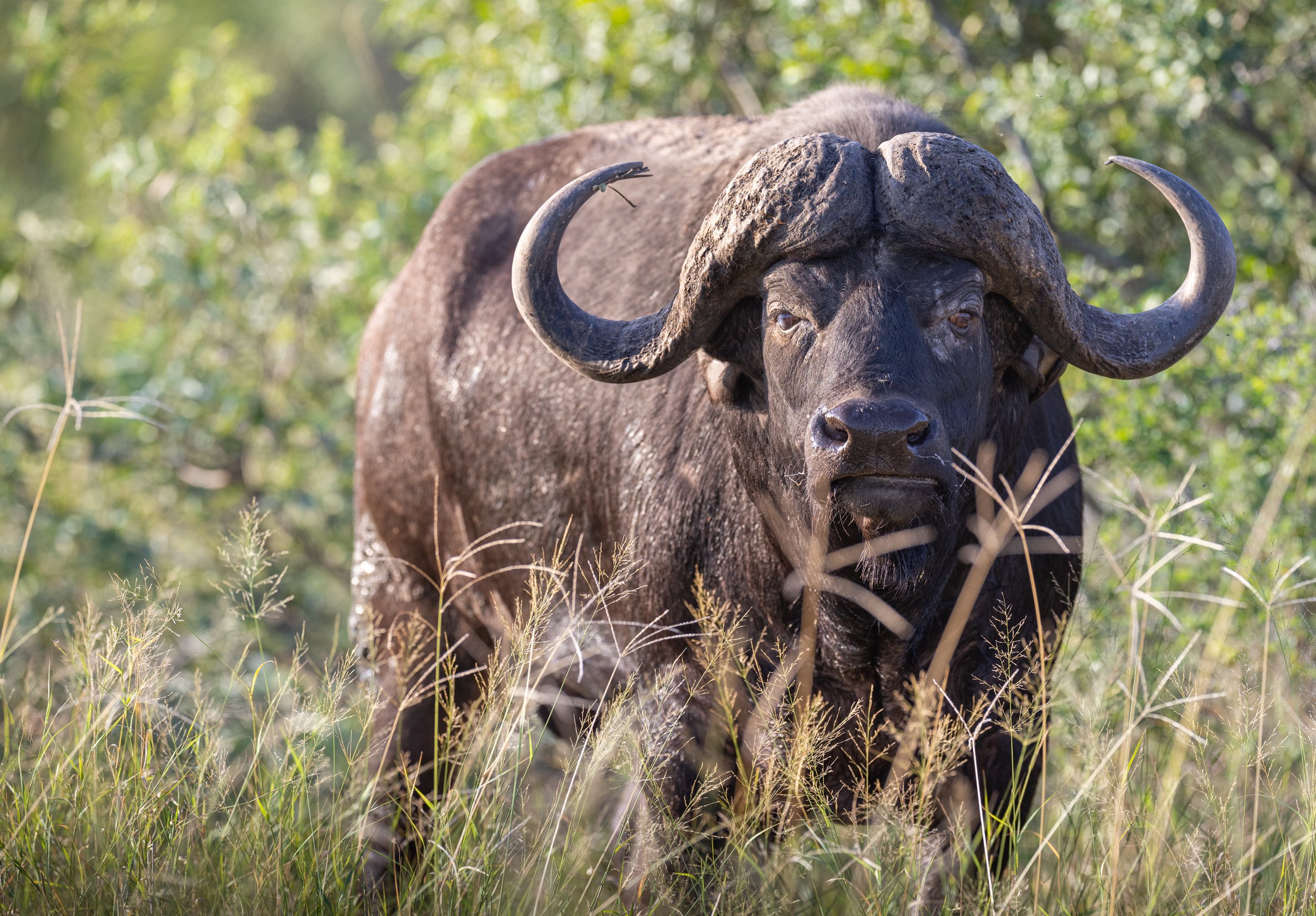
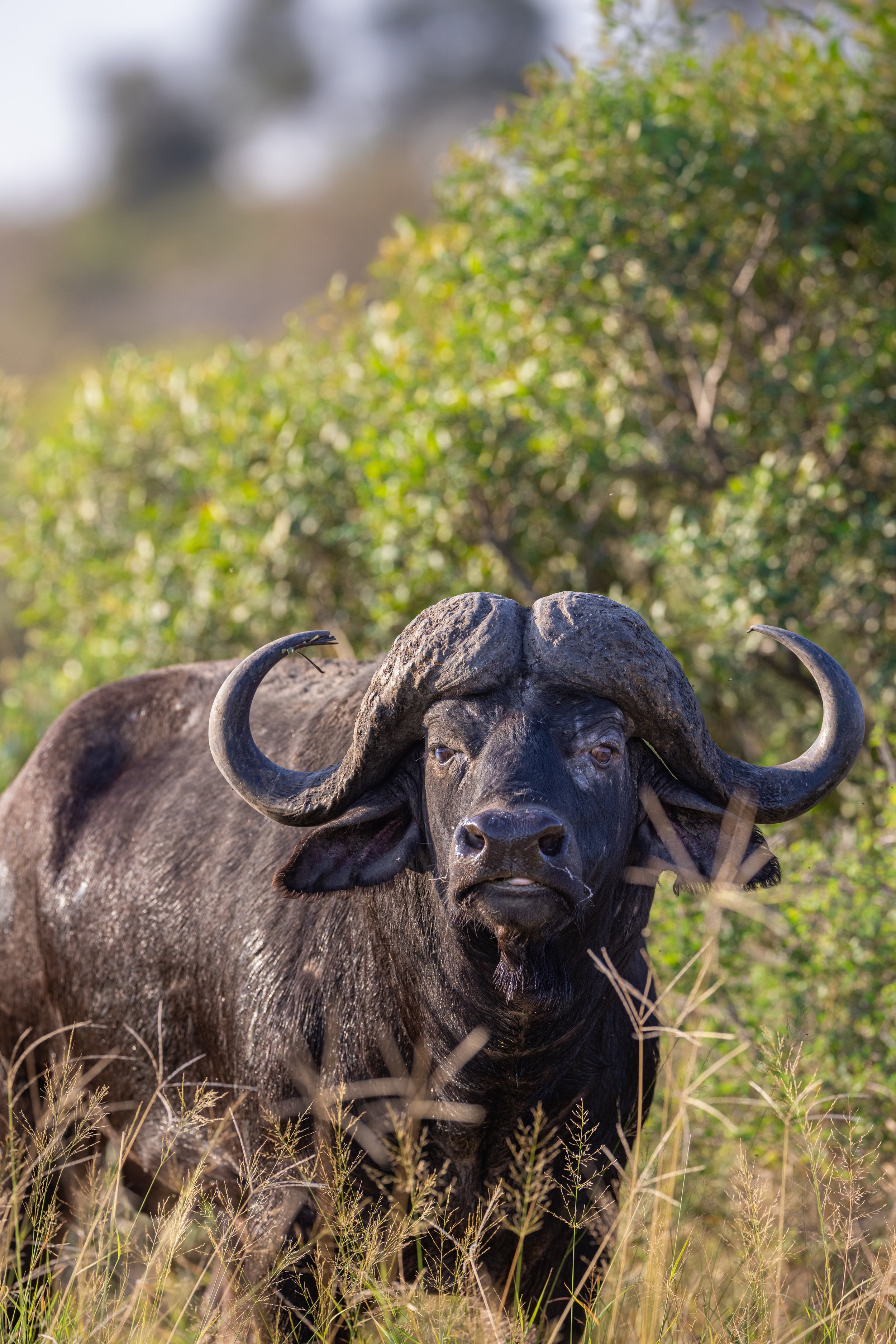
With that, a few highlights from Timbavati come to mind…
We had the opportunity to photograph a pride of 21 lions as they fought over a zebra carcass. They didn’t bat an eye at our vehicle as we drifted in closer, stopping inches from them as they ate. We were close enough to hear them chomping and chewing. It felt like we were in a National Geographic documentary. The cubs would playfully paw at their mothers and try to weave through the crowd for their chance to eat. While the elders lay in small groups, cleaning each other with bloated bellies and preparing for their nap. A truly unforgettable encounter.
The big cats continued to deliver.
On two occasions, in perfect golden “Africa” light, we were gifted a leopard in a marula tree.
Our first encounter was with a leopard our guides call, N’yeleti. She’s known for her sheer power, agility and stating her claim over the other leopards in the area. We found her with her limbs slumped over the tree trunk and eyes glowing in the sunset. Time stood still when she met our gaze. It was the picture perfect moment.

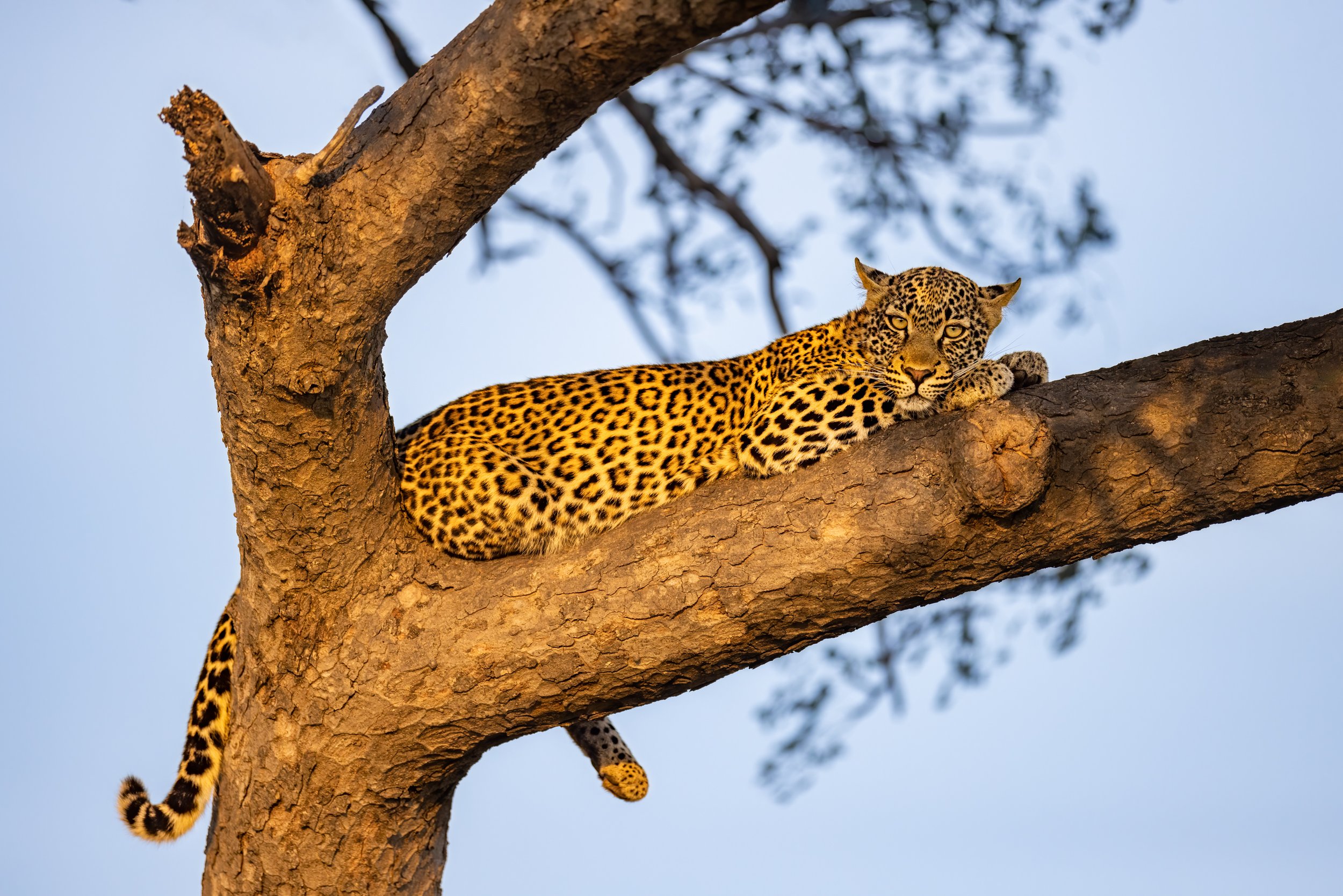
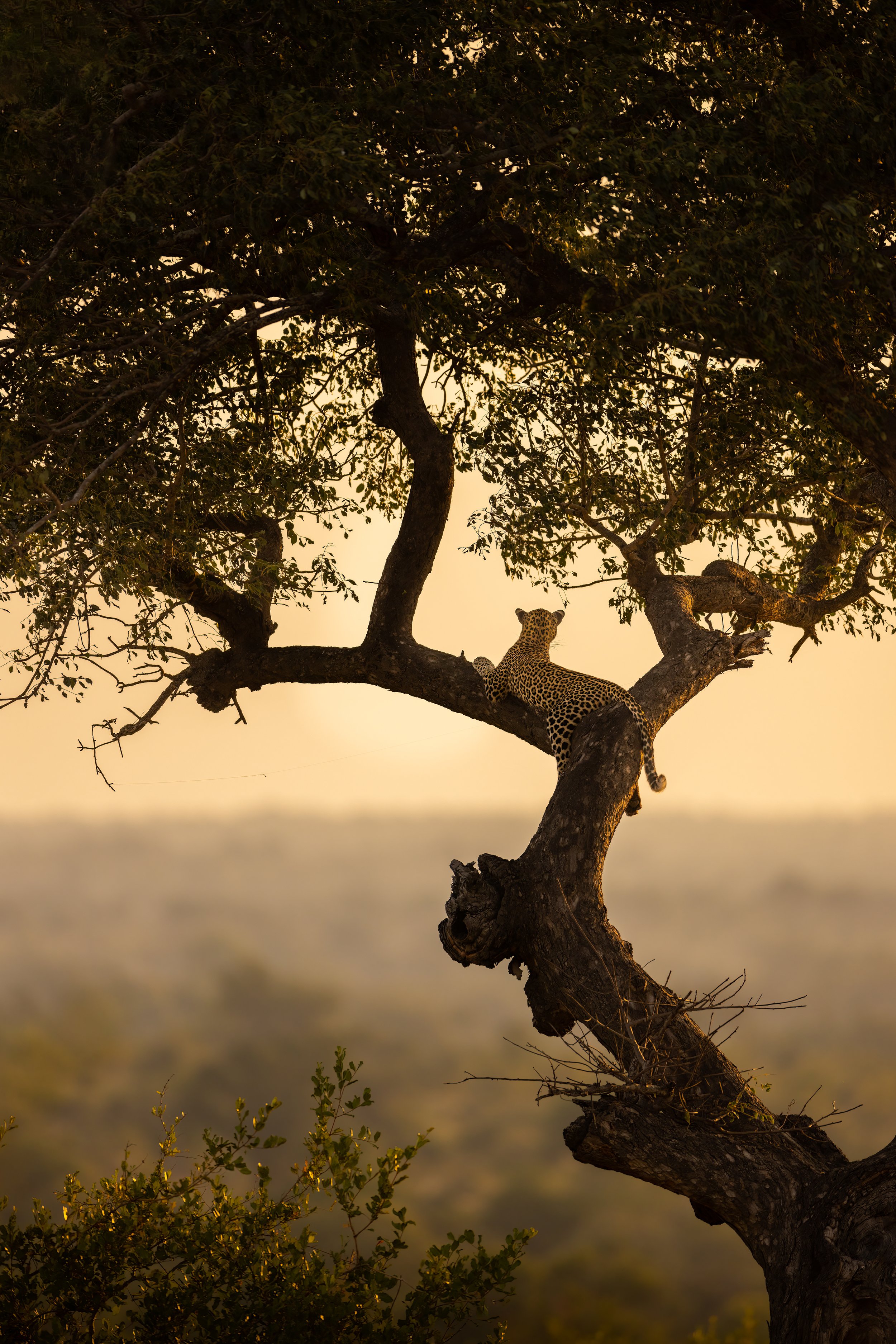
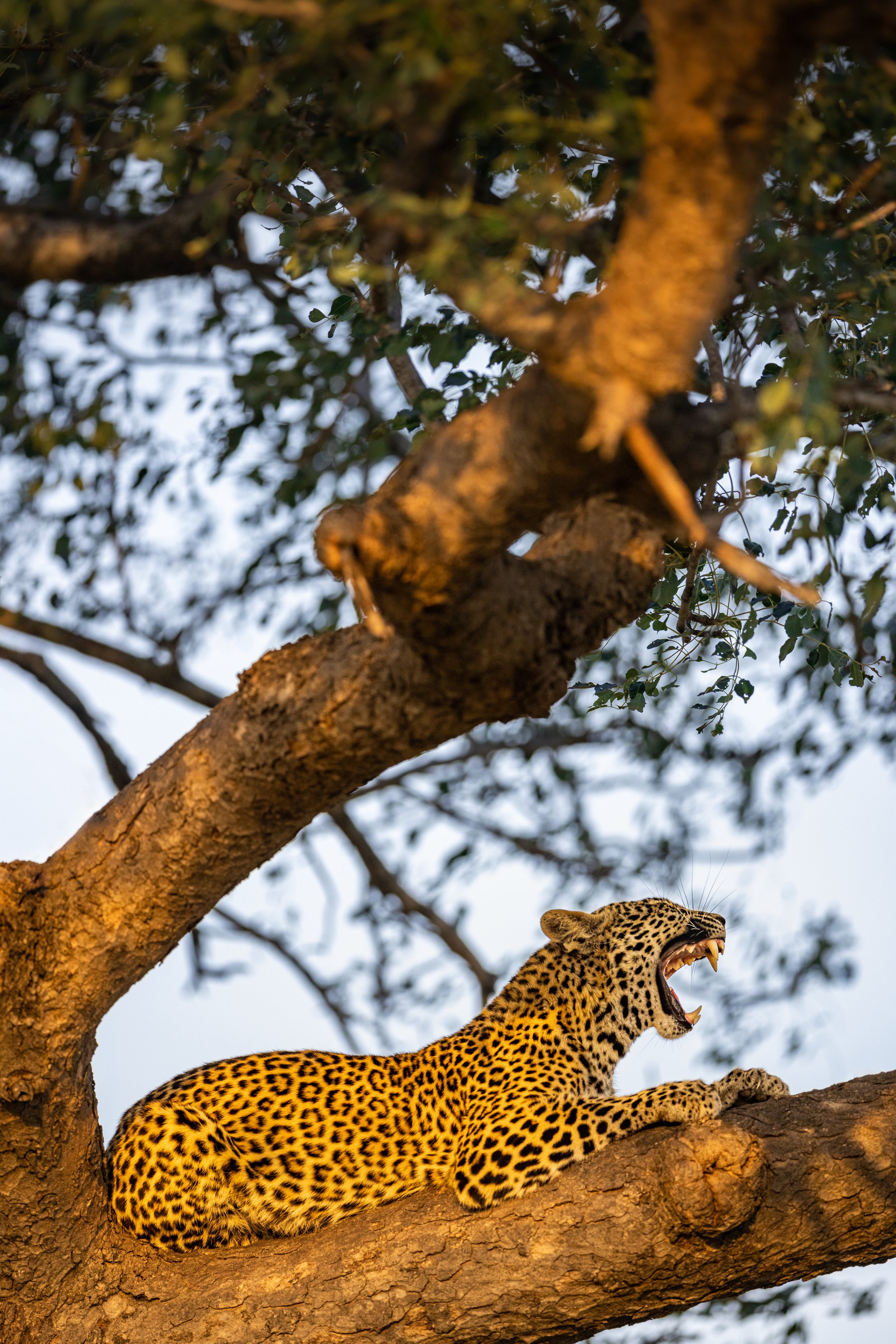
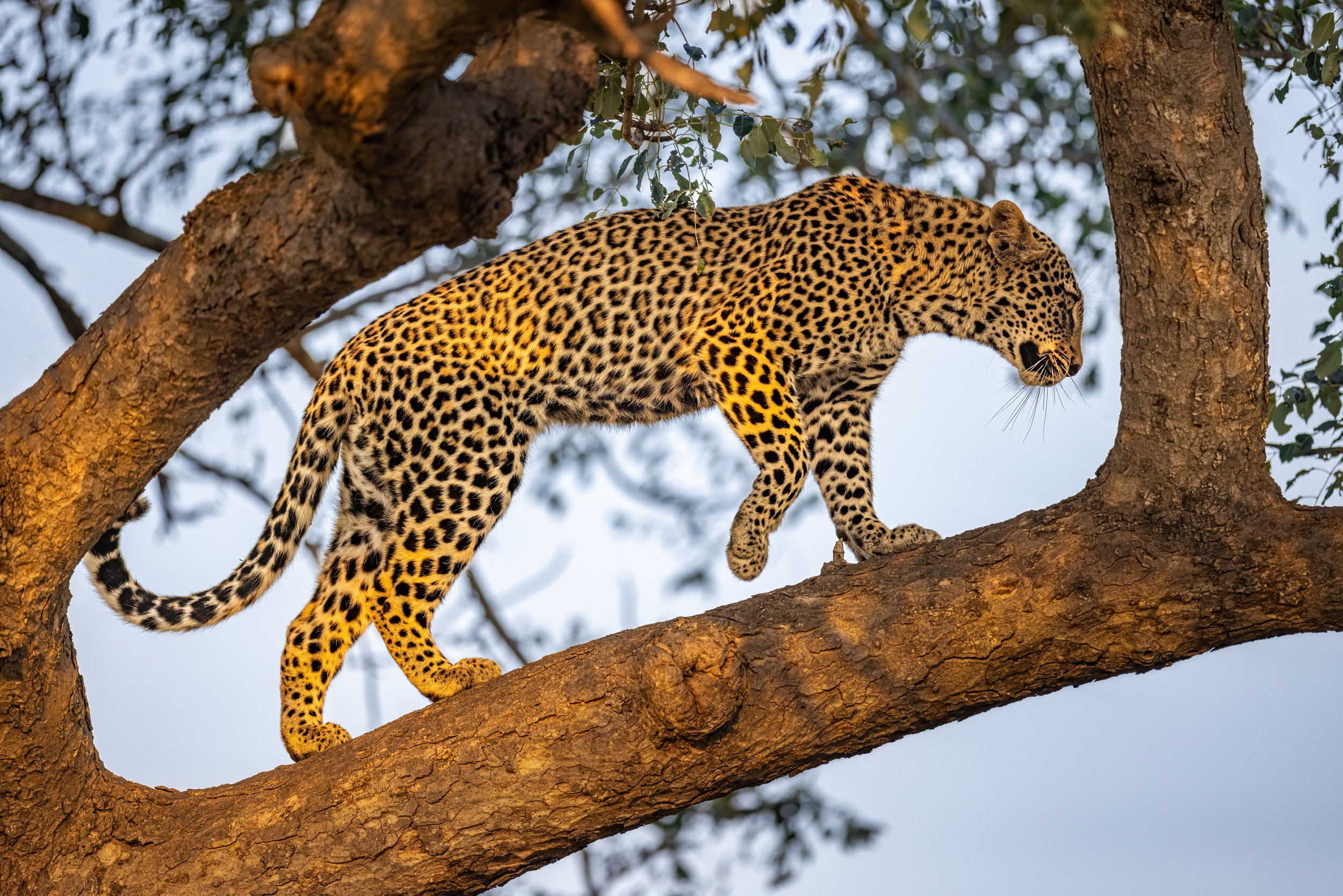
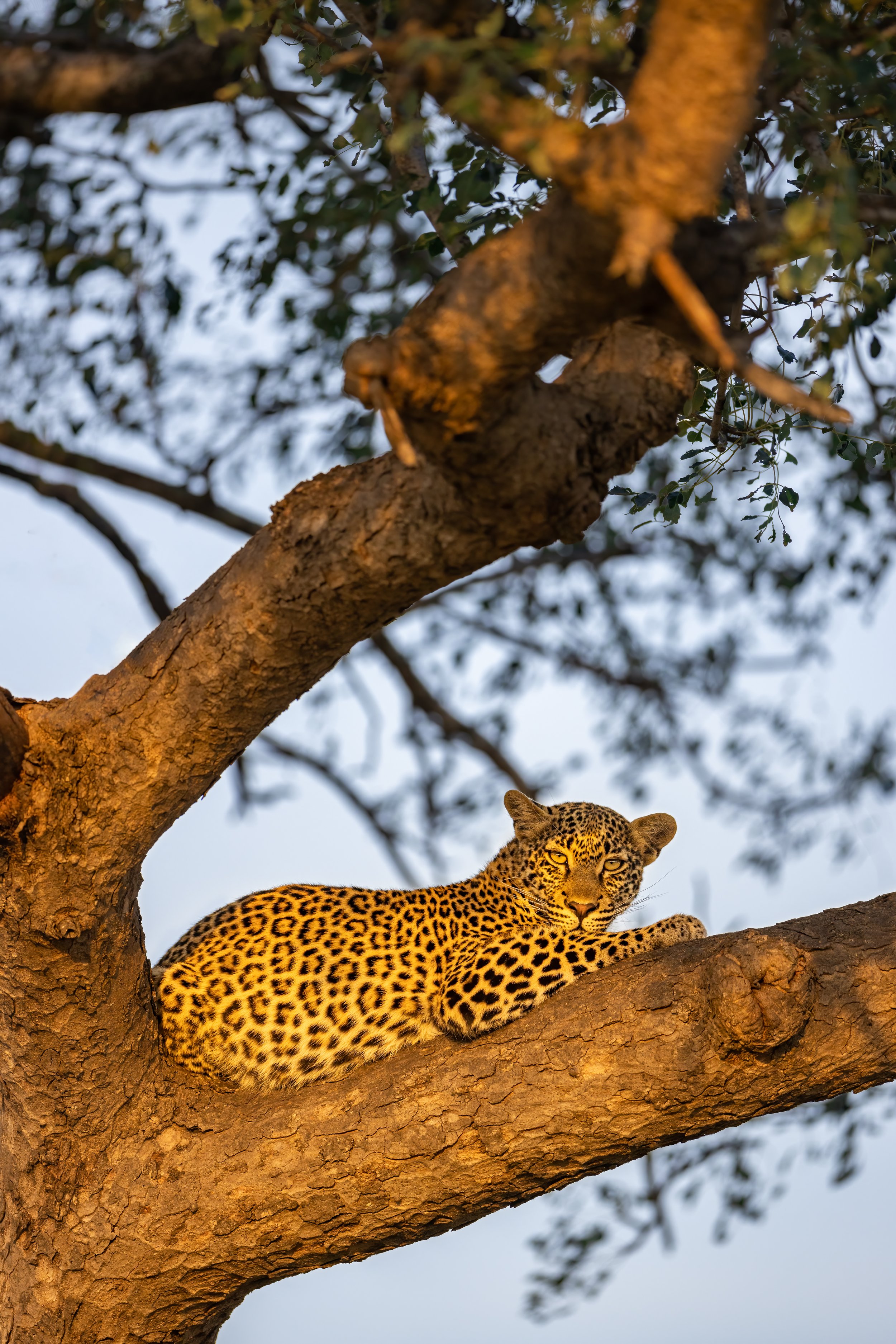

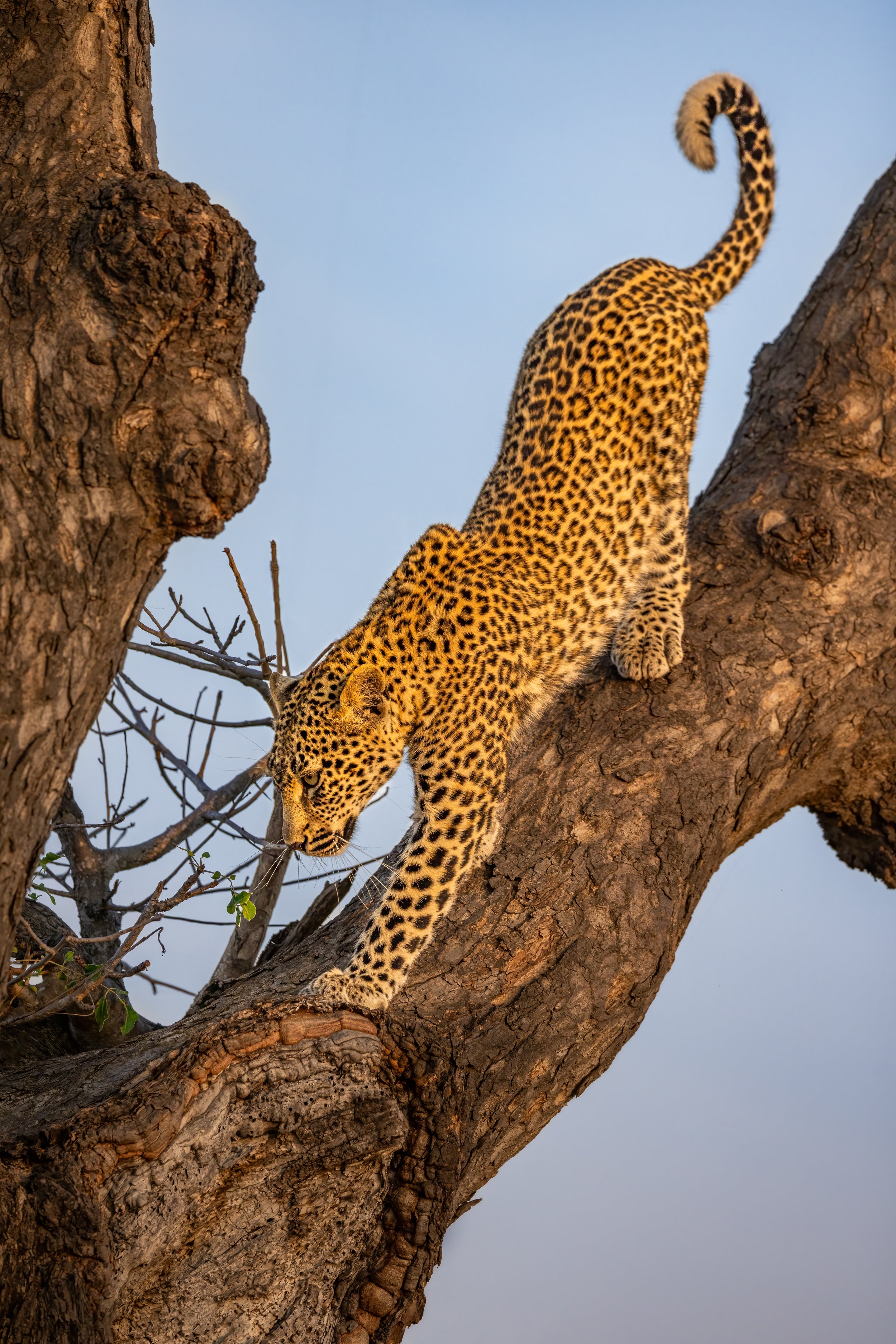
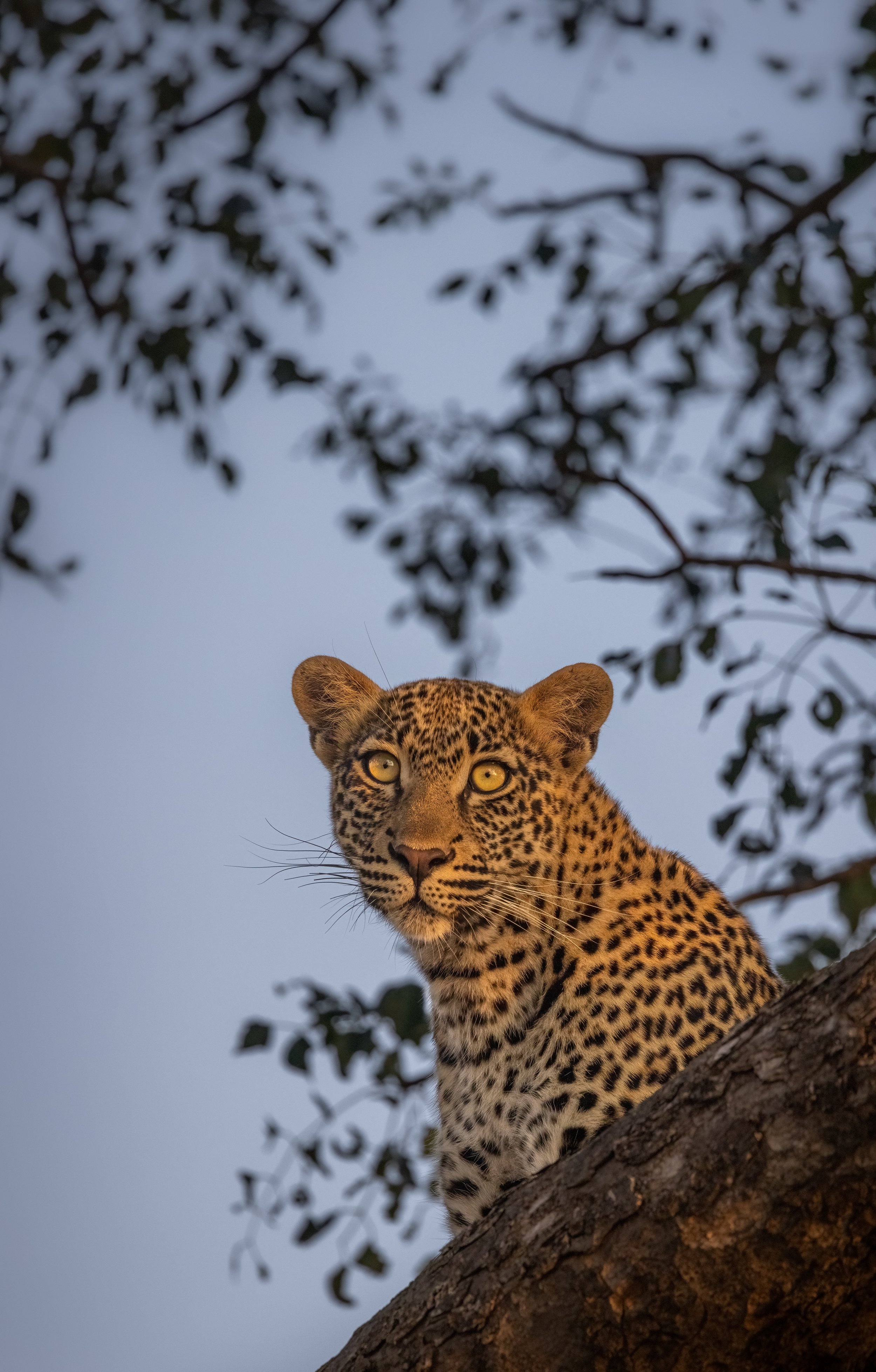
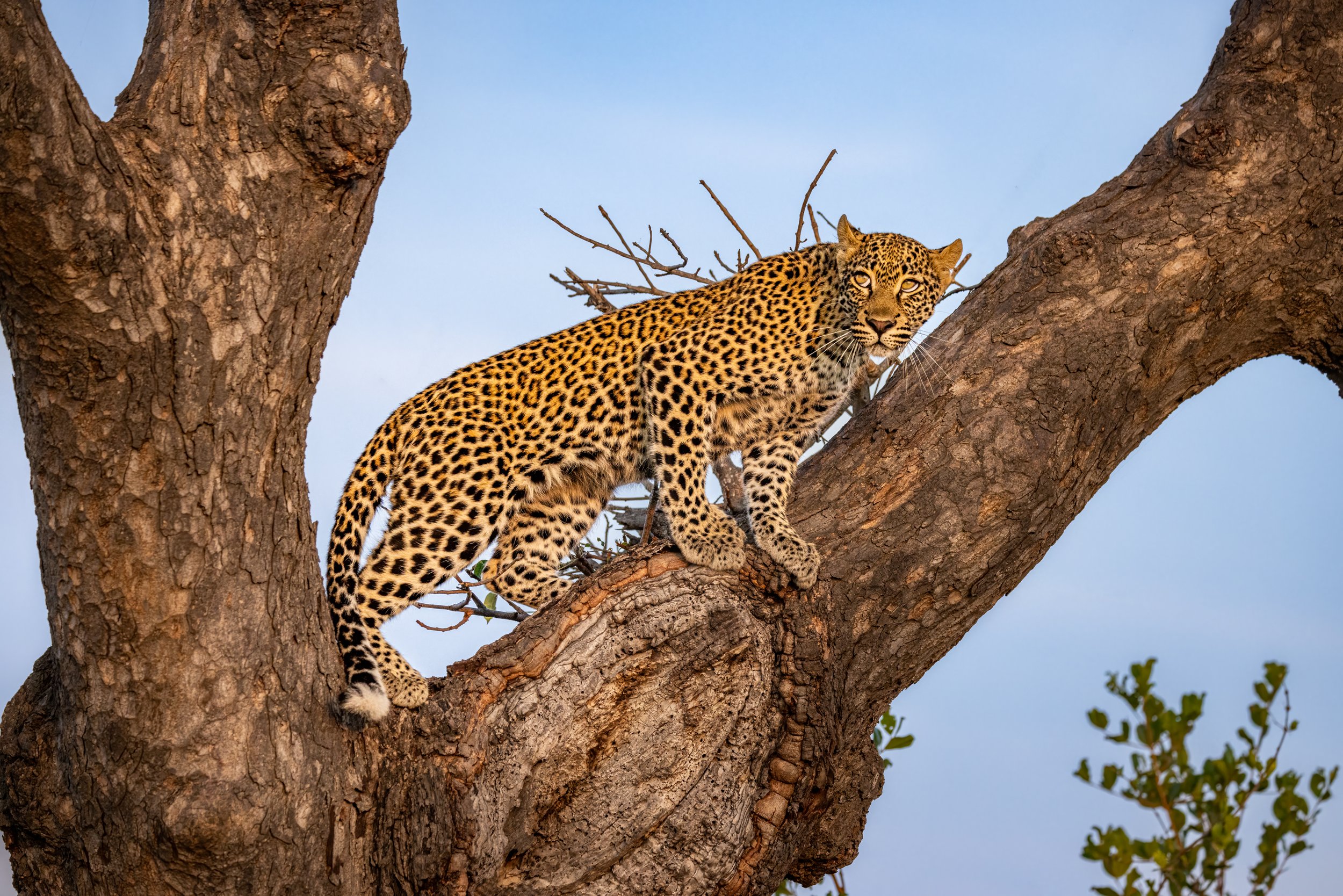
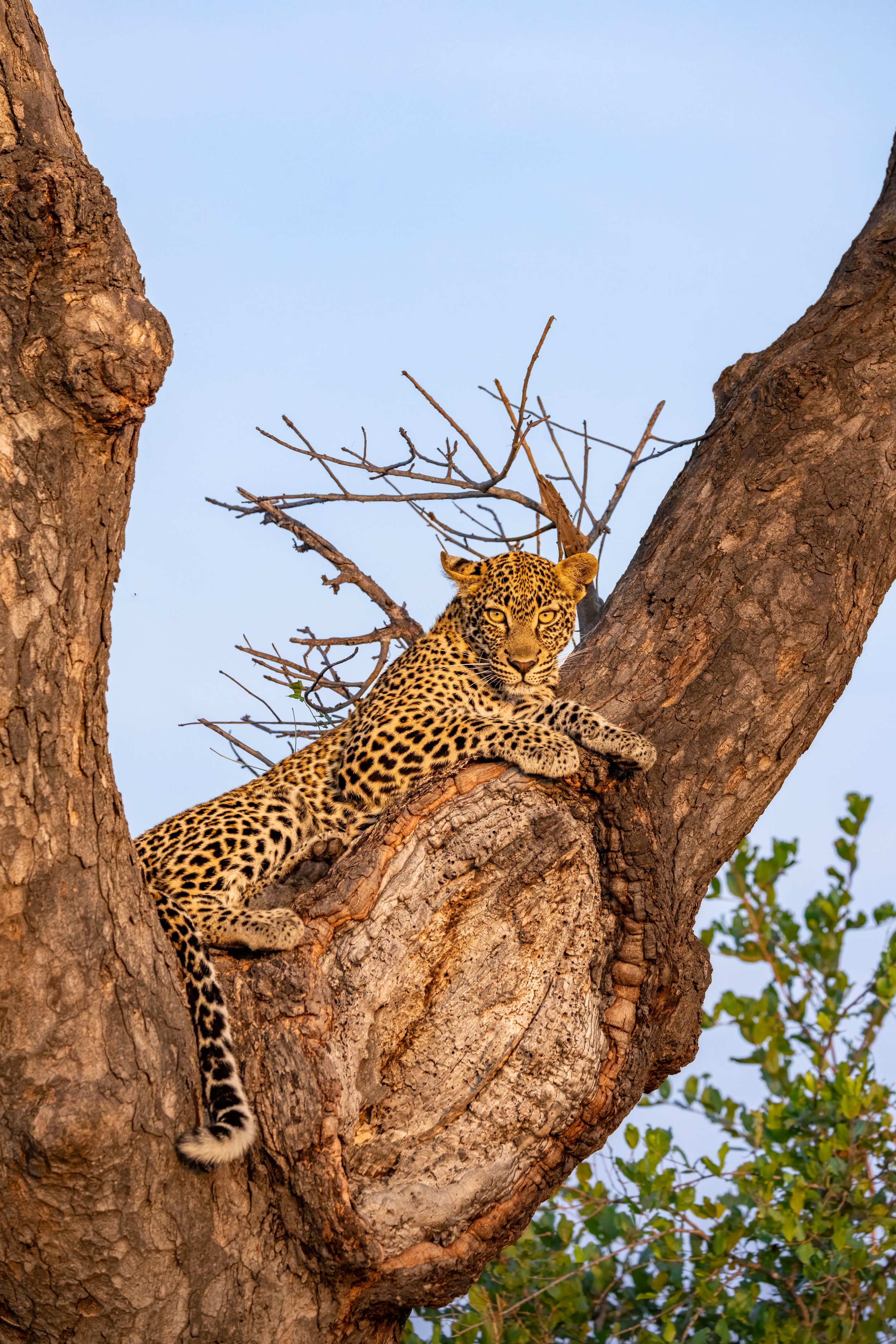
The following evening, our tracker discovered a lone impala carcass strung up in a marula tree. As we drove forward to take a closer look, we could see apparent signs of VERY recent leopard activity. Our guides constructed a plan to return to the kill sight later in the evening in hopes the cat would, in fact, come back. After making it back to the main road, we saw a leopard silhouette scale the tree in one bound and we quickly changed course to follow. Hearts pounding, we came up underneath the tree and shut off the engine.
At the foot of the tree, lay mom and sibling. The second cub stood perched precariously in the tree, keeping balance as he enjoyed the impala all to himself and kept a watchful eye on us.
Then, seemingly out of nowhere, a lone hyena appeared from high grasses and sat at the foot of the tree — waiting for scraps to fall from above. Mom and siblings were undisturbed by the hyena. He just laid there patiently, completely silent. Unfortunately, for the hyena, the leopard was a clean eater and didn’t share.
On the way back to our lodge the same evening, our guide burst into tears at the sight of a pangolin running on the road. It took us all by surprise. The scaly anteater quickly dove into a bush. The pangolin wedged himself into a thick collage of vegetation and our tracker, Lorrence, was able to peel a few branches back so we could admire him. Pangolin’s are a very rare sight due to illegal poaching and habitat loss, so we counted ourselves lucky. Our team radioed every guide in the area in hopes other researchers and conservationists could revel in our find.
We had countless noteworthy wildlife encounters, but to list them all would require us to be here all day. We captured thousands of images on this trip! We still have so many images to process and share with you.
From the awe-inspiring experience of being on safari to the warmth and hospitality of the local people, South Africa captured our hearts in a way no other destination has. Everywhere we went, we encountered friendly locals who were eager to share their knowledge and culture with us.
Looking ahead, we've already scheduled two photography workshops in South Africa for next April. In fact, we only have two spots remaining for April 2024’s trip! We're excited to include Cape Town in our pre-safari itinerary next year, and we’re especially looking forward to visiting Boulder Beach where we'll have the chance to walk with African penguins in their natural habitat.
To learn about our South Africa photography workshops. visit our website HERE.
April 5th - 15th, 2024 - 2 SPOTS LEFT!
For those curious about camera gear required to join a photography workshop like this: Due to our close proximity to wildlife, we were able to pack light. Not only did Jesse and I get away with carry-on only luggage (thank you compression bags!), we also paired back our gear list.
Jesse and I both shoot with the Canon R5 mirrorless. Jesse shot the entire trip using the EF 24-70mm 2.8, RF 70-200mm 2.8 and the RF 100-500mm, and I rented the RF 400mm 2.8 prime lens, which didn’t leave my camera body…not once!
But, if we’re being completely honest, even guests with an iPhone or an entry level DSLR would do well in South Africa. Lighting conditions are favourable most of the day and the wildlife do come within a few feet.
We would like to extend a heartfelt thank you to all of the guests who attended our photography workshop in South Africa. We are so grateful for your enthusiasm and support, and we hope that you enjoyed the experience as much as we did! We were inspired by your creativity and passion for photography, and we look forward to seeing the amazing photos you captured during the workshop.
Whether you're interested in wildlife, culture, or simply exploring new places, South Africa is a destination not to be missed.
www.instagram.com/followmenorth
www.followmenorth.com


